Welcome to my blog. My goal for the blog is to provide a venue for sharing information, photos, and stories related to wildlife species behavior, biology, and life history. Additionally, I hope to provide information related to wildlife photography techniques and issues from time to time.
Enjoy.
Lake Clark National Park
My wife Becky and I visited Silver Salmon Creek Lodge within the Lake Clark National Park during mid-September 2021 for a week. Our goal was to photograph coastal brown bears in a natural environment. Our trip was timed to catch the end of the salmon run on Silver Salmon Creek. Lake Clark National Park is about 4 million acres and is located on the western side of the Cook Inlet in southern Alaska. The park contains 2 active volcanoes (Mount Iliamna and Mount Redoubt) and some incredible wilderness scenery.
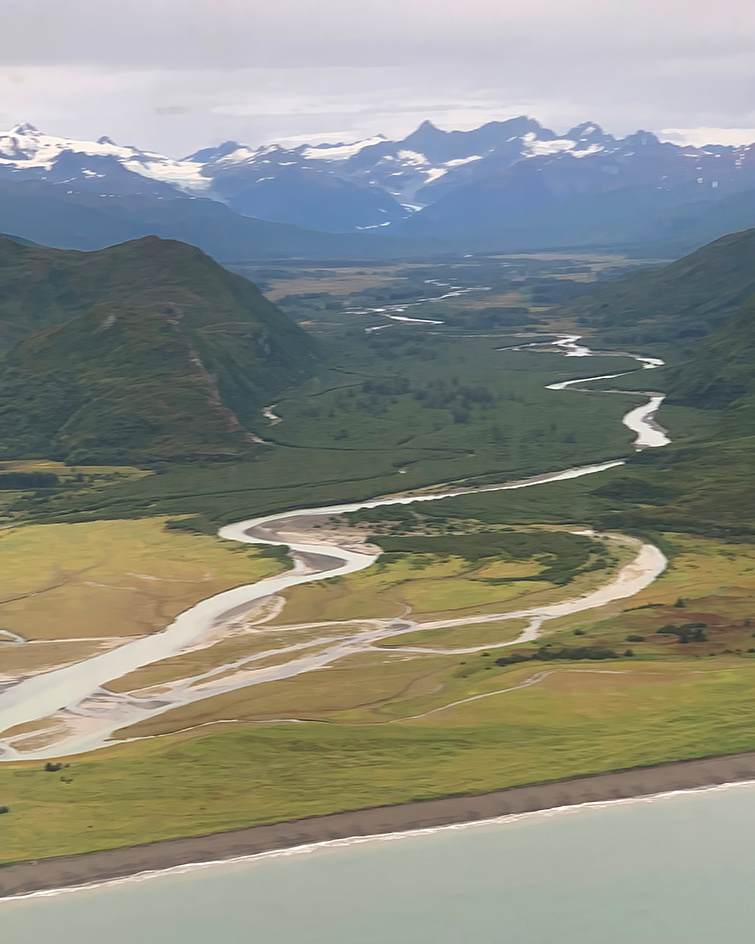

The Johnson Creek watershed which forms the northern boundary of the area worked by the lodge. (I-Phone photo from the plane. Courtesy of Becky Bogener)
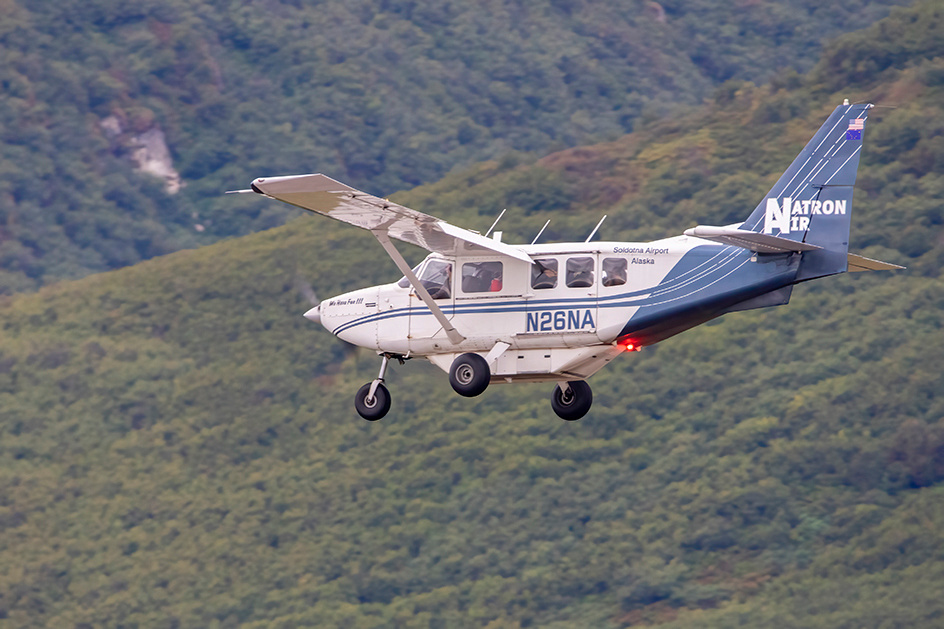

We flew on Alaska Airlines from Redding to Anchorage and rented a car for the scenic 3 hour drive to Soldatna. The next morning we flew on an Australian bush plane from Soldatna to the lodge. Our pilot Tim, brought us in for a very smooth landing on the beach during low tide. We were met on the beach by Oliver Coray, the owner's son. Oliver helped us unload and quickly reloaded outgoing passengers who immediately took off. We were transported to the lodge in custom-made aluminum carts pulled by Honda ATVs. Note the lack of suspension on the carts.


We observed two bears from the plane while landing and were more than ready to get the photo gear unpacked. Wolf and bear tracks were present on the beach.
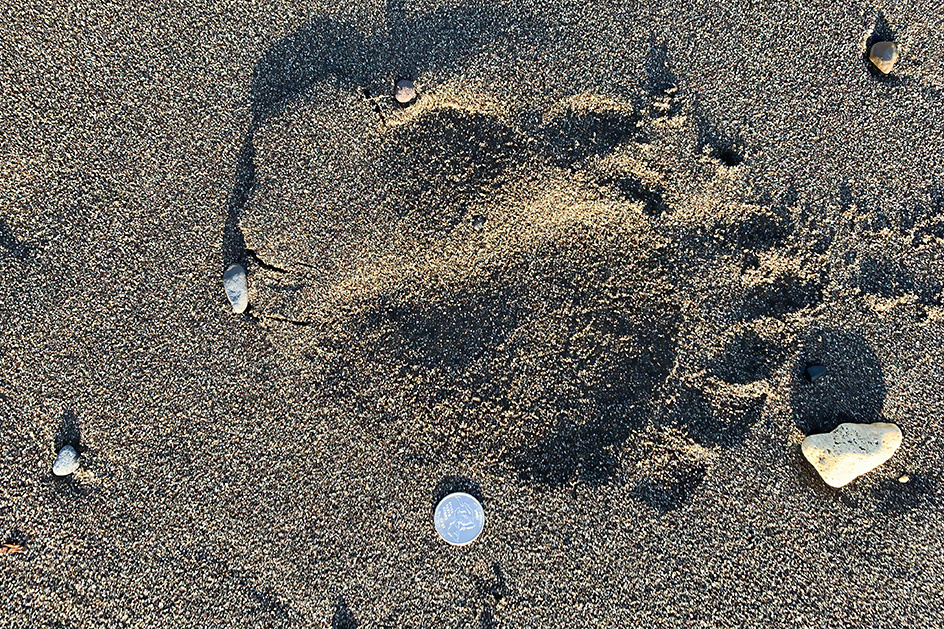

Bear Tracks
We unpacked quickly and were provided with rubber knee boots and a brief safety discussion from our guide Rob. We immediately headed for the bears we had seen from the air which were being closely followed by a group of photographers. We immediately discovered that the bears were very acclimated to close human presence. For most photo opportunities, a 70-200mm lens would have been entirely adequate. Some big prime lenses were in use, but most photographers used some form of telephoto zoom lens. We observed the bears clamming on the exposed mudflats of the inlet. They were very efficient and consumed dozens (shell and all).
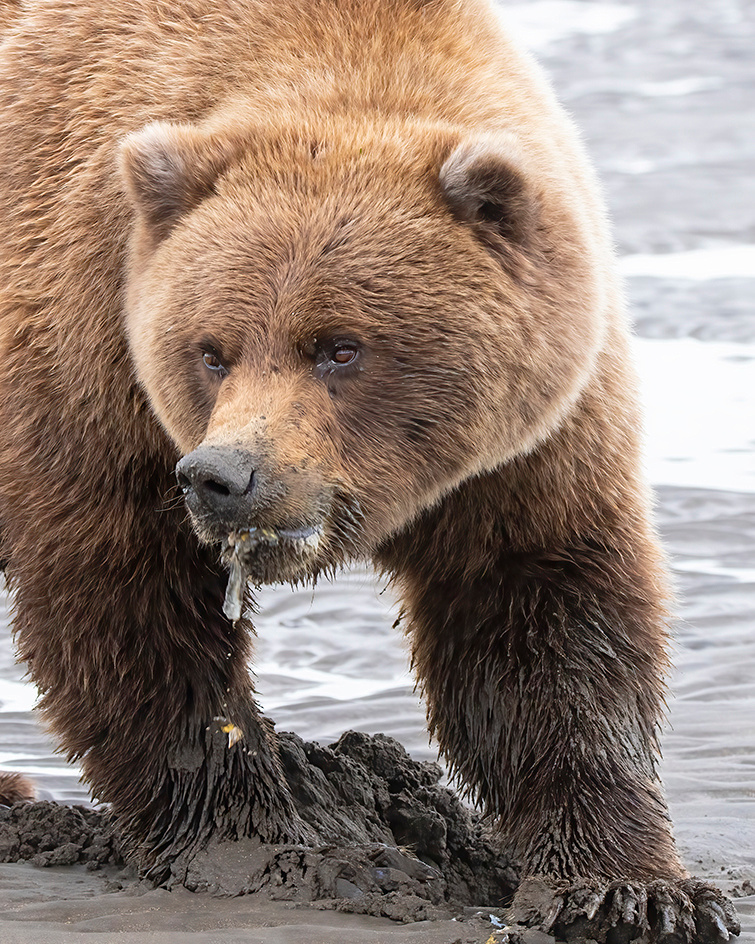

Digging up clams.
After a productive morning photo shoot we headed into the lodge for lunch at 1pm. The lodge employs a small staff including a chef and a baker. Both were excellent. We also met our hosts David and Joanne Coray. Very genuine and welcoming hosts. After lunch we opted to take a scenic coastal boat tour along the coast north of the lodge to Chisik Island and Bird Rock, a cliff nesting site for a variety of seabirds including puffins. We saw several horned puffins and a few common murres, but obtained no decent photos. Apparently we were several weeks behind the peak of nesting activity. I was able to photograph one of the two peregrine falcons perched on Bird Rock from the boat. Beautiful birds.
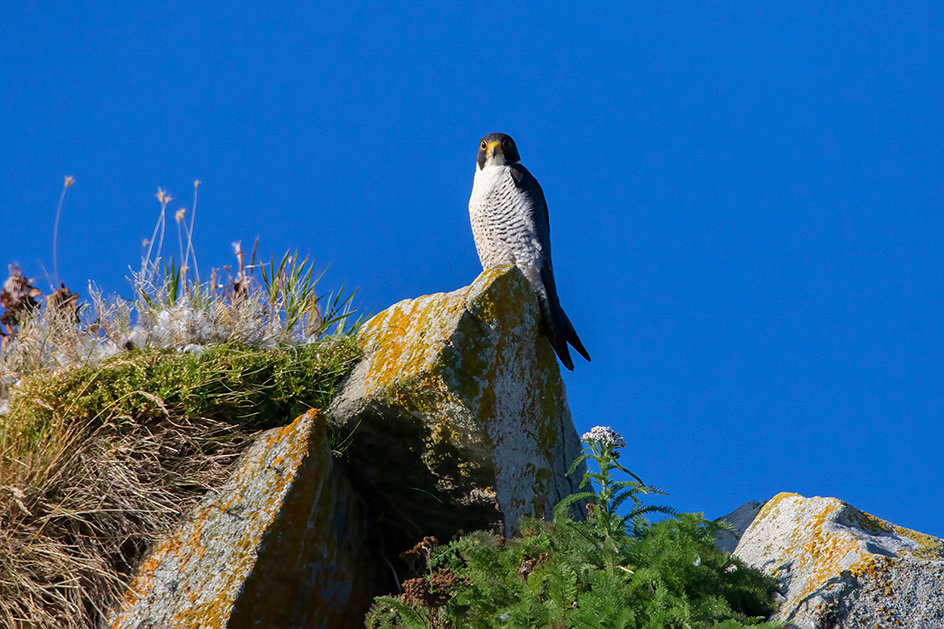

We saw little signs of human activity during the cruise. One rare exception was when we did cruise by an abandoned seafood cannery. We briefly landed on a stony beach to explore some bivalve fossil imprints and stretch our legs.


Abandoned seafood cannery.
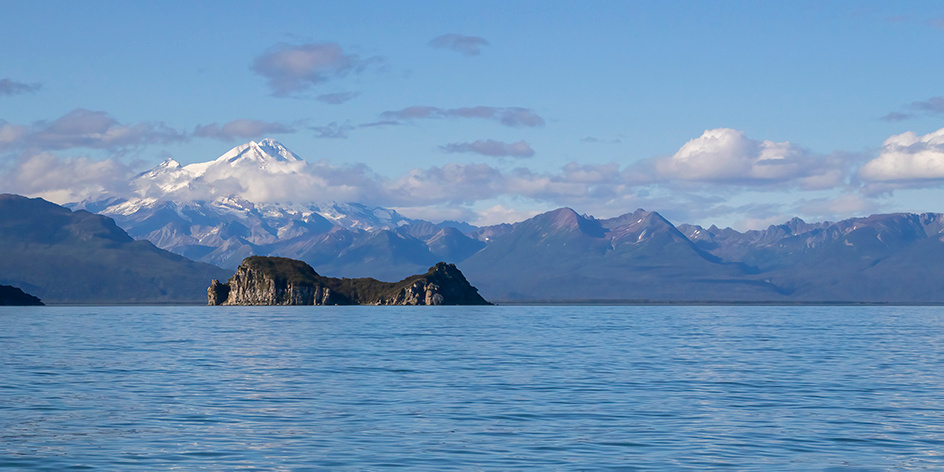
 Chigmit Mountains in the background and Chisik Island in the foreground.
Chigmit Mountains in the background and Chisik Island in the foreground.
We returned to the lodge in time for happy hour, a daily communal gathering in the Wheelhouse. We enjoyed Alaskan Amber Ale and wine with a friendly group of photographers. I was somewhat suprised that many within the group were repeat customers. One husband and wife duo were on their seventh or eighth visit.
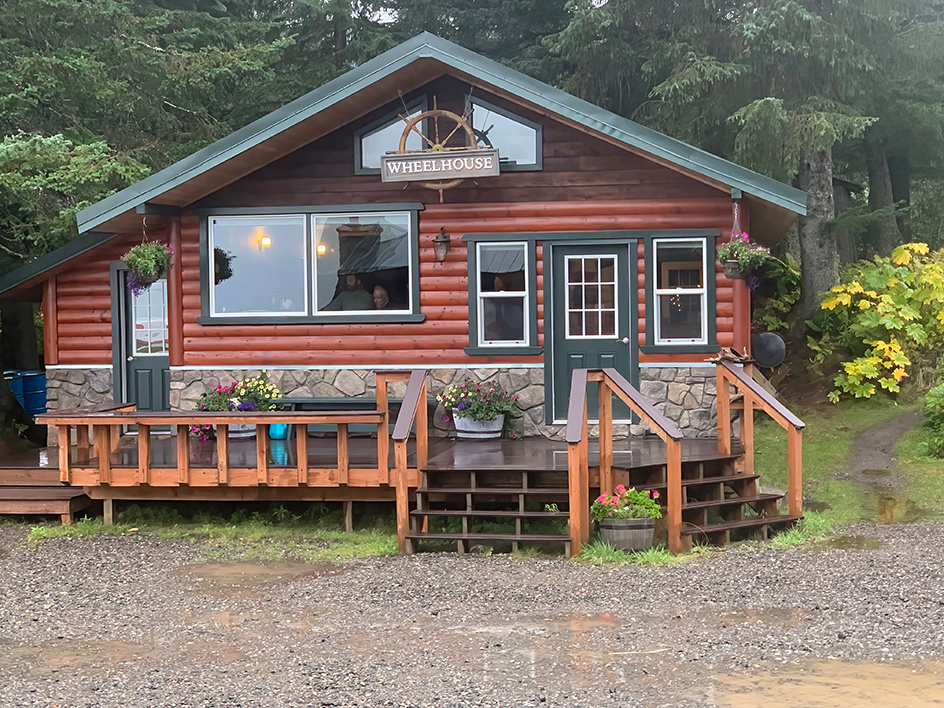

The Wheelhouse. Wifi and happy hour.
Silver Salmon Creek Lodge was originally a remote fishing lodge and still offers quality guided fishing for both salmon locally and within the Cook Inlet for halibut.
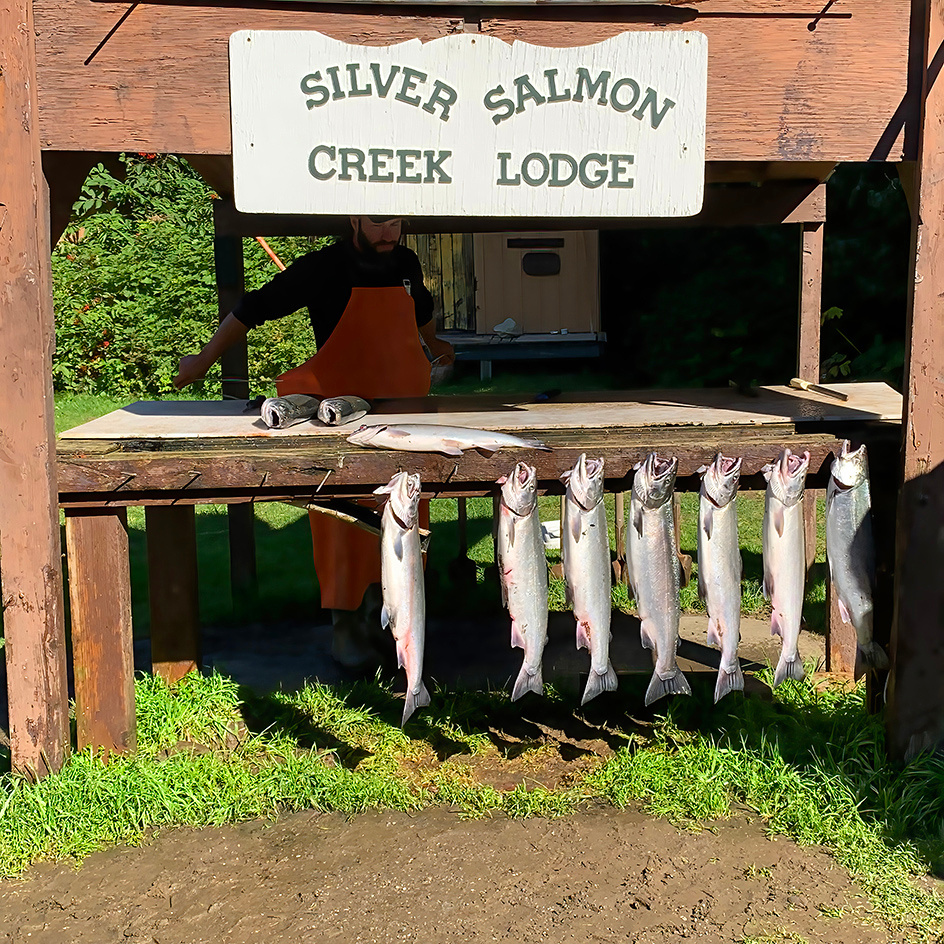

The daily catch.
I was quite excited that first evening to have 3 bears wandering around the lodge grounds during happy hour and dinner. This later proved to be a nightly occurrence. After dinner we retired to the Puffin Perch, our lodging. It was clean, cozy and comfortable.
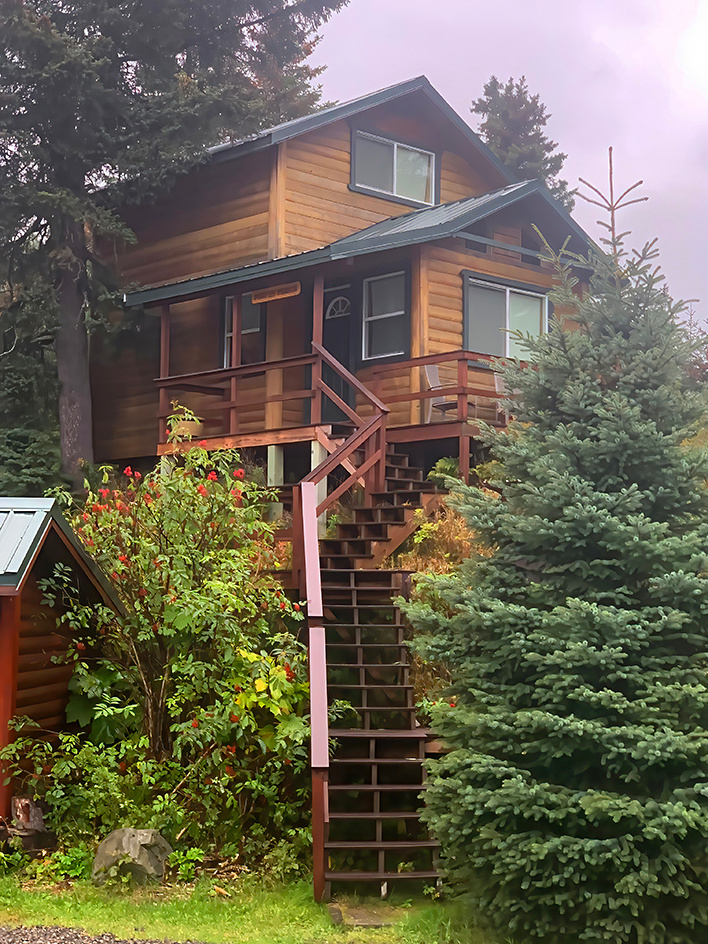

Puffin Perch. Our home for the week.
We headed out again the next morning about one-half hour before daylight to photograph bears with the background of the sunrise over the Kenai Range across the Cook Inlet. Cold traveling in the open carts well before sunrise. It was 36 degrees that morning. It was so worth it!




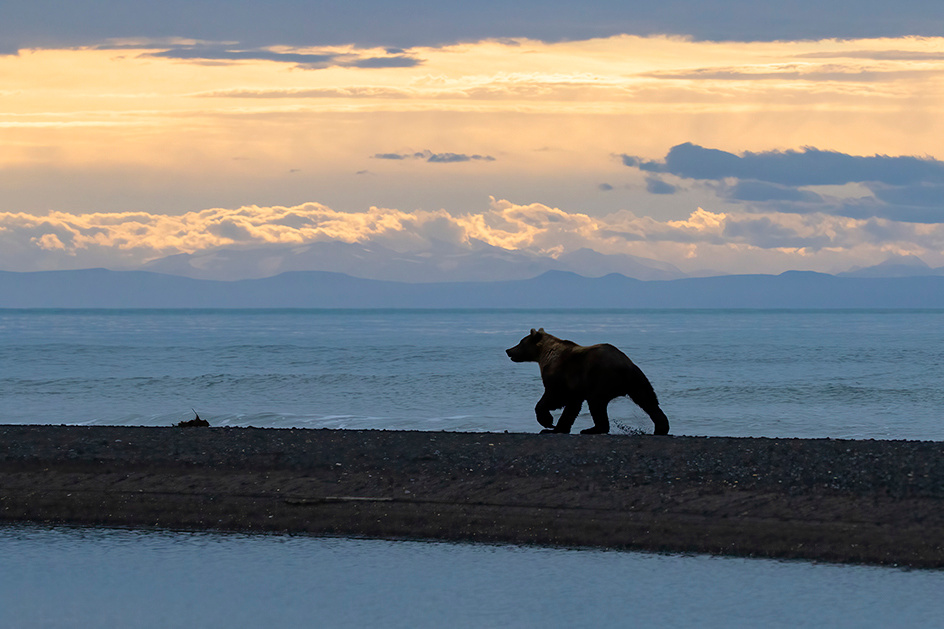

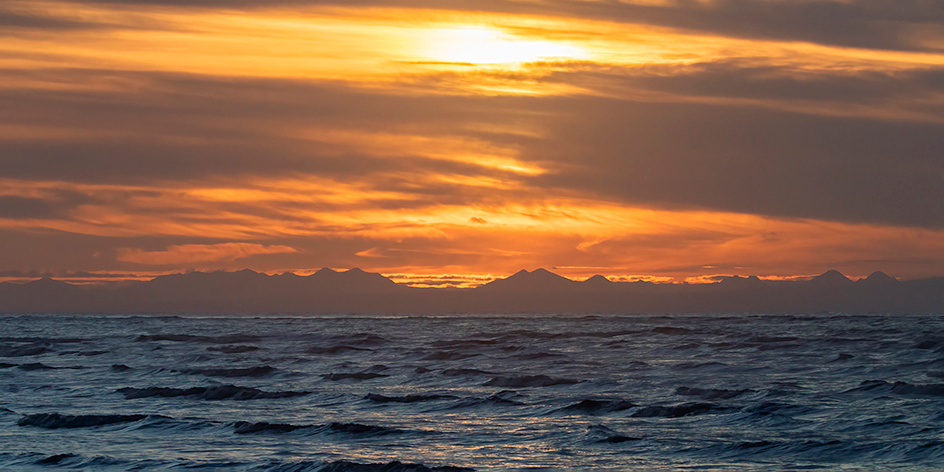

Even without a bear in the shot it was a stunning sunrise.
We headed back for an 8 am breakfast and then back to the bears. At breakfast they always posted the next days menu. Something to look forward to!


As is typical for Alaska, we had a variety of weather. It rained several days and was overcast most of the remainder. We had originally booked 6 days at the lodge hoping to only lose one or two due to weather. Many photographers who chose an overnight visit never saw the sun.


My bride and arctic explorer dressed for the weather. Seven layers on top, three on the bottom and still cold.
The rain and overcast conditions made for some challenging lighting for action photography, especially fishing bears. These guys can go from asleep to 30 mph in seconds if they detect a salmon attempting to push upstream. A camera with a high ISO/low noise capability is very beneficial to capture the action.
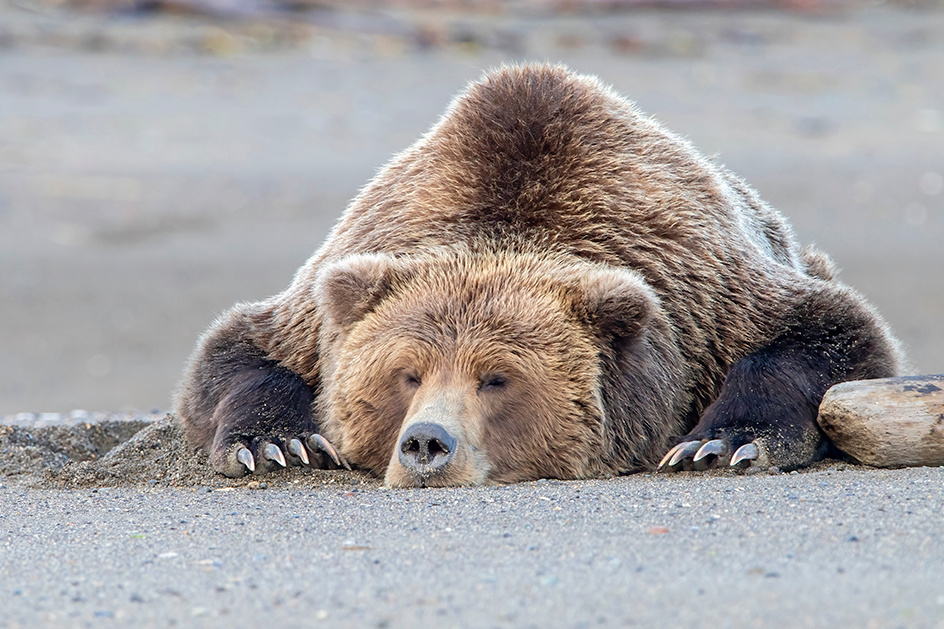

While she appears asleep, any unnatural splashing in the creek could bring her fully awake and focused.
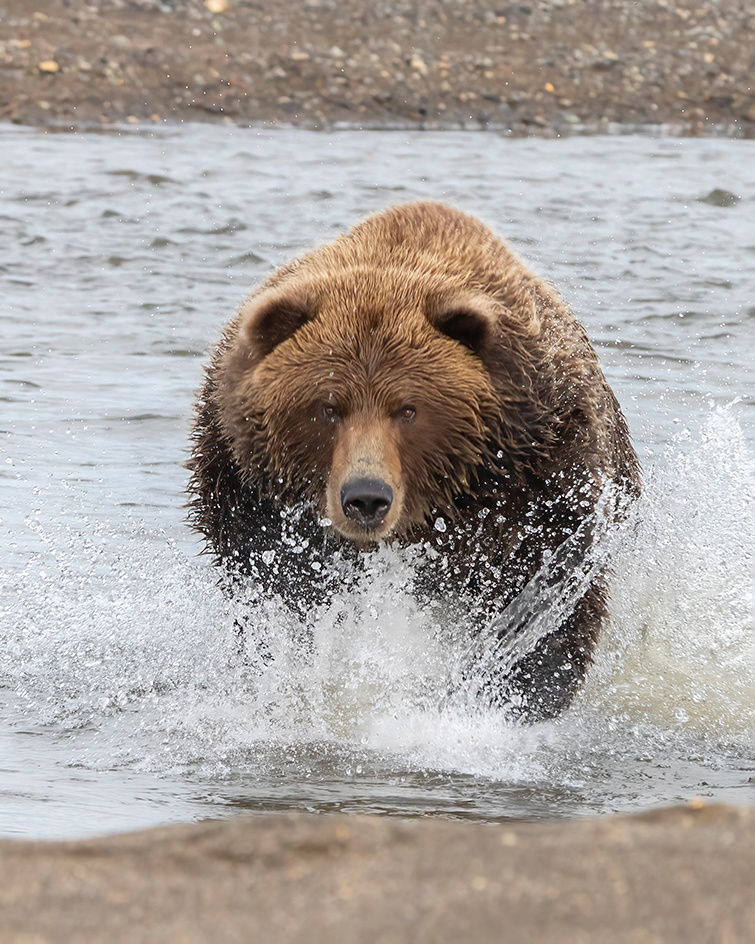

Chasing salmon.


And the capture.
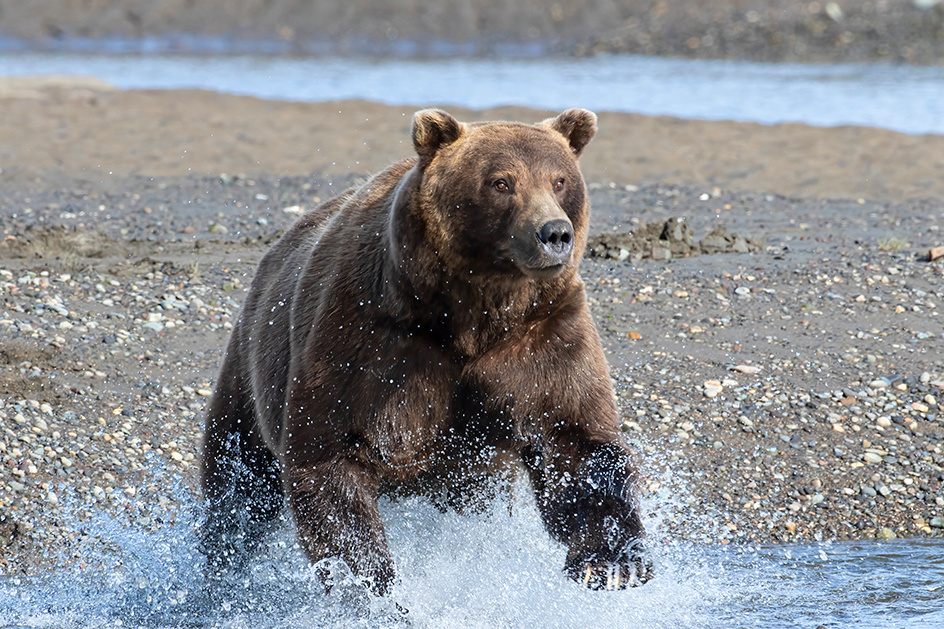

Large male chasing fish.
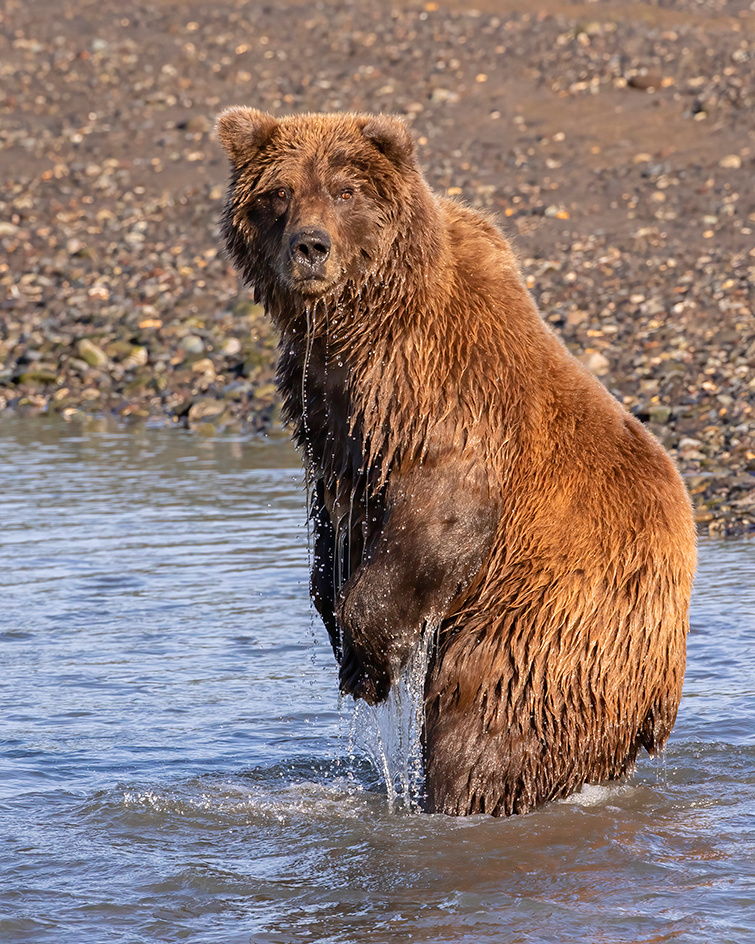

After a miss the bears would occasionally stand to get a better view in an attempt to reacquire the fleeing salmon.
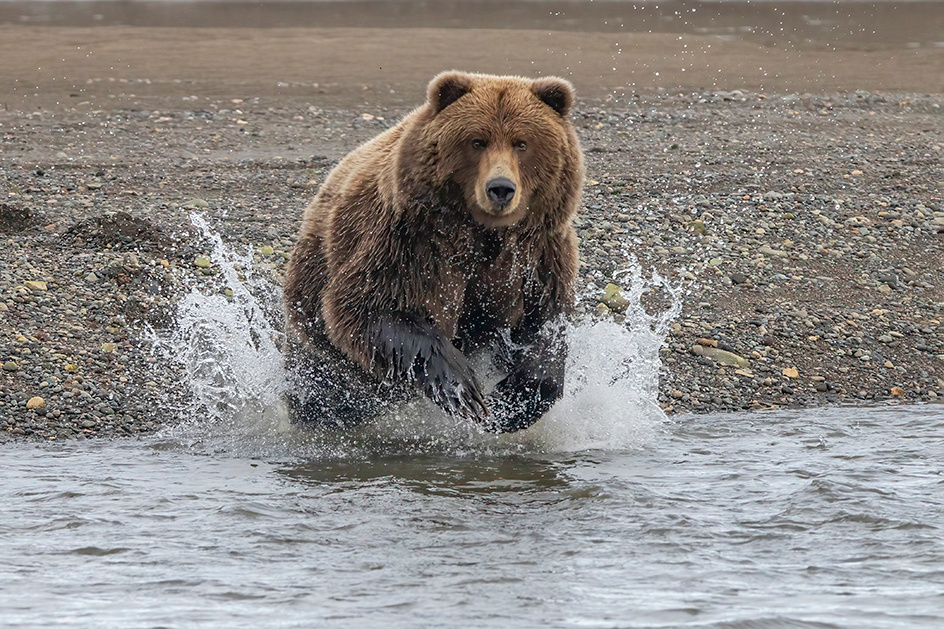

Raw speed and power.
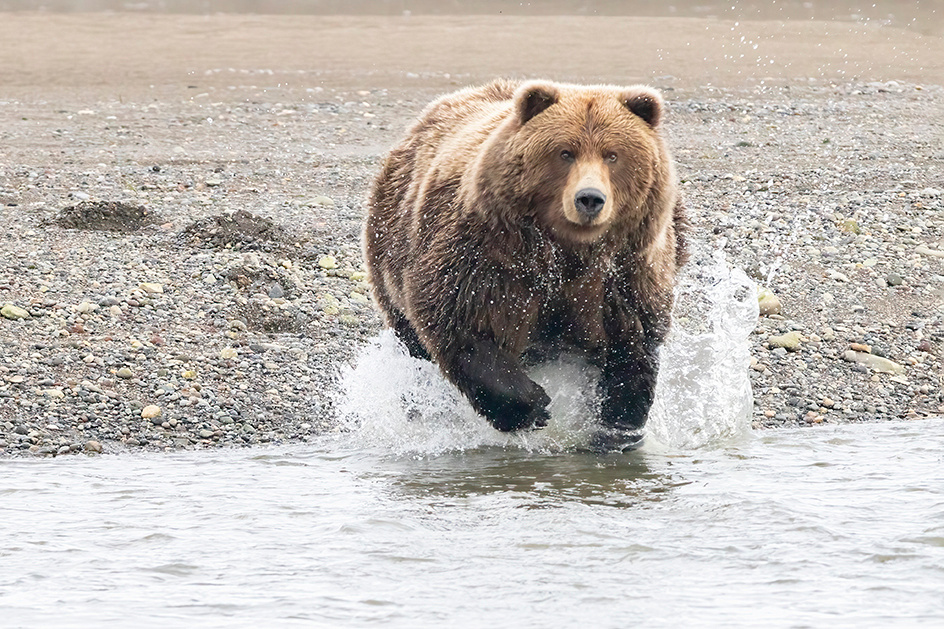

Love the eye contact.
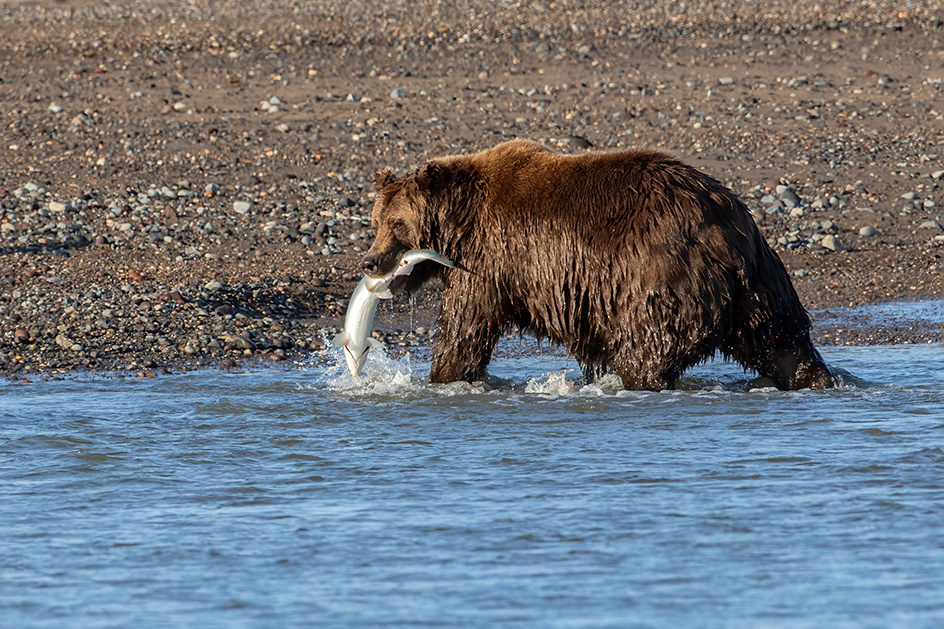

Another capture.
In addition to actively fishing for salmon, the bears were adept at scavenging. They walked the shoreline and frequently encountered dead fish including spiney dogfish (small sharks) and flounder. I suspect that these fish may have been discarded bycatch from offshore commercial fishing operations.
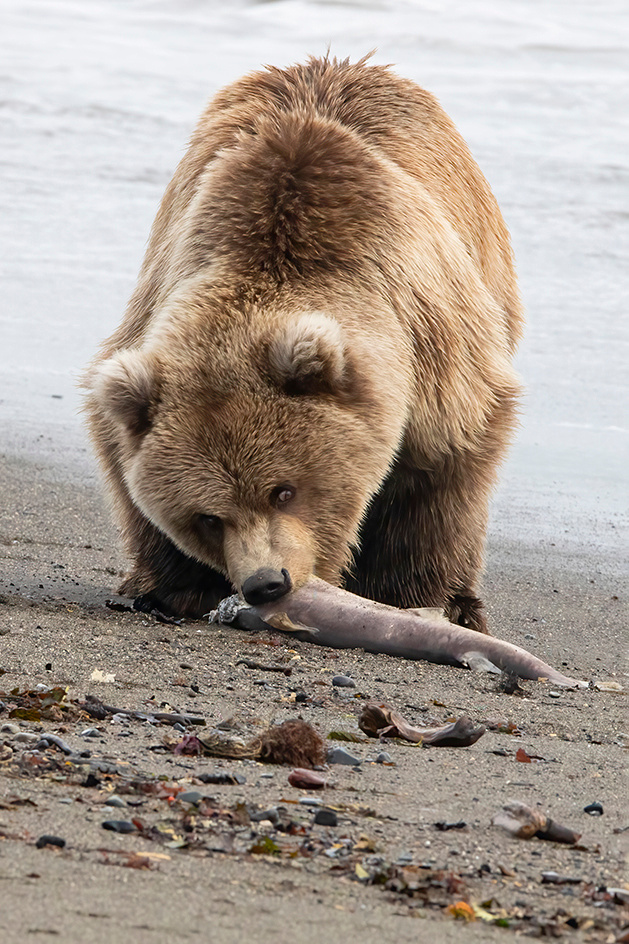

Cub eating a scavenged spiny dogfish.
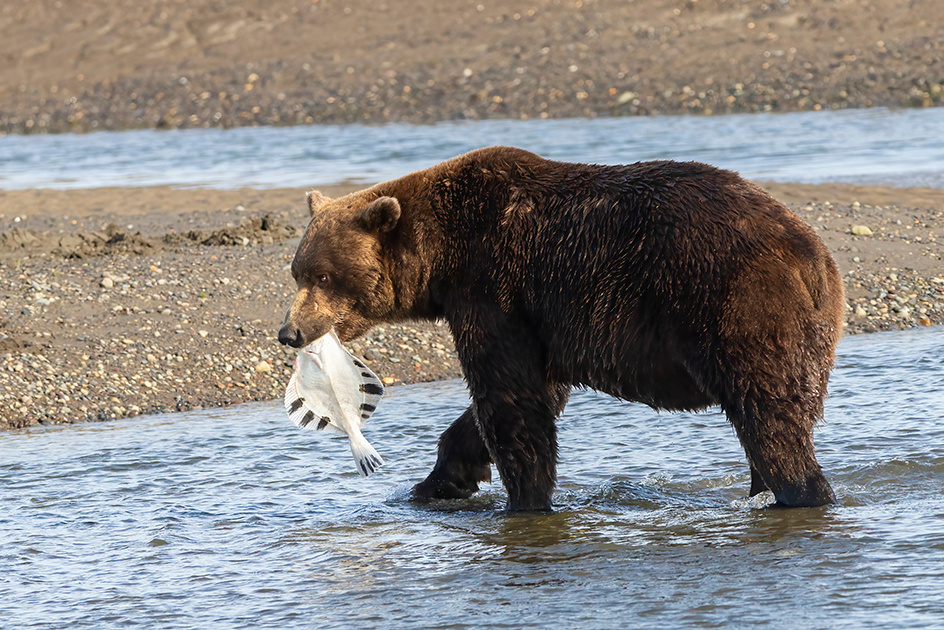

Young male with a scavenged flounder.
In addition to salmon, clamming, and scavenging, the bears spent many hours a day grazing on grasses and forbs. Beach pea, a legume, seemed to be a favorite at this time of year. They are reported to consume 30 pounds of vegetation per day and it is the mainstay of their diet as they emerge from hibernation.
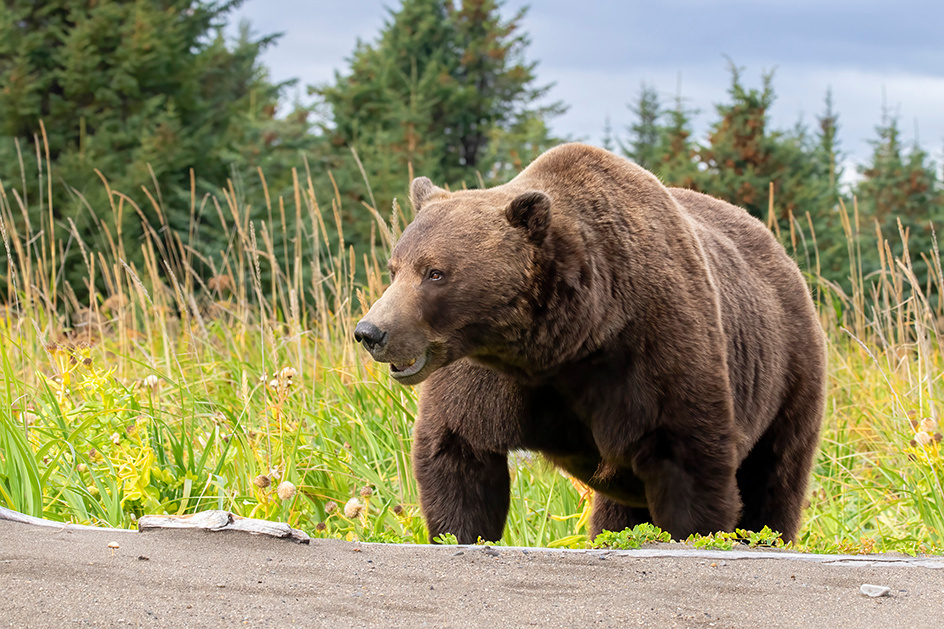

Medium to large adult male emerging from the forest.


Bear at the end of the rainbow.
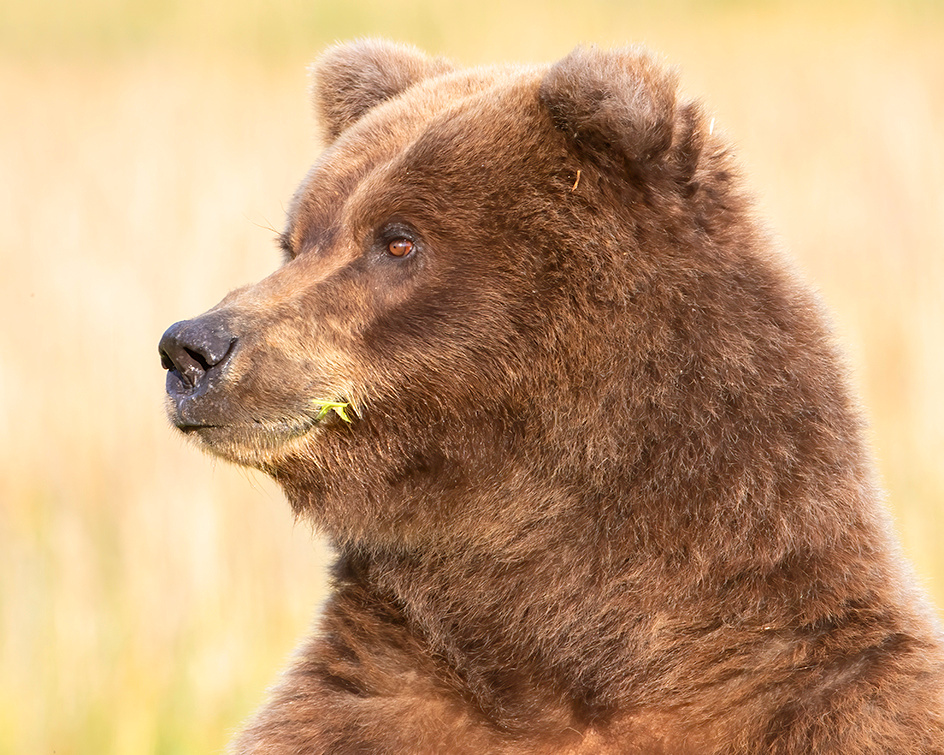

This bear stood and scanned the area in some rare nice light.
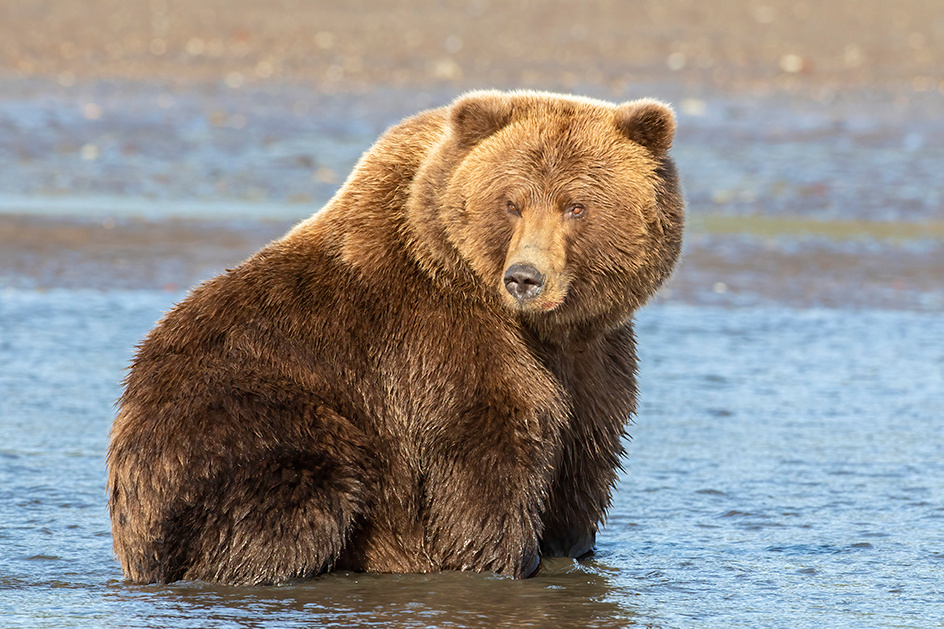
 The guides had named the bears. This is Aggro, a very heavy female. She had lost her cubs early in the season and was believed to be pregnant again at the time of this photo. These bears practice delayed implantation where the fertilized egg is not attached at the time of breeding, but rather months later during hibernation. The cubs are born blind, hairless, and softball-sized in the den during hibernation. They emerge from hibernation with their mother in June or July. June/July is probably the best time to photograph very small cubs and or breeding bears.
The guides had named the bears. This is Aggro, a very heavy female. She had lost her cubs early in the season and was believed to be pregnant again at the time of this photo. These bears practice delayed implantation where the fertilized egg is not attached at the time of breeding, but rather months later during hibernation. The cubs are born blind, hairless, and softball-sized in the den during hibernation. They emerge from hibernation with their mother in June or July. June/July is probably the best time to photograph very small cubs and or breeding bears.


This second-year cub was pestering his mom to nurse.
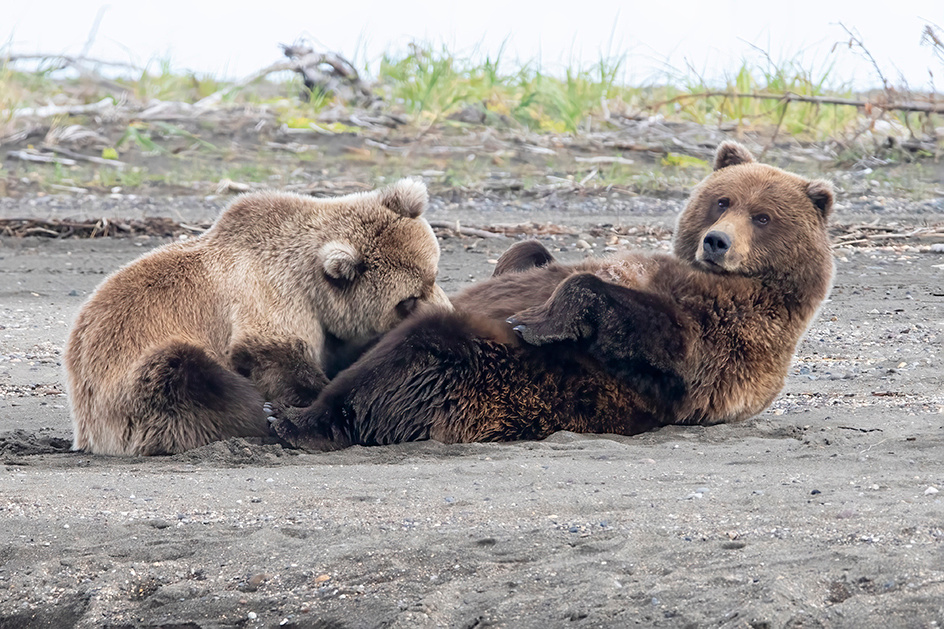

Nursing on the beach.
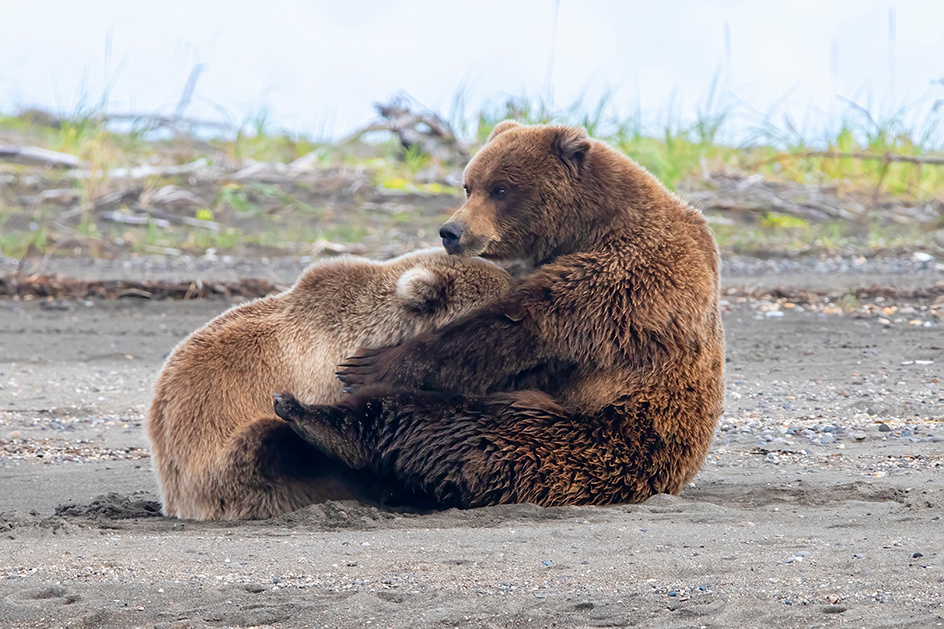



One very photogenic cub.
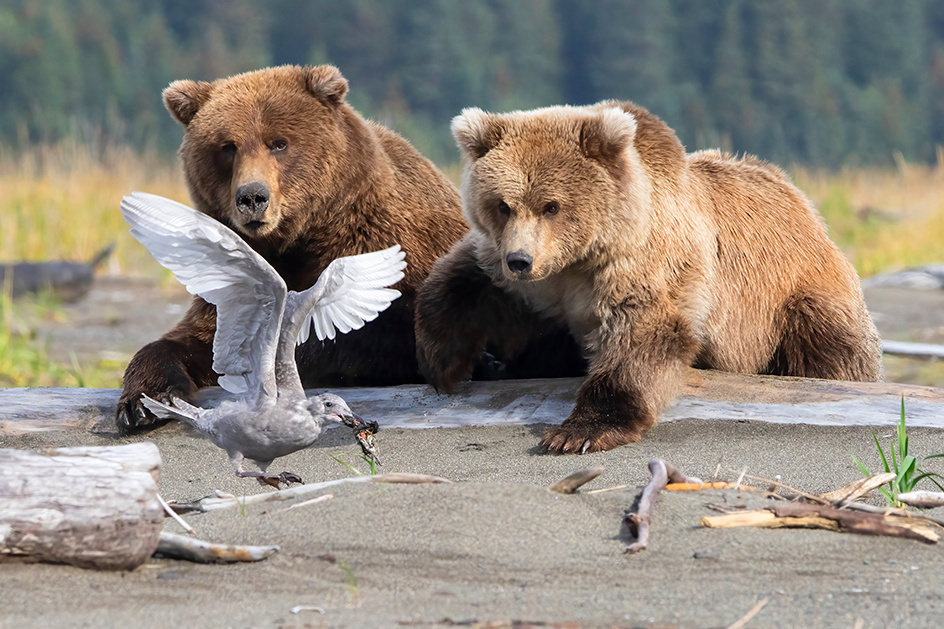

This gull got a little to close to these bears with a food morsel.
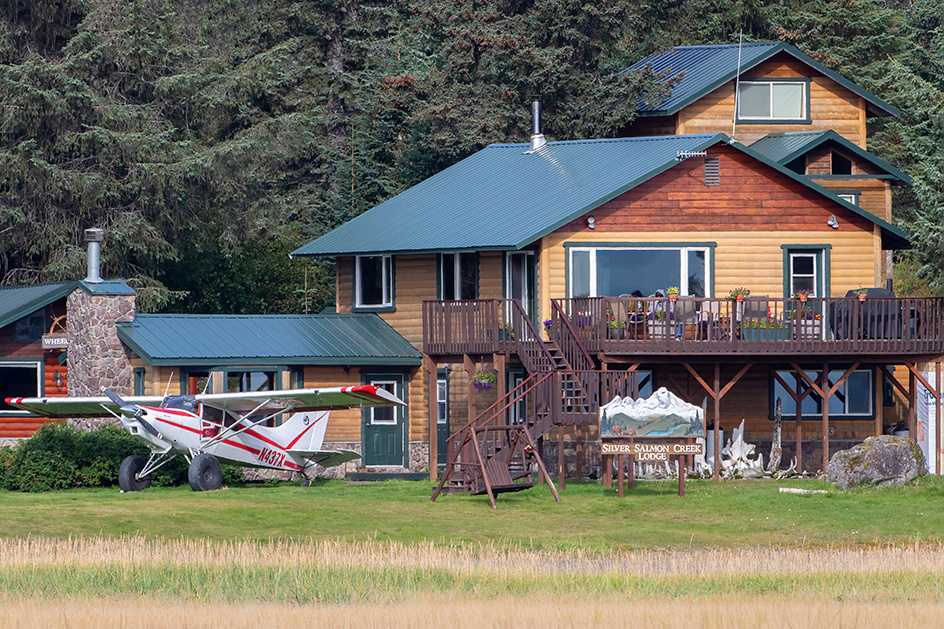
 Silver Salmon Creek Lodge can accommodate up to 28 visitors at a time. Several expert lead photo tour groups (6 to 8 individuals) went through the lodge while we were there. It is unclear what is gained by joining a photo group tour as the lodge guides are well versed in photographers wants and needs. In my opinion, little benefit would be provided to experienced photographers by an expert lead tour group at this location. The plane parked out front is owned by Oliver and is modified to allow very short take off distances (200-300 feet).
Silver Salmon Creek Lodge can accommodate up to 28 visitors at a time. Several expert lead photo tour groups (6 to 8 individuals) went through the lodge while we were there. It is unclear what is gained by joining a photo group tour as the lodge guides are well versed in photographers wants and needs. In my opinion, little benefit would be provided to experienced photographers by an expert lead tour group at this location. The plane parked out front is owned by Oliver and is modified to allow very short take off distances (200-300 feet).
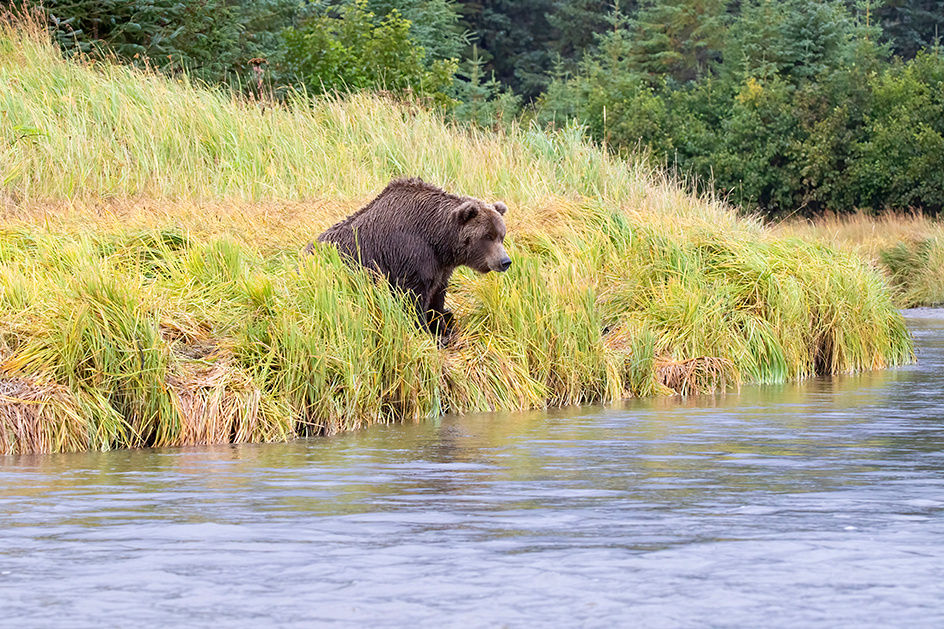

Fishing in the rain.
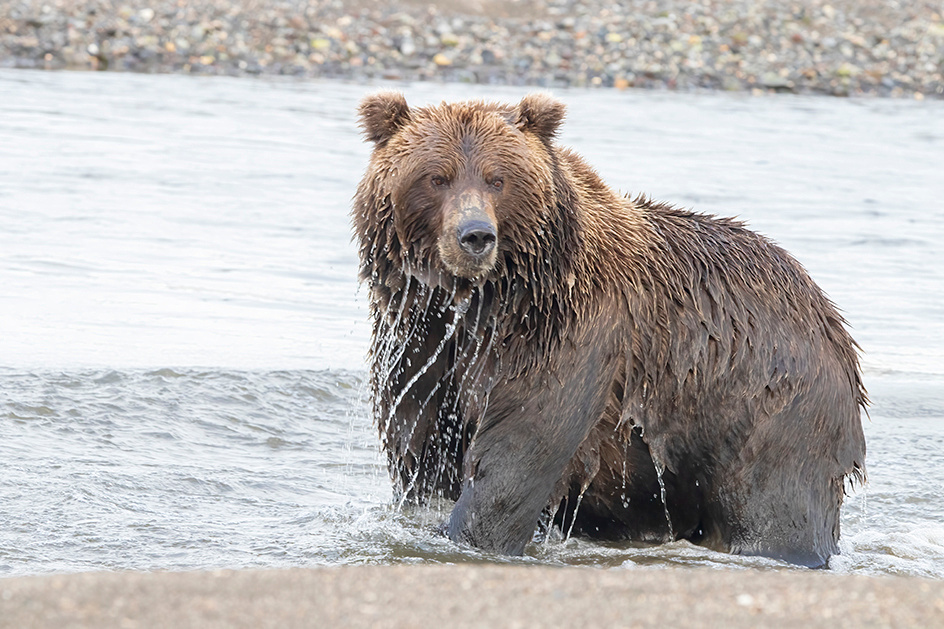
 Some bears used a snorkeling fishing technique where they submerge their head and scan for fish visually underwater.
Some bears used a snorkeling fishing technique where they submerge their head and scan for fish visually underwater.
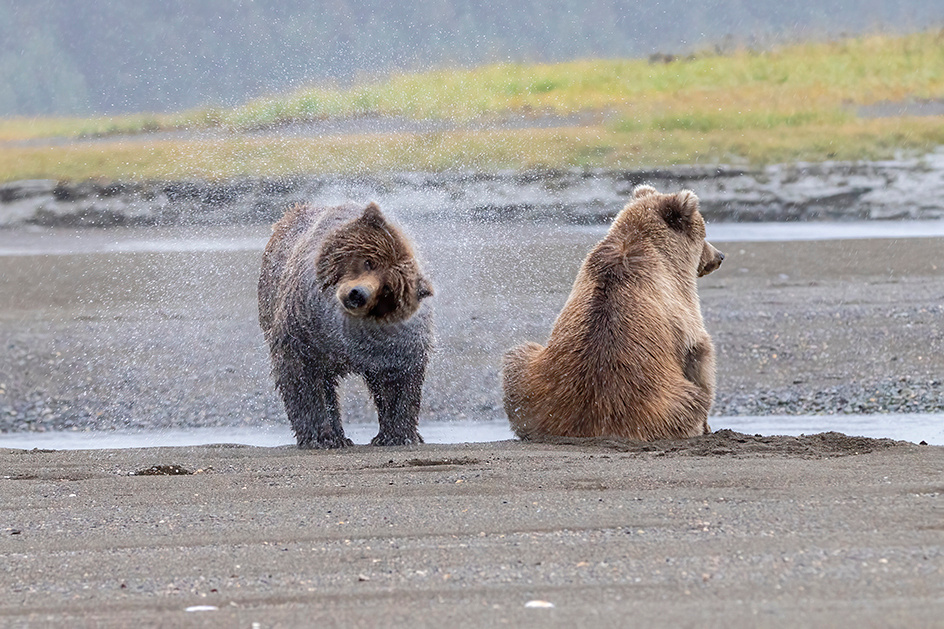
 Spin dry.
Spin dry.
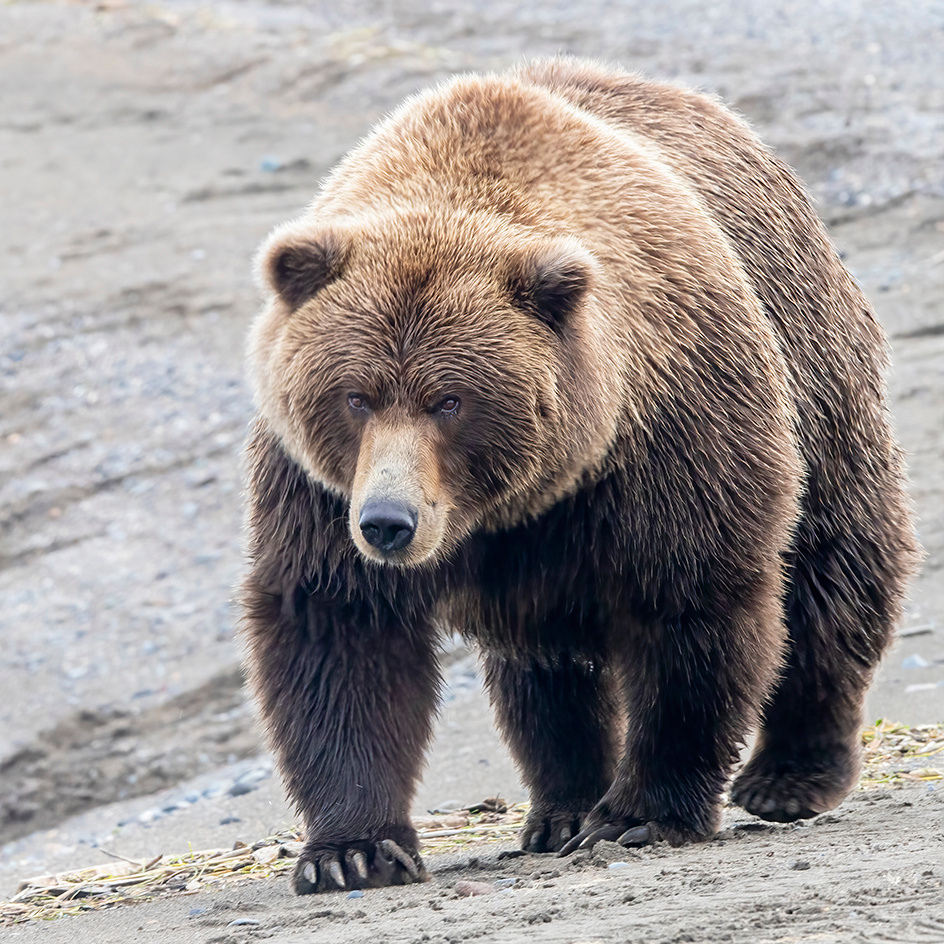

Frame filling shot of a large female.
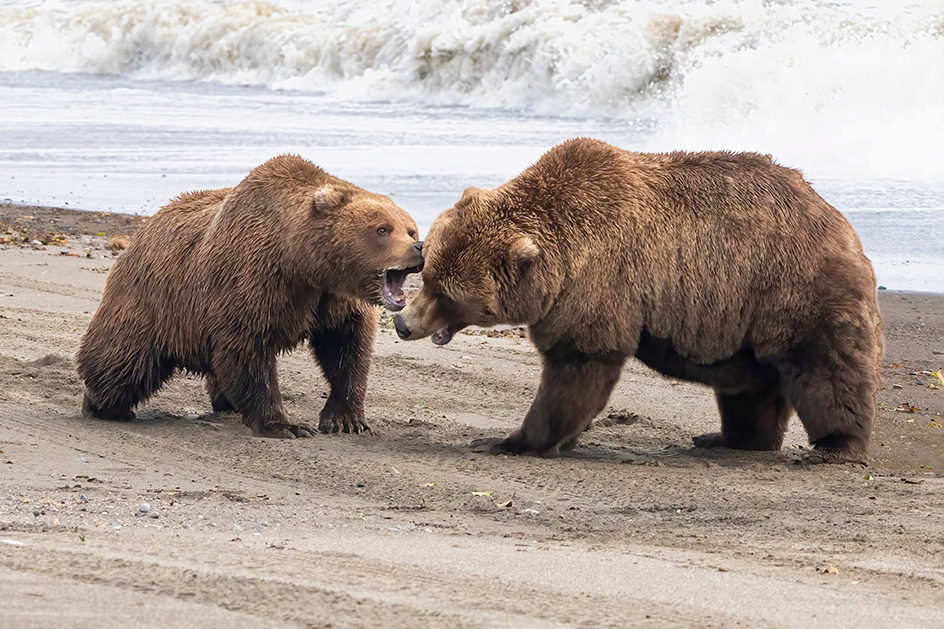
 The bears generally spaced themselves out in the environment. Interactions between bears were uncommon at this time of year. In this case, four fish had washed up on the beach and three bears came together at the same time and space. Some mouth to mouth threat displays and then both bears moved away from each other. At one point the next day, a female with cub was grazing within 100 yards of a medium to large male (named Cubkiller). He had apparently earned his name in front of a large group of photographers. She would periodically stand on her hind legs to see him over the grass to insure he was not moving toward the cub. So much interesting behavior.
The bears generally spaced themselves out in the environment. Interactions between bears were uncommon at this time of year. In this case, four fish had washed up on the beach and three bears came together at the same time and space. Some mouth to mouth threat displays and then both bears moved away from each other. At one point the next day, a female with cub was grazing within 100 yards of a medium to large male (named Cubkiller). He had apparently earned his name in front of a large group of photographers. She would periodically stand on her hind legs to see him over the grass to insure he was not moving toward the cub. So much interesting behavior.
Bird life was relatively uncommon. Glaucous-winged gulls, bald eagles and common mergansers were observed every day. Small passerines were almost completely absent. I did get two life birds on the trip (spruce grouse and horned puffin).
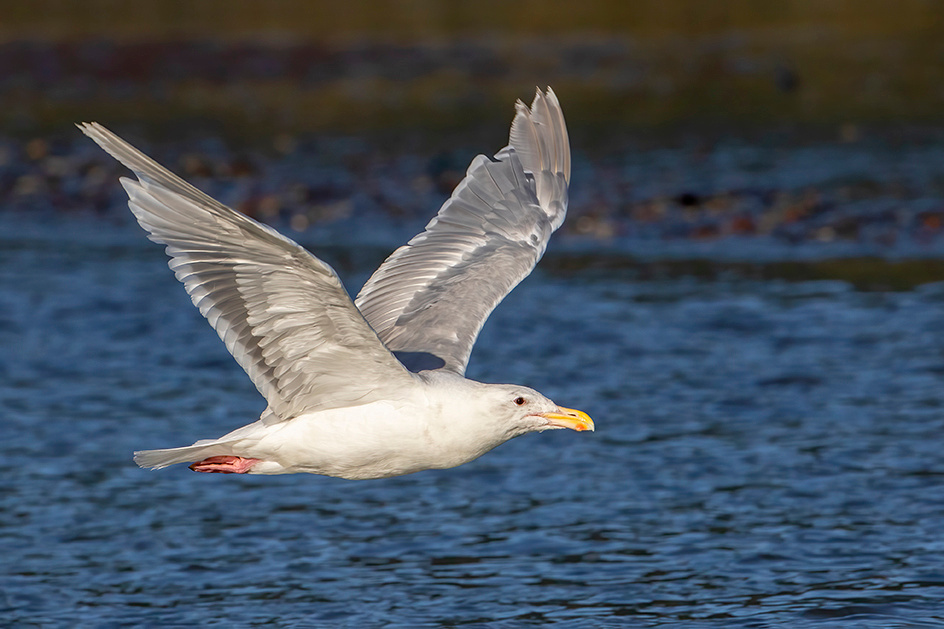
 Glaucous-winged gull.
Glaucous-winged gull.
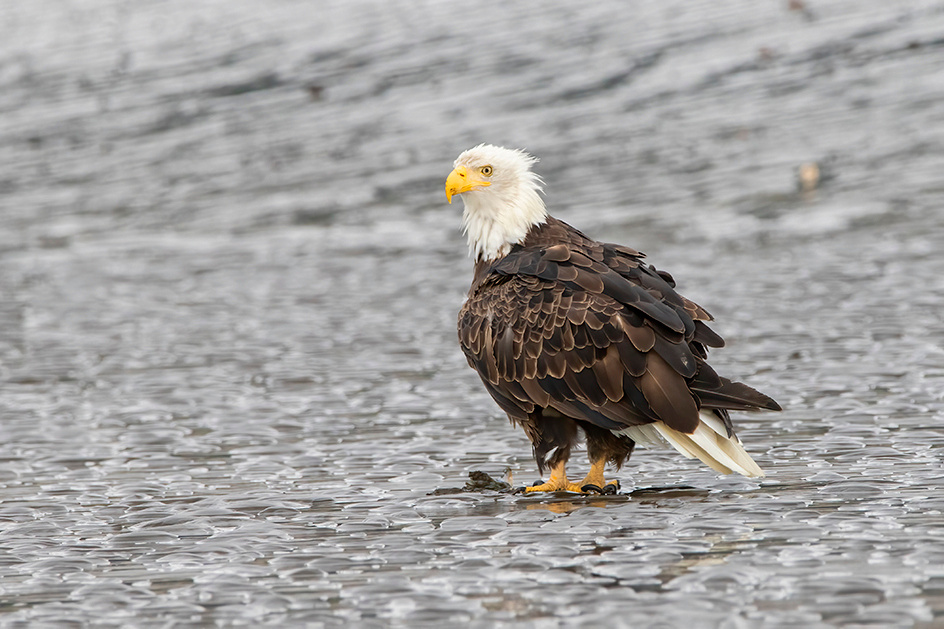
 Adult bald eagle at low tide.
Adult bald eagle at low tide.
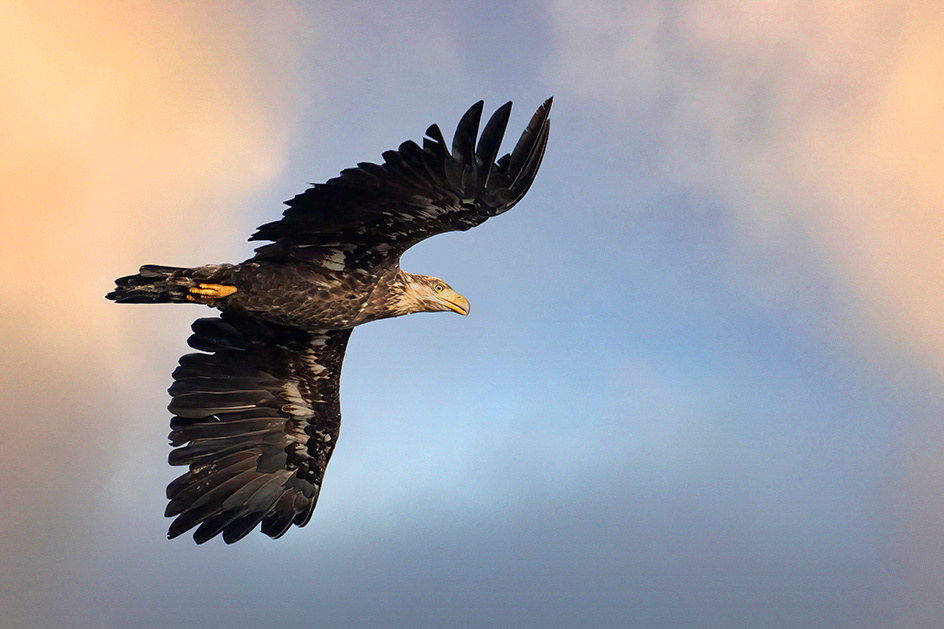
 Immature bald eagle. Just acquiring its adult plumage with the white head and tail.
Immature bald eagle. Just acquiring its adult plumage with the white head and tail.
Silver Salmon Creek Lodge is located in an area of incredible vast landscapes.
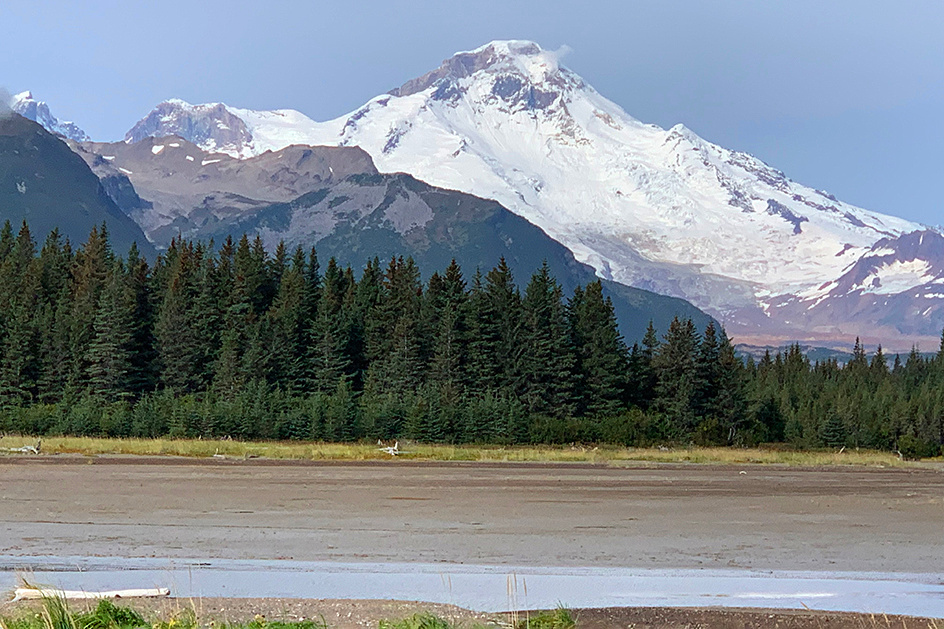
 Mount Iliamna. Note the volcanic steam plume near the summit on the right side.
Mount Iliamna. Note the volcanic steam plume near the summit on the right side.
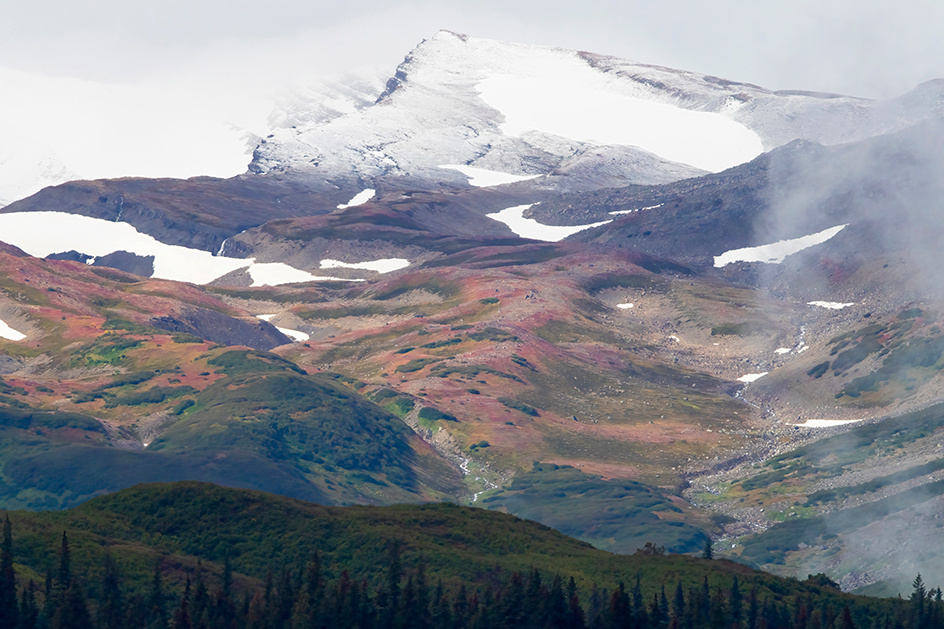
 View from the lodge.
View from the lodge.
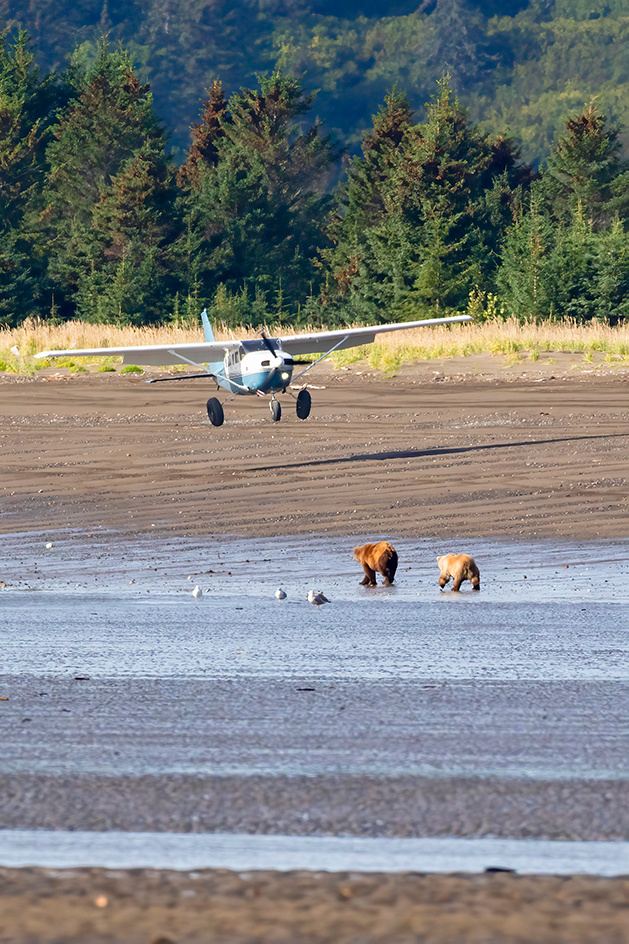

Logs washed up on the beach during storms and were a hazard to planes landing and taking off. Bears themselves could also pose a hazard to landings and take-offs. This pilot had to pull up and hop over these bears in order to land.
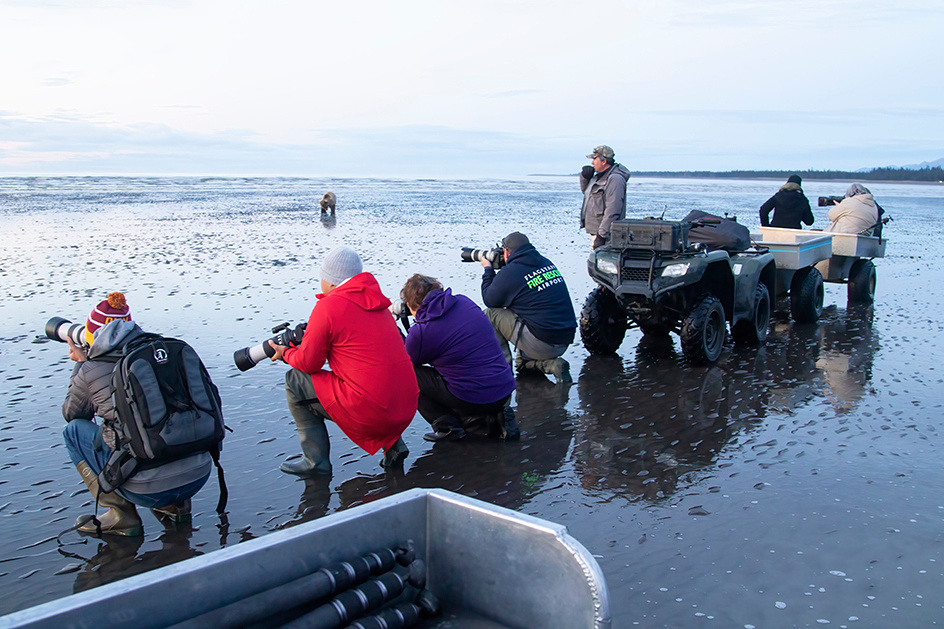
 Photographers lined up for the sunrise shoot.
Photographers lined up for the sunrise shoot.
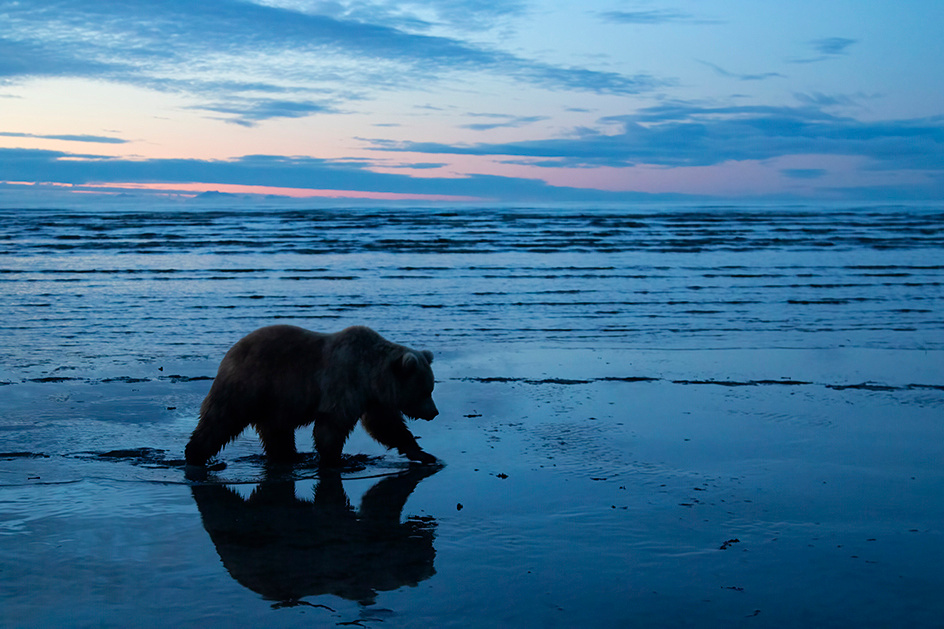
 Sunrise silhouette.
Sunrise silhouette.

 Apparently not ONLY in the woods!
Apparently not ONLY in the woods!
Rob, our guide, work very hard to get us the best images possible under existing conditions. Rob always seemed to be able to predict what the bears might do next and position us well for the shot. Even though occasionally bears were at less than minimum focus distance, I never felt unsafe. This proximity did take some getting used to in the beginning. All the staff at the lodge were friendly and accommodating.
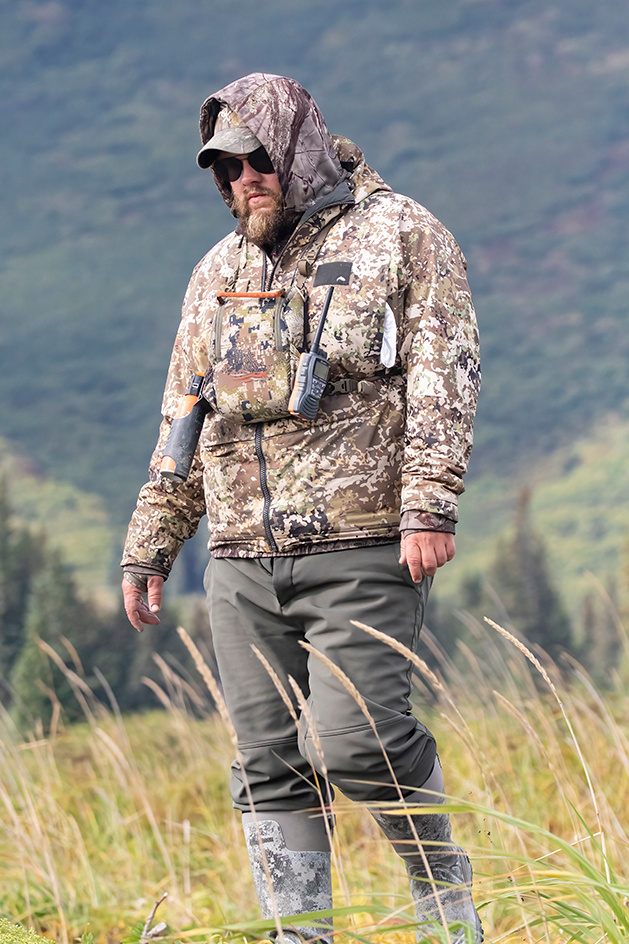

Rob.
I highly recommend Silver Salmon Creek Lodge as a coastal brown bear photo venue. Our flight out was delayed a day due to gusty winds, so planning a transport delay into your schedule might be prudent. Good raingear for yourself and your equipments are necessary. Lots of layers and waterproof gloves should be included when packing. Most photographers did not use a tripod. I did for most of my shots. I normally try not to exceed ISO 800 on my Canon 7D2. On this trip I was frequently at 1600 ISO and even 3200 ISO a few times. I used an aftermarket noise reduction program to reduce image noise. I ended up with over 9500 images.
The End.
Sacramento NWR -December 2020
The Sacramento National Wildlife Refuge is located just south of the community of Willows, California. It is a truly amazing experience in winter as vast numbers of waterfowl congregate on the flooded ponds. Over 118,000 snow and Ross's geese are present during December of most years. The photos exhibited in this blog were taken during the first week in December 2020. Snow geese were abundant, but duck numbers were far below what I normally observe.
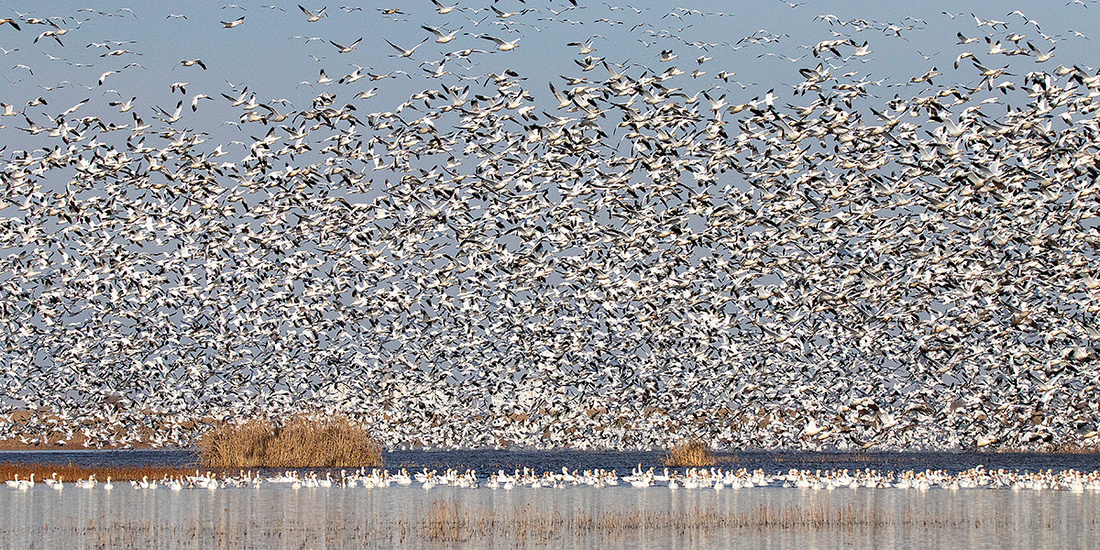
 The geese forage on harvested rice fields in the region during the night and return to the refuge during the day. Snow geese are very social birds and vast numbers can be observed in tight groups. The birds frequently occur near the eight mile-long auto tour route which allows close up photography opportunities.
The geese forage on harvested rice fields in the region during the night and return to the refuge during the day. Snow geese are very social birds and vast numbers can be observed in tight groups. The birds frequently occur near the eight mile-long auto tour route which allows close up photography opportunities.
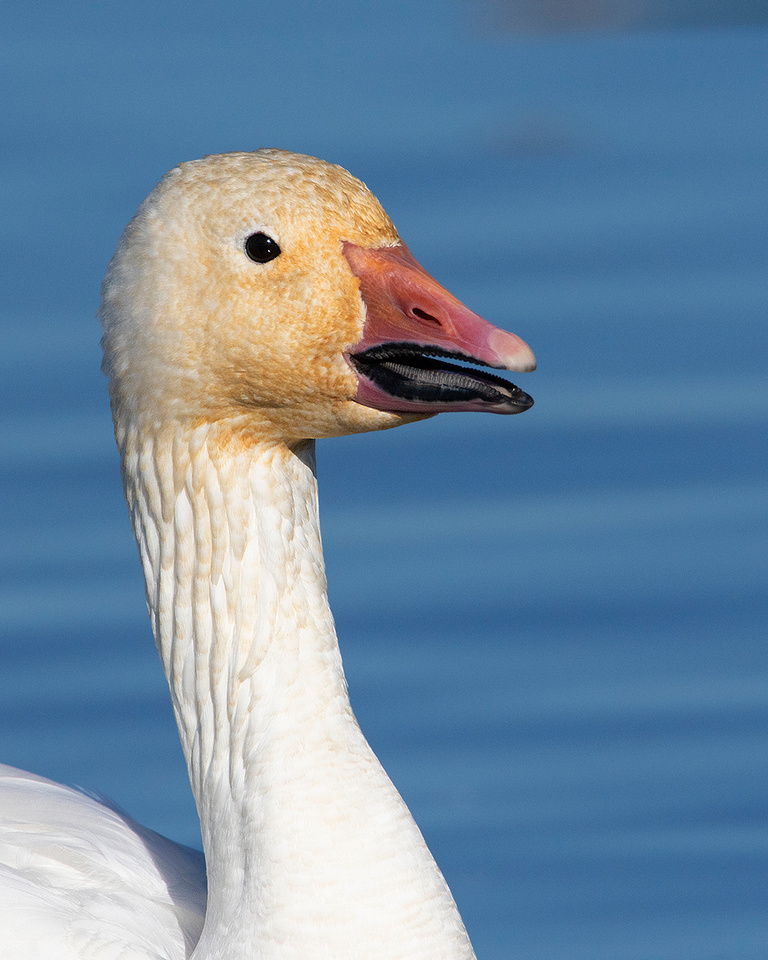

Occasionally a dark morph, or blue goose, can be spotted among the thousands of white morph geese.
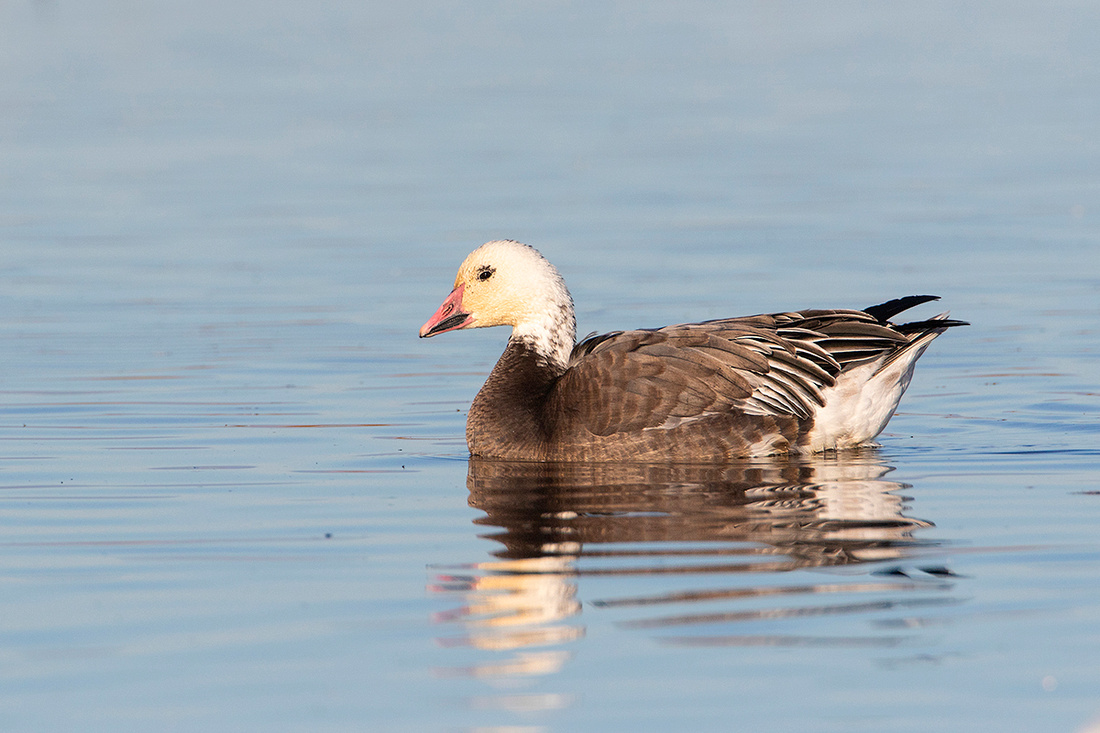

Ross's geese (below) also occur in large numbers. These geese are smaller than snow geese and have a different bill configuration than snow geese.
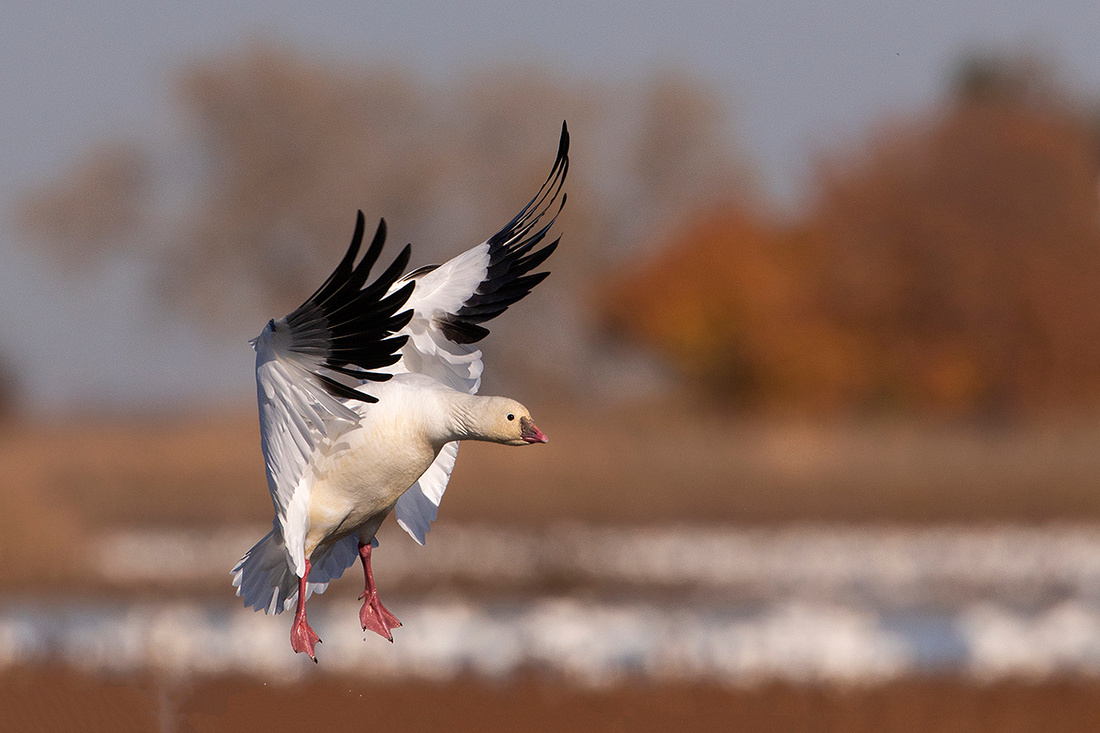

My experience has been that the best photo opportunities occur on days with either no wind or a south wind. This allows the birds to land into the light. Excellent flight photography can occur under these conditions. These conditions occurred on December 4th, 2020. Some snow goose flight images captured on December 4th are displayed below.
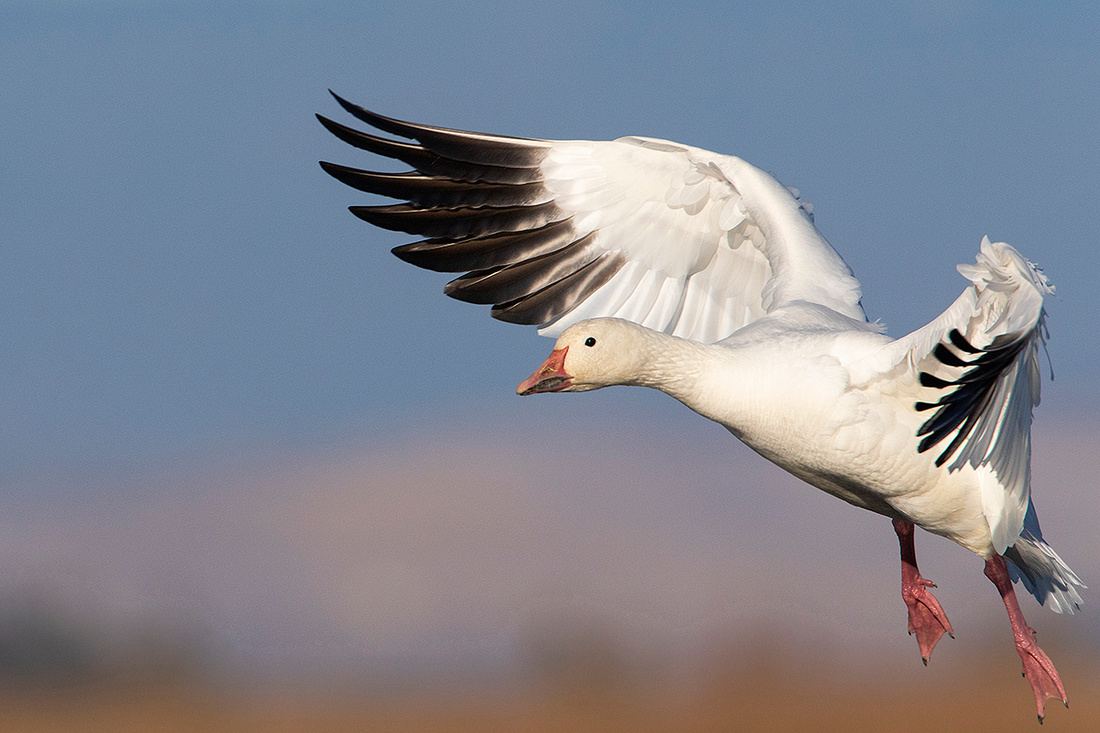



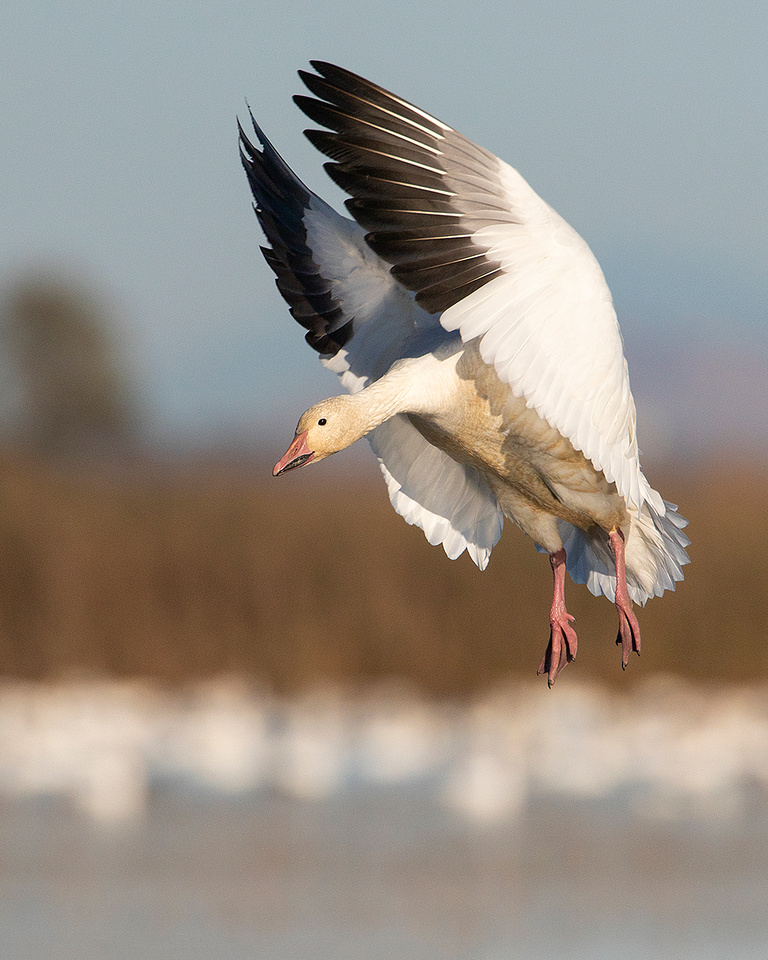

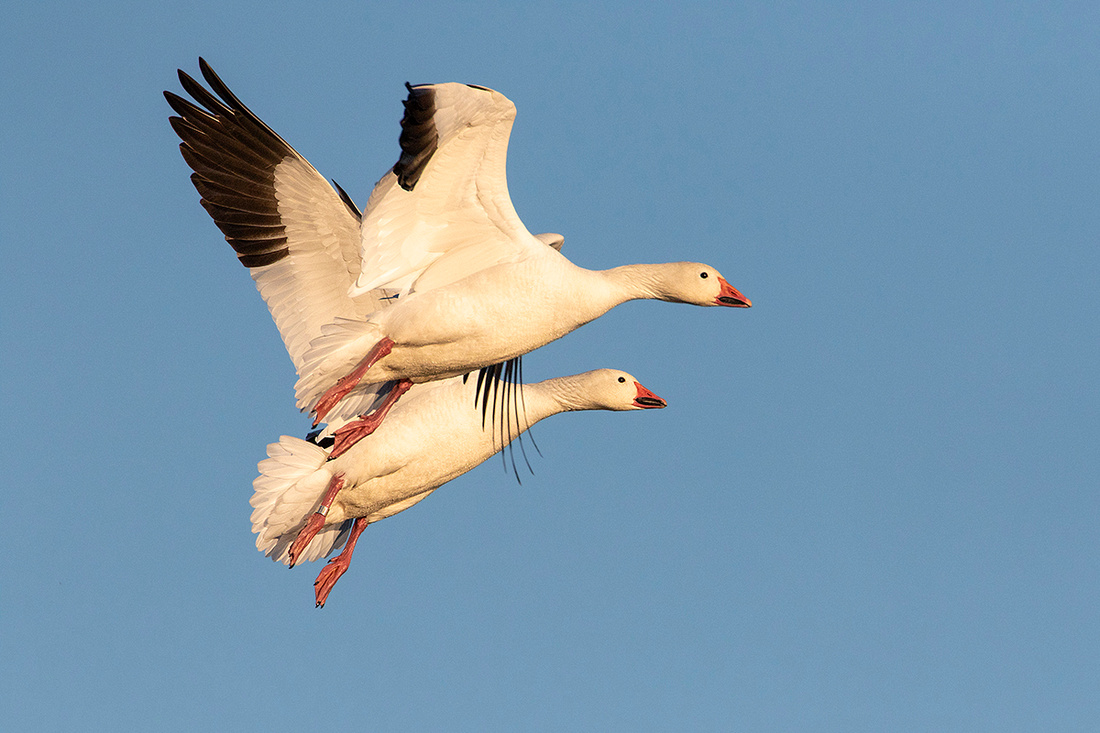

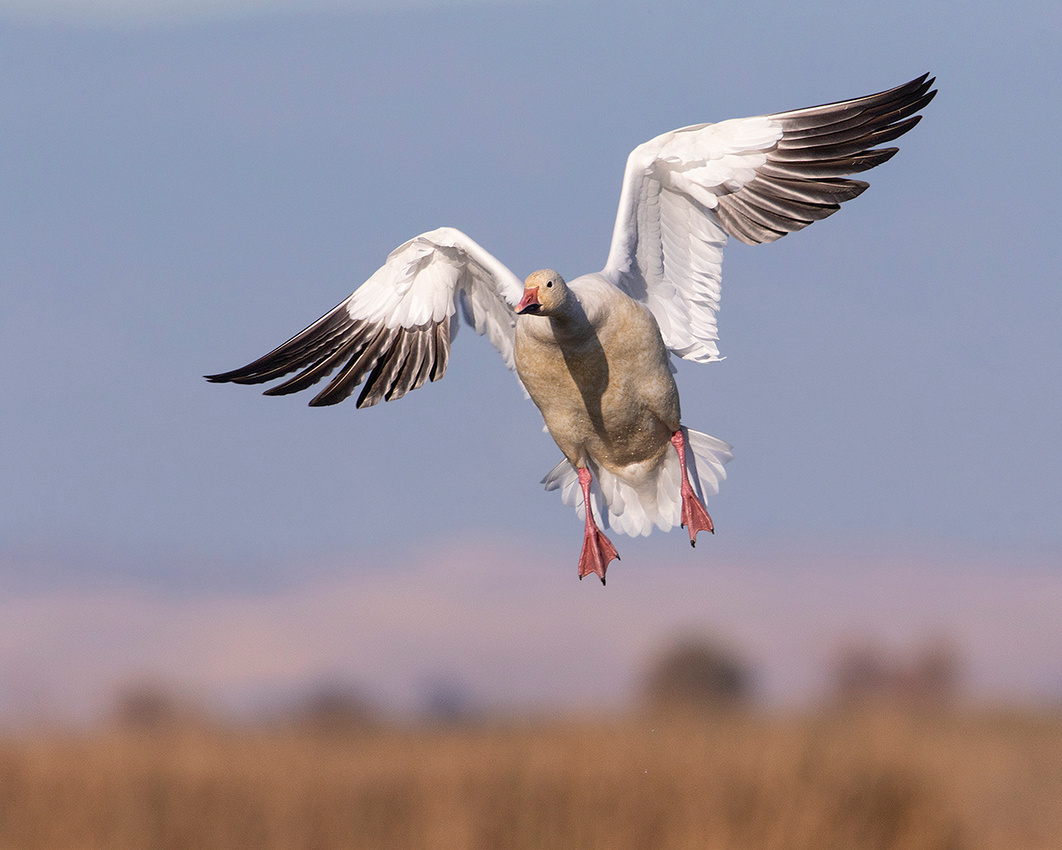





Landing within the tightly packed flock can be tricky.


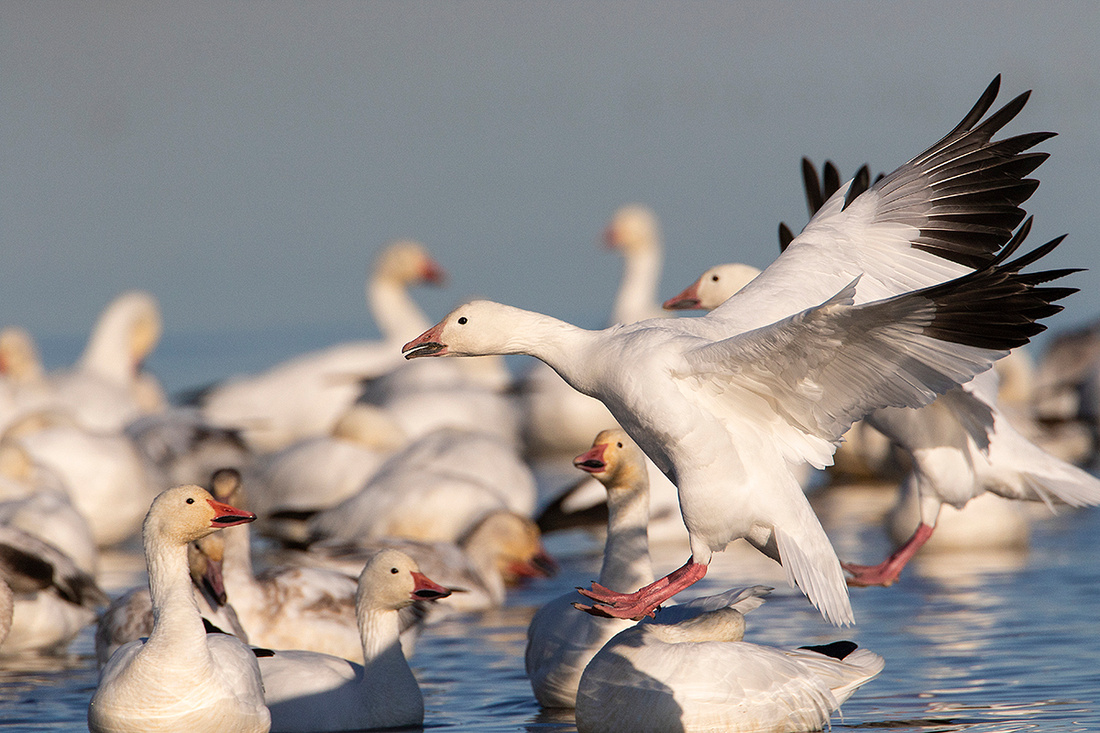

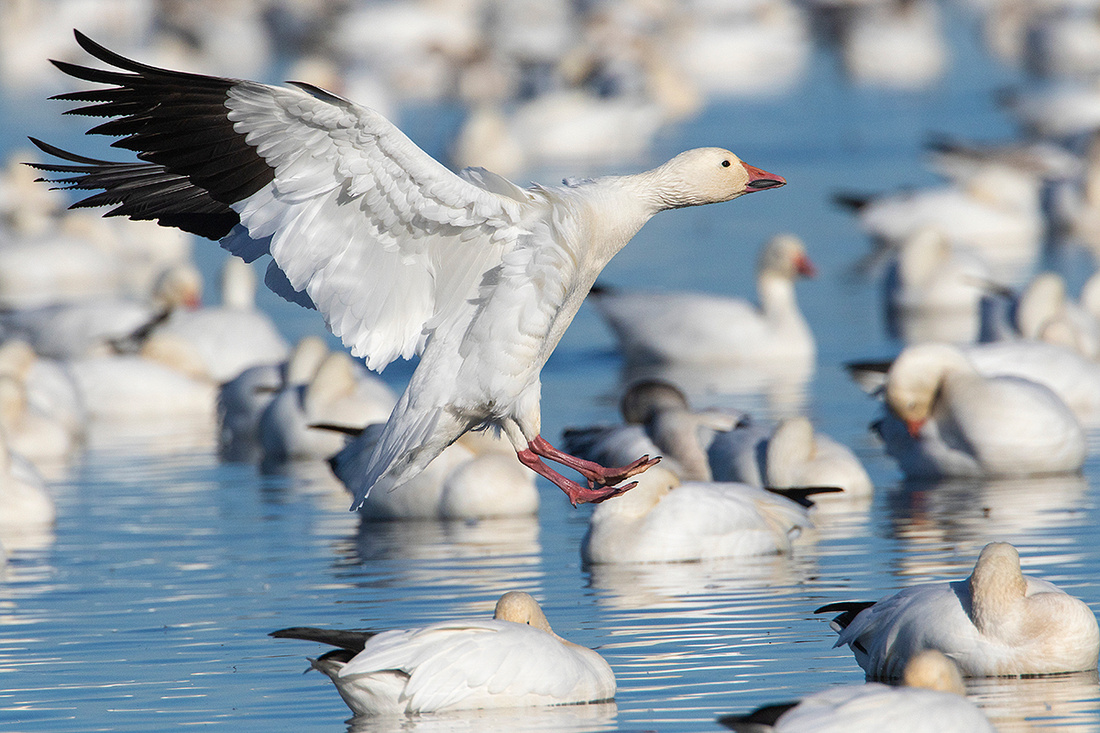
 Capture of the landing splash makes for more dynamic images, but the timing can be tricky.
Capture of the landing splash makes for more dynamic images, but the timing can be tricky.
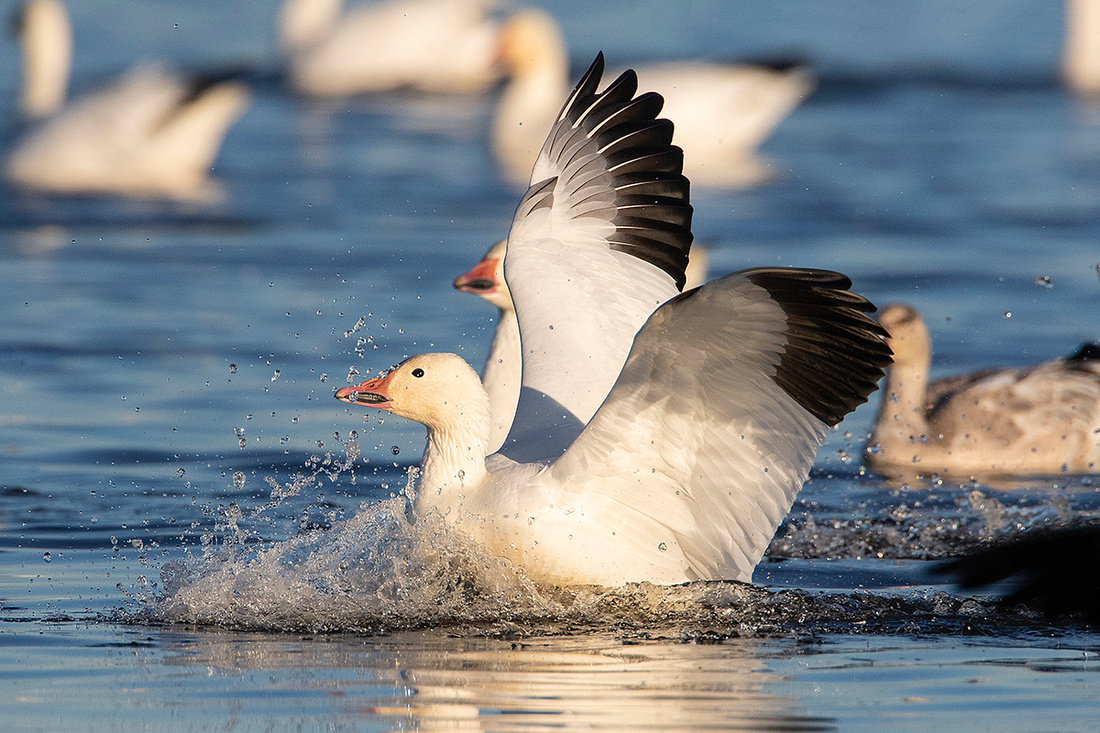

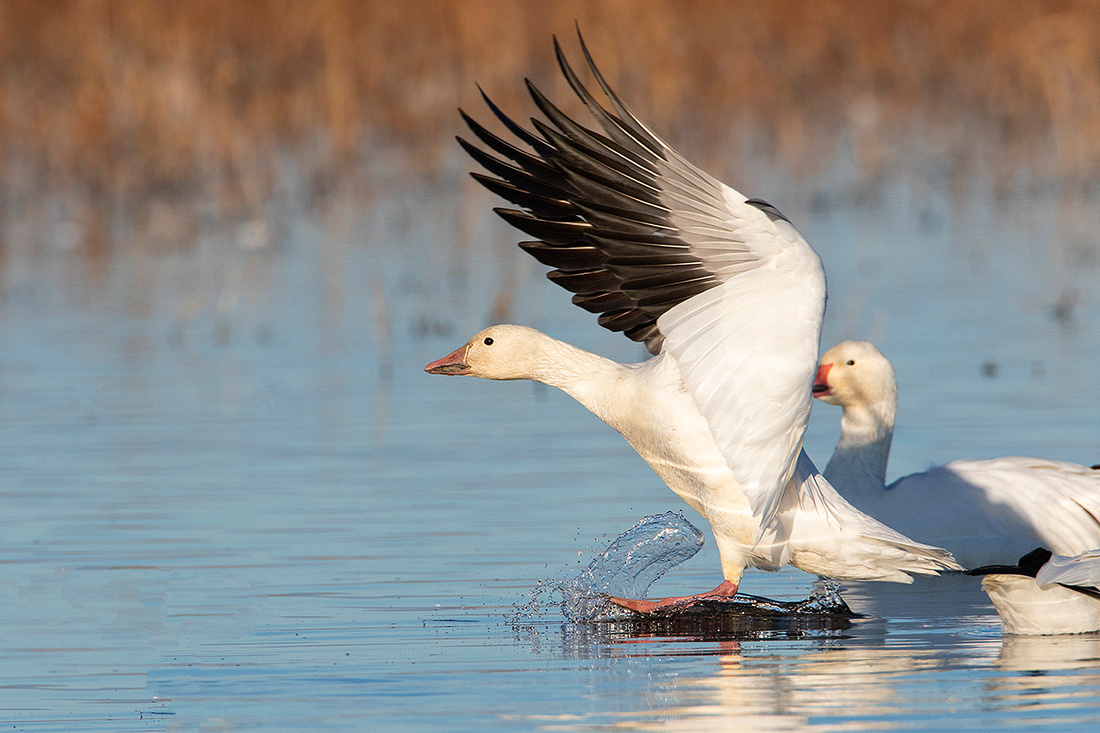



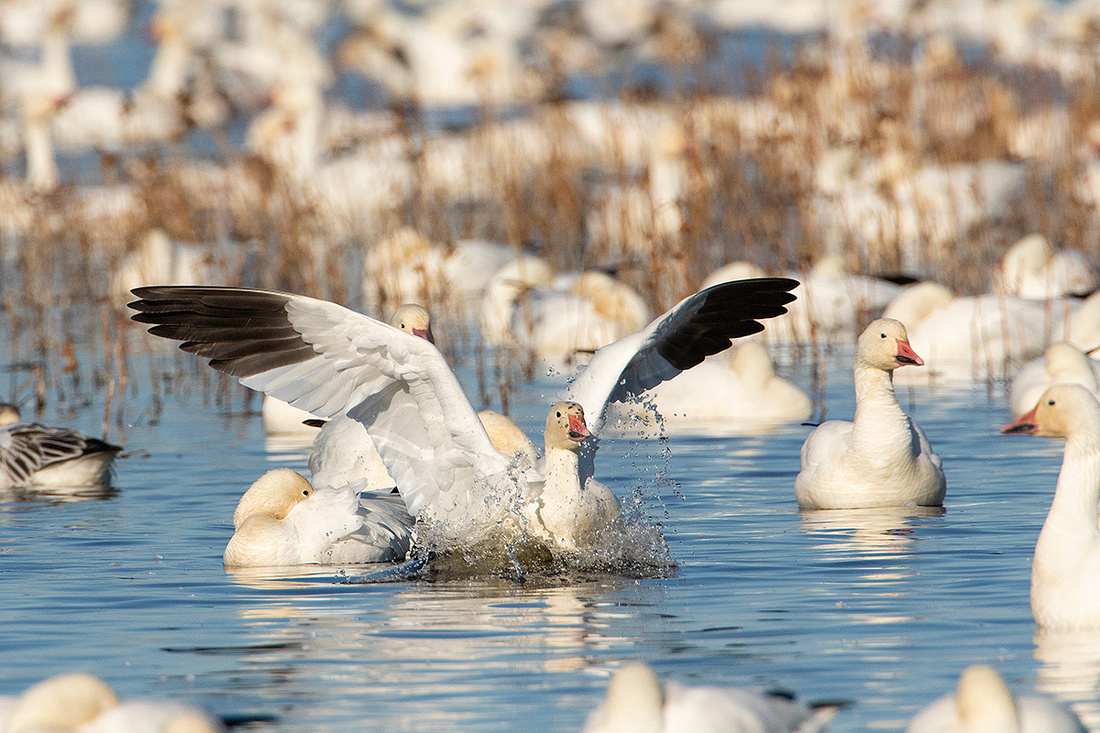

Early morning light can give the snow geese a rosy appearance.
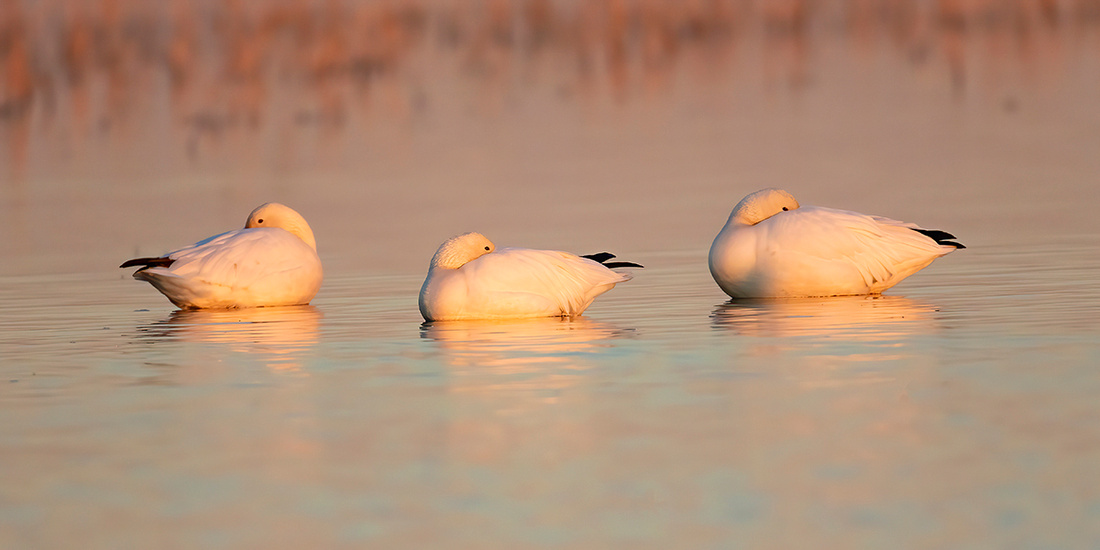

Snow geese spend a good deal of time preening. This preening is frequently followed by a dunking bath and a major wing flap.



 Throughout the day bald eagles will make a pass over the large flocks of geese looking for weak or injured birds. This results in thousands of geese taking wing as one. These mass take offs are visually impressive and quite noisy.
Throughout the day bald eagles will make a pass over the large flocks of geese looking for weak or injured birds. This results in thousands of geese taking wing as one. These mass take offs are visually impressive and quite noisy.


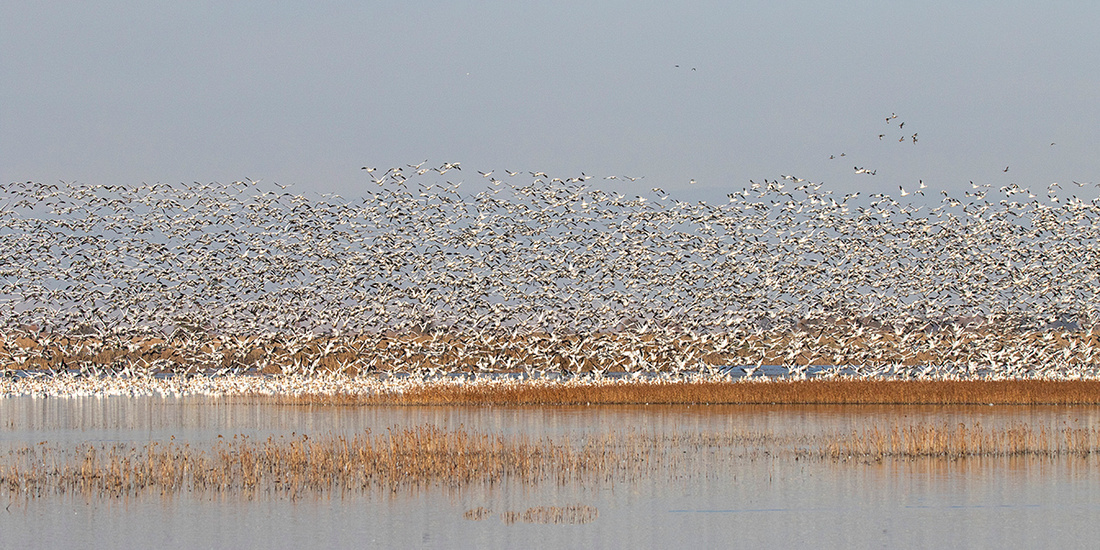
 Greater white-fronted geese also occur in large numbers.
Greater white-fronted geese also occur in large numbers.




Turkey vulture in flight.
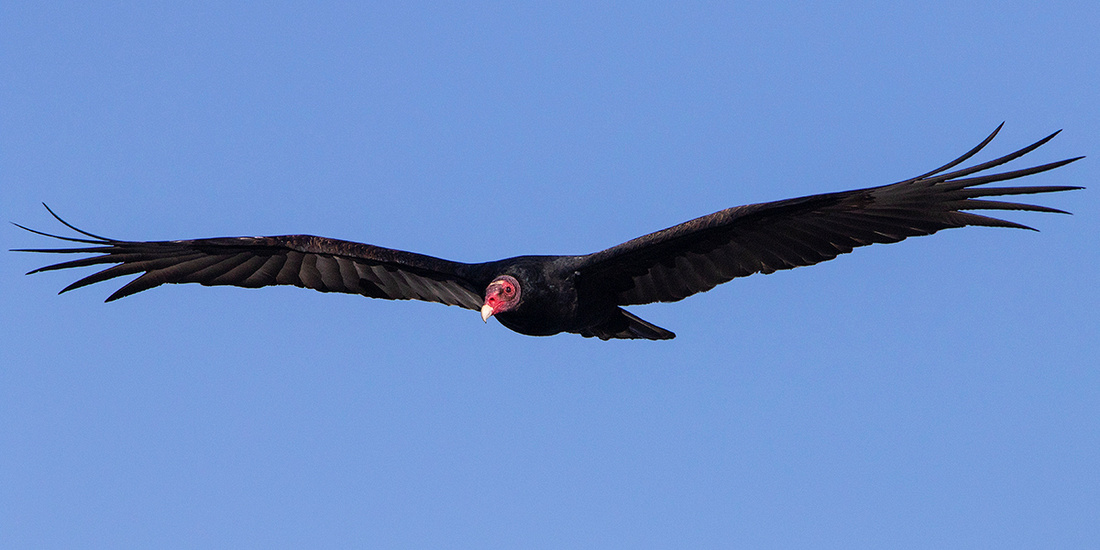

Northern pintail is the most common duck on the refuge during winter. Over 30,000 pintails can be present during December.
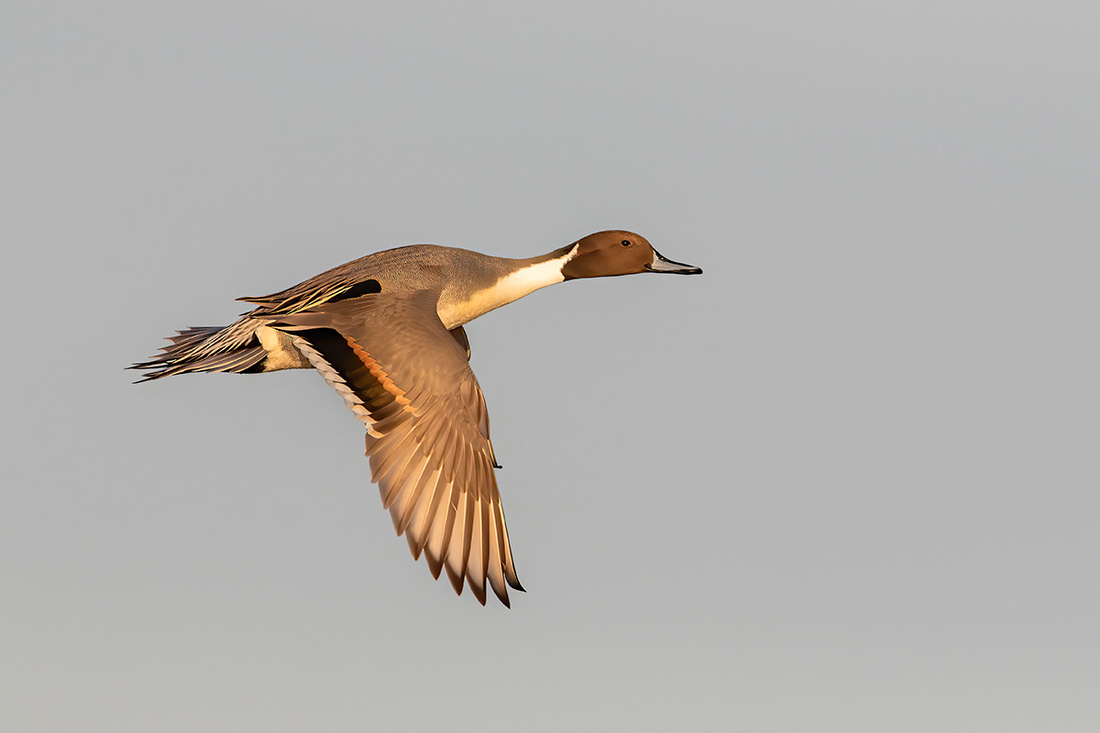







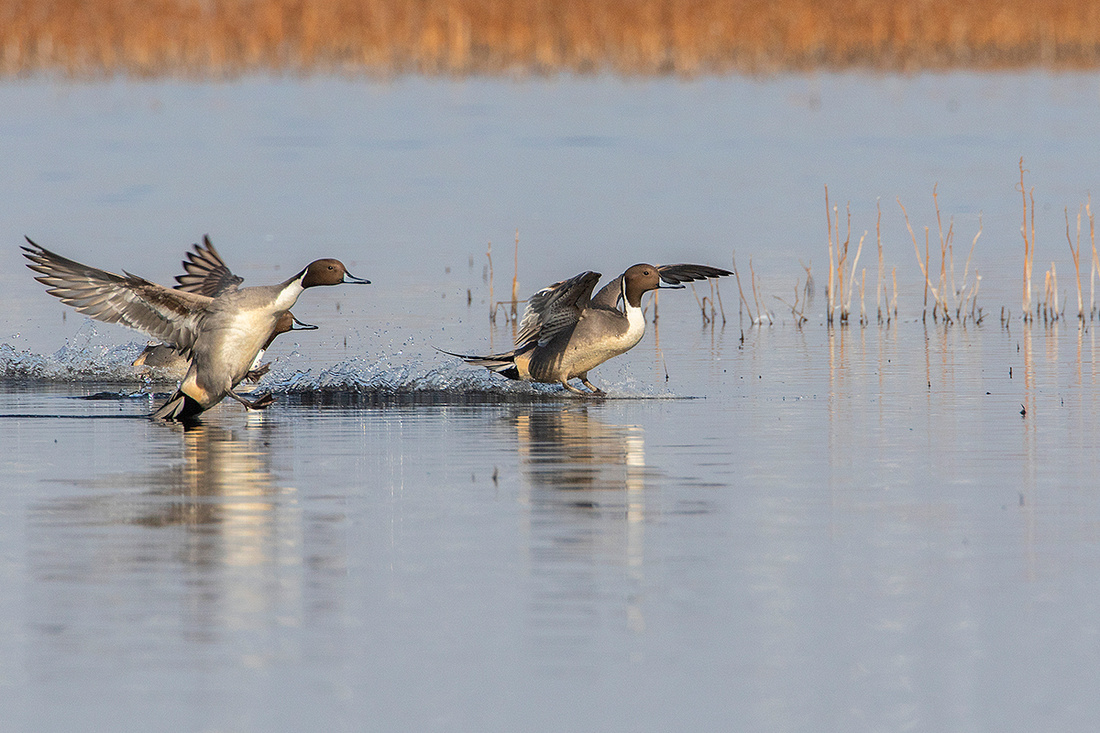
 Large numbers of American coot can be present and are easily observed from the auto tour route.
Large numbers of American coot can be present and are easily observed from the auto tour route.
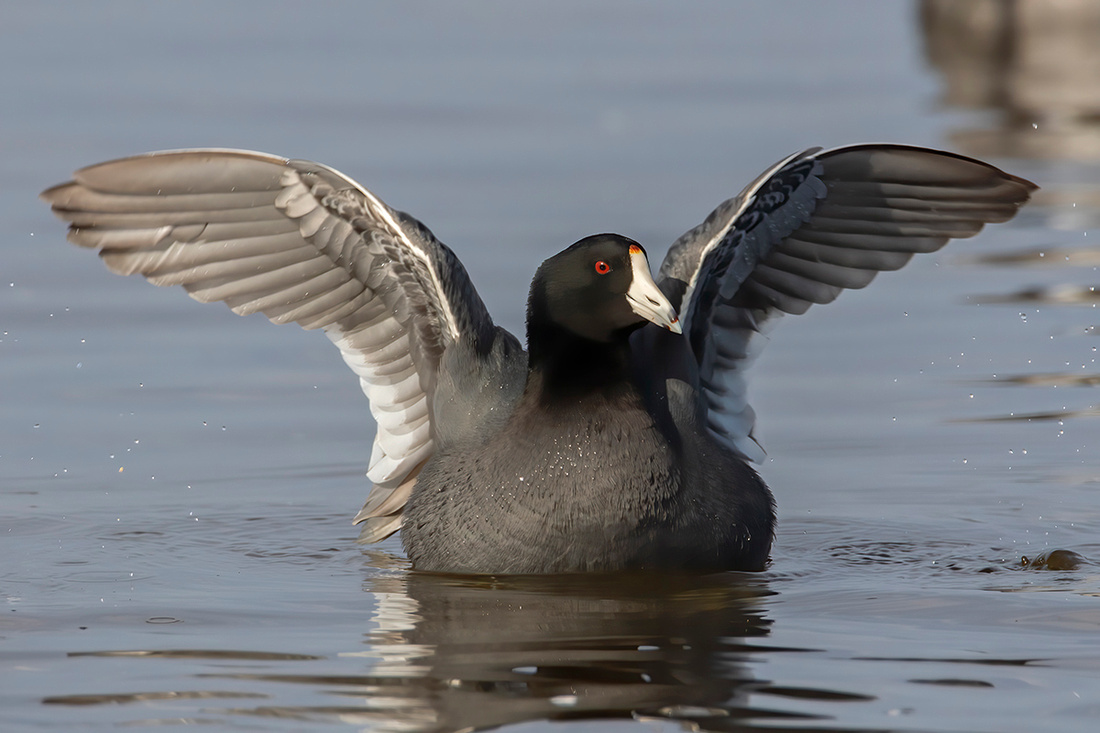

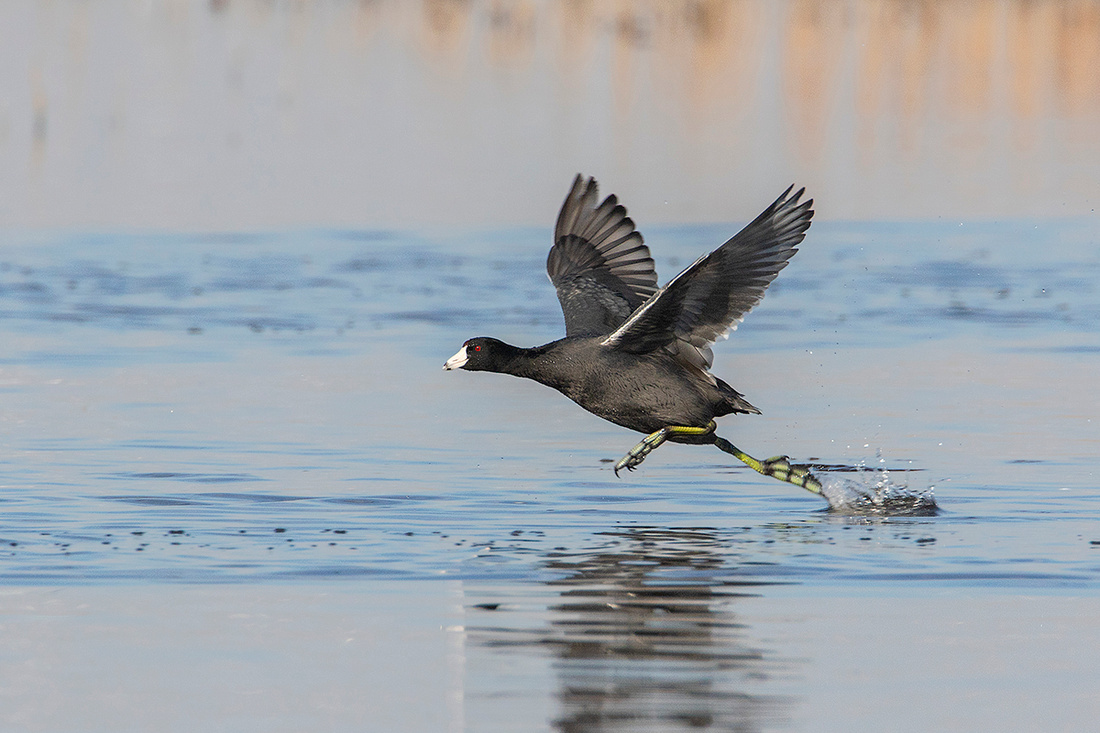

Relatively few ducks were observed or photographed during this most recent visit to the refuge. However, the refuge can be an excellent location to observe and photograph gadwall, mallard, northern shoveler, green-winged teal, ring-necked duck and cinnamon teal. October through March is a great time to visit the refuge (which is just minutes off of I-5) and view the incredible abundance of waterfowl. Thanks for visiting my blog. Consider a winter visit to the refuge.
Southern Africa September 2018
I have always dreamed of experiencing an African safari. For a biologist and a photographer, an African safari is one of those bucket list life experiences. My wife, Becky, and I had been investigating various options including different African locations, seasons, and tour companies for several years. We decided on the "Ultimate Africa Tour" offered by Overseas Adventure Travel (OAT) which includes camps in Botswana, Zambia, and Zimbabwe. We chose to go in September as it is near the end of the dry season. Benefits of this time period are fewer mosquitos and tsetse flies. Wildlife is more concentrated and dependent on the limited water supply. The deciduous trees and shrubs are leafless which greatly improves the visibility of wildlife. The grasses are grazed or trampled which also makes wildlife more visible to the photographer. This time of year generally has low humidity and few cloudy days, but it can be quite hot. Temperatures above 100 degrees F can, and did, occur. However, these temperatures are comparable to what we experience at home in Northern California during September.
We decided to add on one of the OAT pre-trip extensions to a private "game reserve" in South Africa near Kruger National Park. OAT arranged our air transportation from the U.S. on British Air. We had planned to fly from San Francisco to London (11.5 hour long flight,) have a 4 hour layover, and then catch another 11.5 hour flight to Johannesburg. However, during the course of our London layover we found out that our flight to Johannesburg was delayed about 30 hours. British Air offered us the option to wait for the delayed flight or to fly on South African Air which was scheduled to take off and land about the same time as our original British Air flight. We chose South African Air.
An OAT representative was to meet us at the Johannesburg Airport and arrange transportation to the O.R. Tambo Protea Hotel for an overnight stay. We were not met. Not a good start by OAT. We found transportation and arrived at the hotel early on the morning of September 10. The hotel staff were great and managed to get us in a room by 10AM. We had initially planned to take a bus tour of the city and the the nearby community of Soweto. Soweto is the home of Desmond Tutu and Nelson Mandela. Having little or no sleep on the planes we instead opted for a nap.
After breakfast the next morning, we met our seven fellow OAT travelers and were transported to the airport where we boarded a smallish turboprop plane for a short hop to Hoedspruit, South Africa. Hoedspruit was easily the smallest airport I have ever been in. The parking lot was full of safari trucks and numerous vervet monkey.
Our driver met us and loaded the bags into a large van. OAT provides travel duffle bags and insists that you use them. Each traveler is limited to a total of 44 pounds. Almost half my weight was camera equipment and supplies. We were hardly out of the parking lot and saw the first of many impala and several giraffe grazing along the road. We were transported over good blacktop roads for about two hours to Karongwe River Lodge, close to the Drakesbad Escarpment. In route we passed numerous "game reserves" cattle ranches and citrus farms.
I was a little unclear on the whole premise of a game reserve, but Karongwe was a 20,000 acre former cattle ranch surrounded by 10 foot high electrified fence to keep wildlife in and poachers out. I had been advised that the game reserves almost guaranteed sightings of the Big Five (lion, leopard, buffalo, elephant and rhino) and that the remainder of our camps were unlikely to have rhino. I believe that the reserve may have been initially stocked with some wildlife species and that they actively trade animals with other reserves.
We were met by the staff and manager with cool towels and drinks and ushered to our rooms after a lodge safety briefing. We were also requested to sign a liability waiver. Our room was huge. High ceilings, four beds and air conditioning.
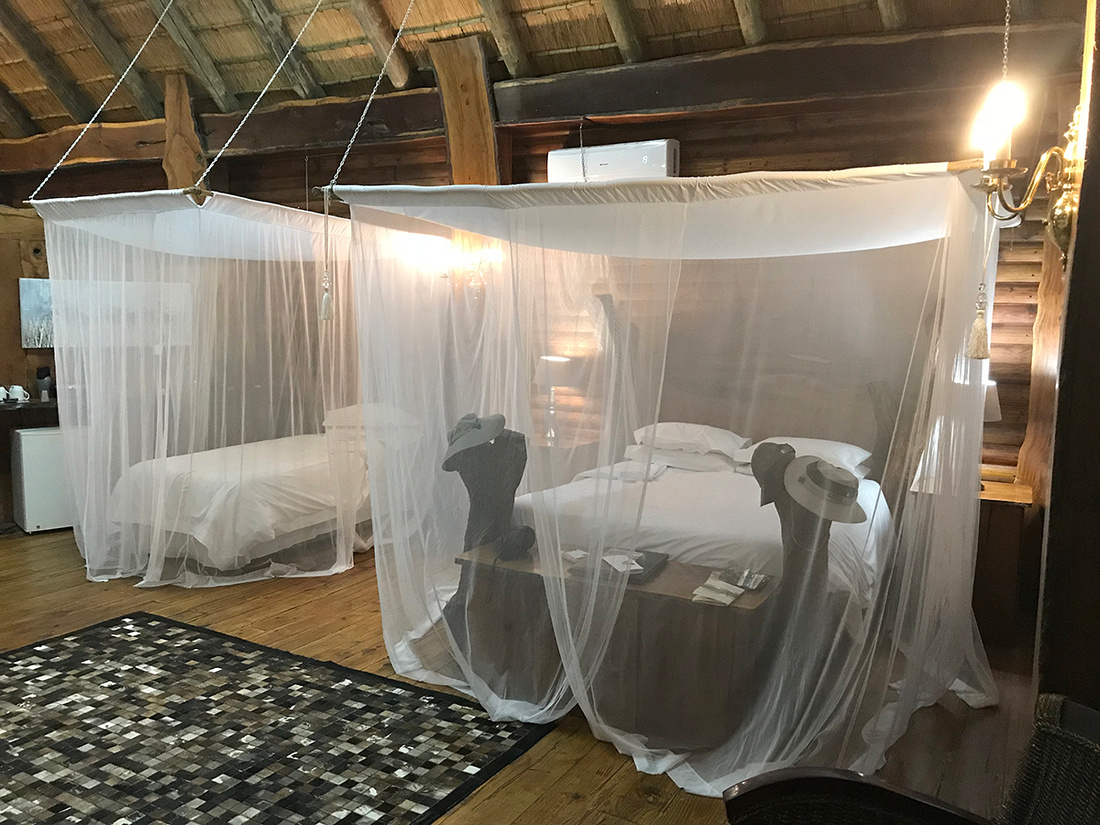

The bathroom was also spacious and contained a large shower and a claw foot tub. We unpacked and got ready for high tea (a British tradition that always included tea and dessert). We met our guide (Mathew) and our tracker (David). The reserve was the only camp where we had both a guide and a tracker on each vehicle. The tracker rode on a special seat attached to the left front fender. After high tea we loaded all nine of us into safari vehicles. The safari vehicles were a little different in each camp. At Karongwe, they were new Toyota 4W drive trucks with an aftermarket set of three tiered bench seats bolted to the bed. Getting into the seats required some agility.
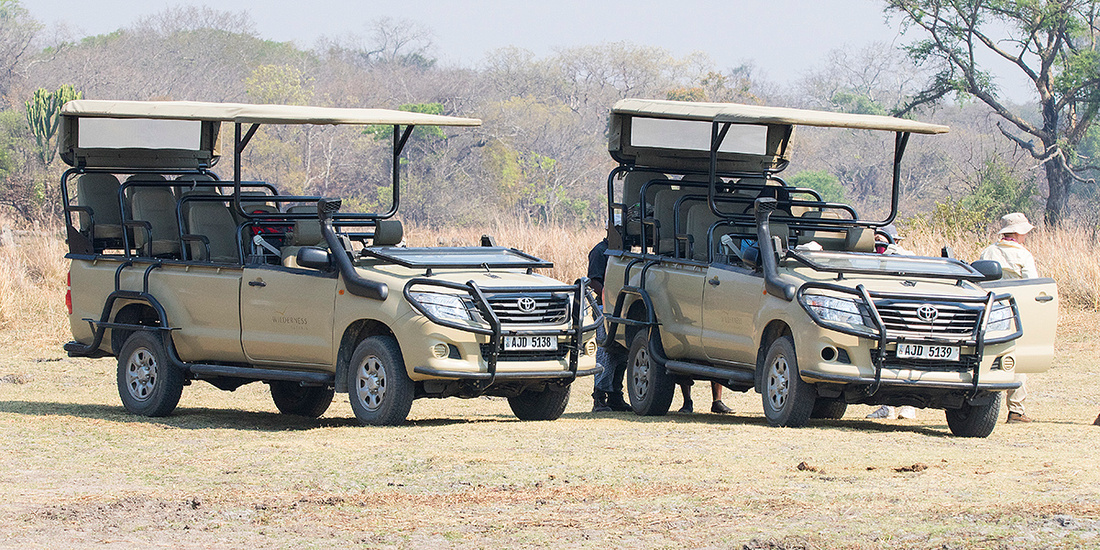

We loaded up and departed on our first game drive. I am not sure what I expected, but I did not expect two mature leopards on a fresh nyala kill within 1/4 mile of camp. A very good start. We soon discovered one of the advantages of a private reserve over the National Parks is the ability to go off-road. We murdered many trees tracking the leopards to a brushy gully where they were enjoying dinner. I was very excited to see my first leopards, but they were in a very difficult location for photography. Over the next four hours or so we saw waterbuck, kudu, impala, white rhino, cheetah, crocodile, nyala, wildebeest, giraffe, dukier, warthog, baboon, vervet monkey, bushbuck and the same two leopards again. The cheetahs were just finishing up an impala kill they had made. The kill was out in the open, but the light was fading. I got a few keeper images of the cheetahs, but many were blurry.
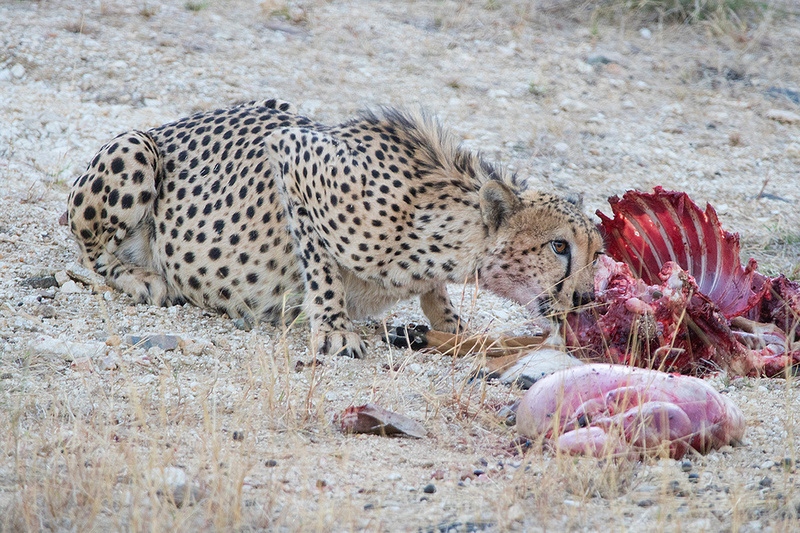
 Cheetah on kill
Cheetah on kill
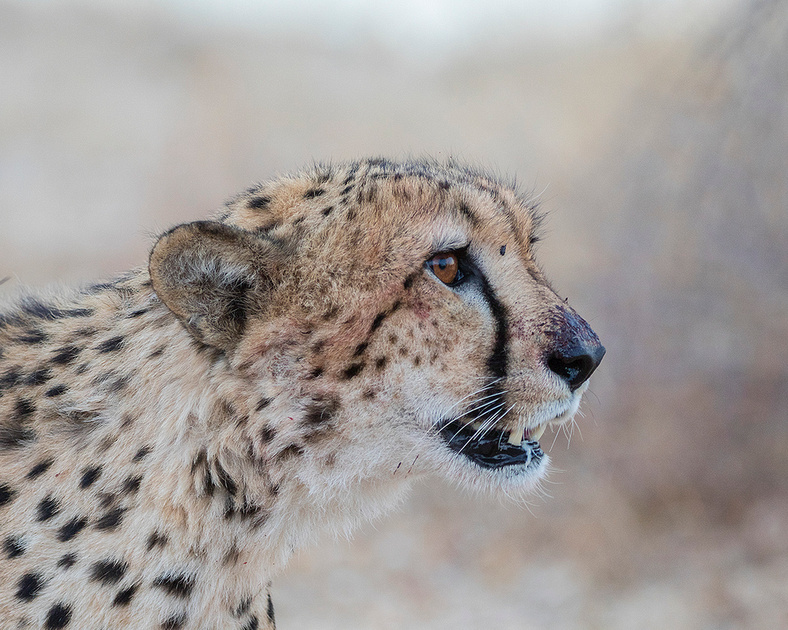
 Cheetah
Cheetah
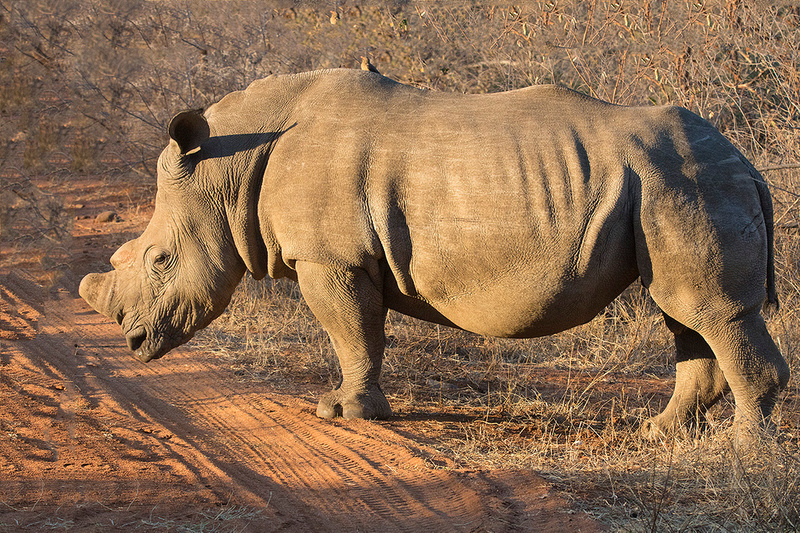

White Rhino (Note the Red-Billed Oxpecker on the Shoulder)
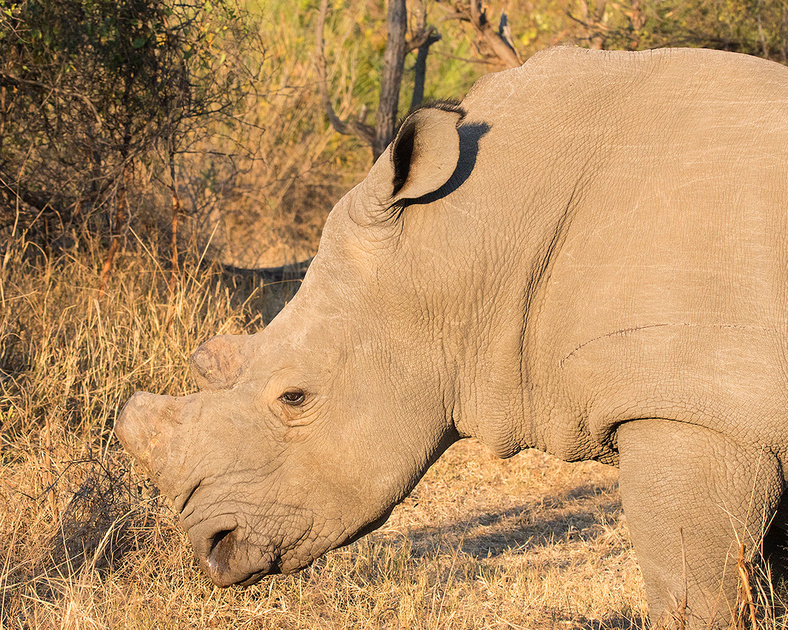
 White Rhino (Note the horn has been removed to deter poaching)
White Rhino (Note the horn has been removed to deter poaching)
We stopped just before sunset and experienced another African tradition, the sundowner. The guide parked and set up the bar on the hood. Everyone had a drink as the sun set. A very nice tradition. On the drive back to the lodge the tracker used a spotlight to locate nocturnal wildlife. We did see a civit cat briefly using the light.
We had time for a short happy hour before dinner. The local lagers were Castle and Carlton Black Label. Dinner was quite good and included ostrich kabobs. In fact all the food at the lodge was quite good. At this location we ordered off the menu as opposed to the buffets which were the norm on the remainder of the trip. Dinner was served outside on the patio overlooking the Makutsi River bed. We were escorted to our room after dinner by the guides. We were not allowed to walk at night in any of the camps unescorted.
We were up before daylight for coffee and pastries before heading out on our morning game drive and continuing quest for the Big Five. Temperatures were in the high 40s and low 50s each morning. It was prudent to dress in layers as it was pretty cool traveling in an open vehicle.
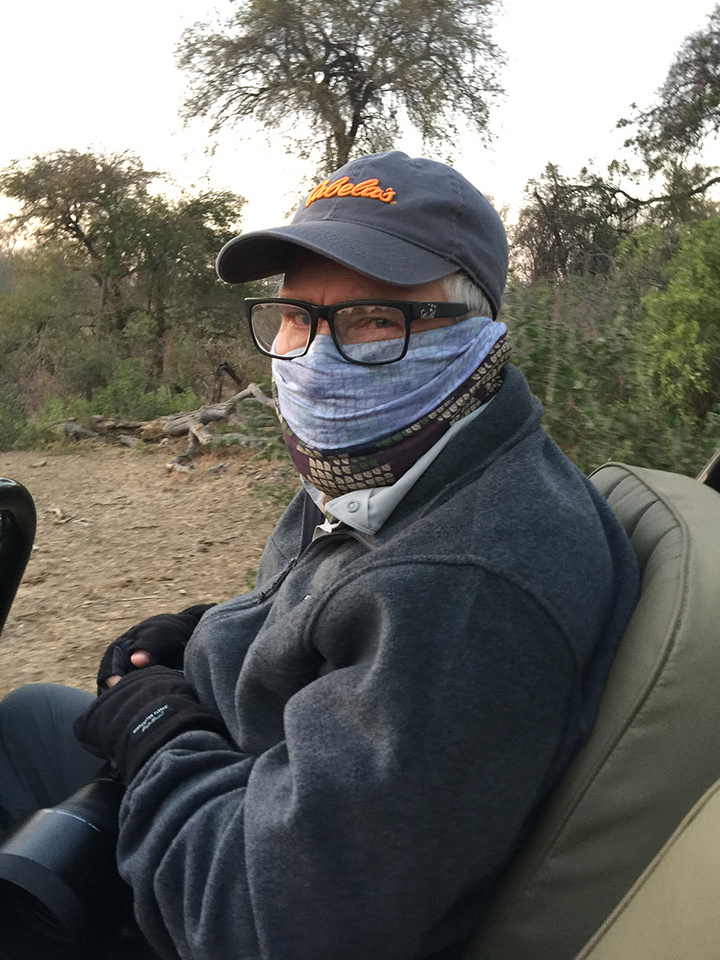

The Author Bundled up for the Arctic
It warmed up most days to the high 70s. I was the only birder in the group. The guide was good about pointing out each new bird species. In addition to the wildlife species we had seen the previous evening we also observed elephants, zebras, jackals, hippo, steinbuck, and dwarf mongoose.
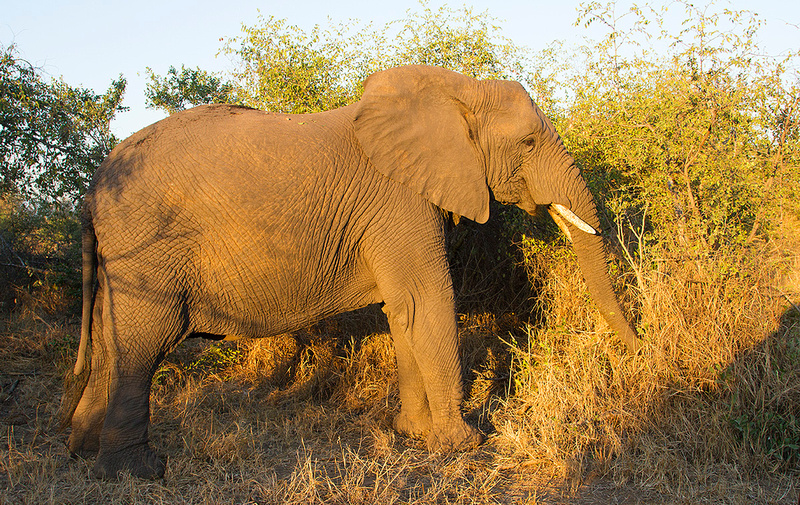
 Elephant in Warm Morning Light
Elephant in Warm Morning Light
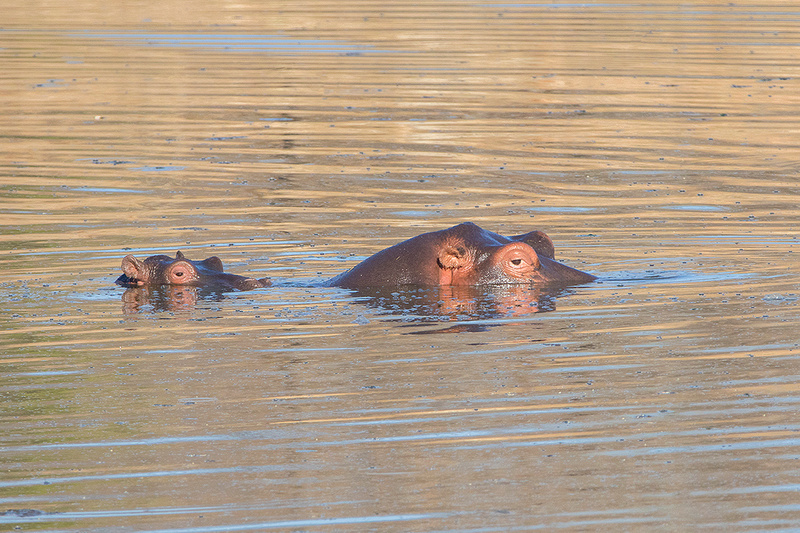
 Back Riding Baby Hippo
Back Riding Baby Hippo
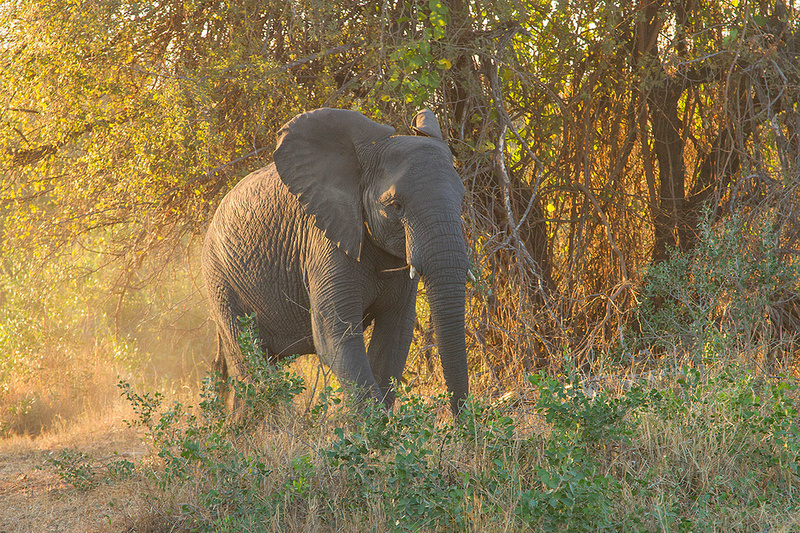
 Elephant on the Move
Elephant on the Move
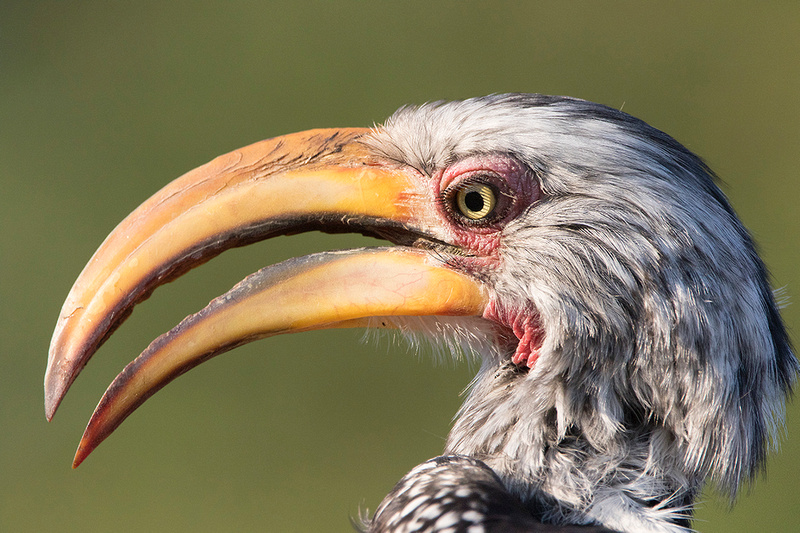
 Southern Yellow-Billed Hornbill
Southern Yellow-Billed Hornbill
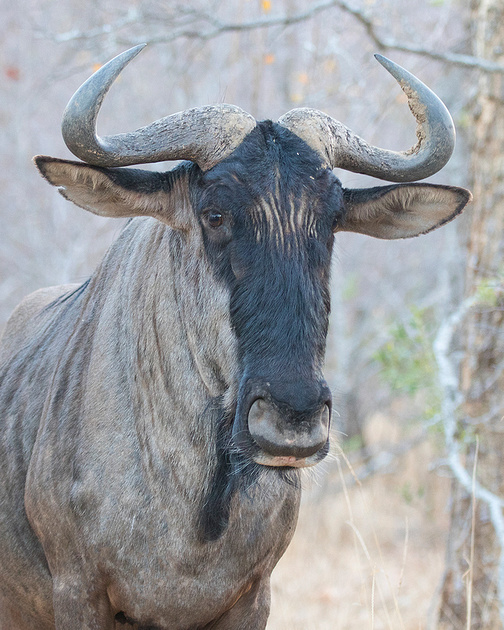

Wildebeest
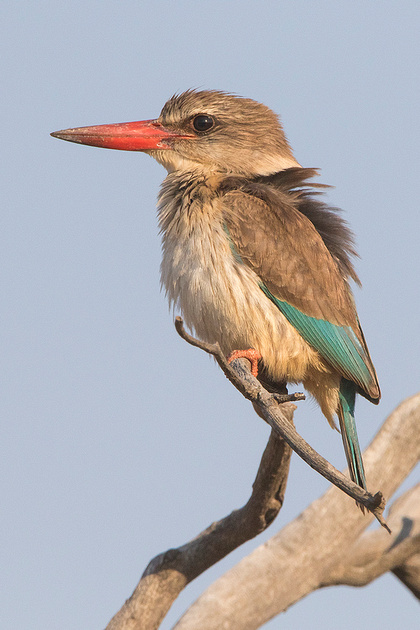

Brown Hooded Kingfisher
We saw two additional white rhino. They have over thirty rhinos on the reserve. Each has a unique ear notch pattern to allow the guides to identify individual animals. The horns on all the rhinos had been removed to prevent poaching. On our evening game drive we found six lions sleeping in some dense brush. We parked within eight feet a of a large sleeping male. Too close! Great mane, but again brush and grass were difficult to shoot through and my first lion images were less than perfect. Unfortunately, these were almost our only lion sightings at the reserve.

 Young Male Lion
Young Male Lion
We had another day of morning and evening game drives on September 13. We found a herd of buffalo to complete our Big Five.
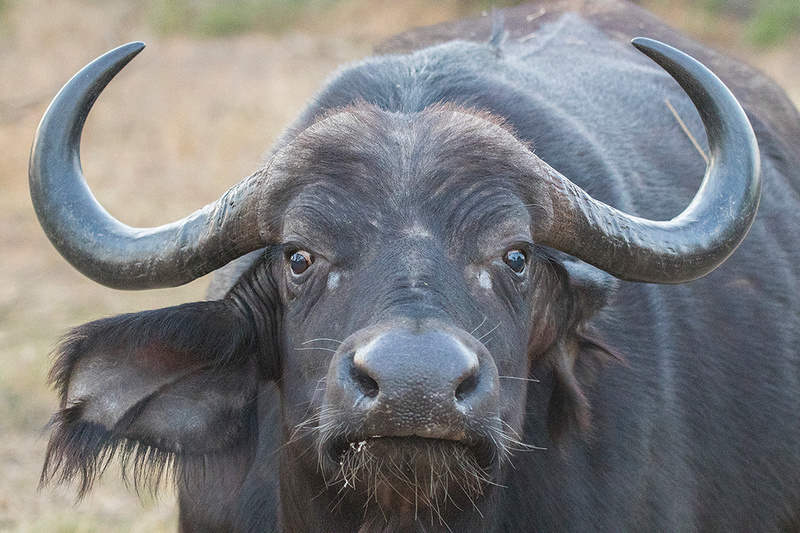
 Adult Cow Buffalo
Adult Cow Buffalo
We also observed elephant and several rhinos. The buffalo were mostly cows and calves. We parked the truck and they feed all around us within twenty feet or so, at first light. I discovered that the lodge had a wildlife viewing blind at the waterhole (large shallow pond) adjacent to camp. I spent most of the time in camp working on my bird life list at the waterhole and attempting photography in the harsh mid-day light.
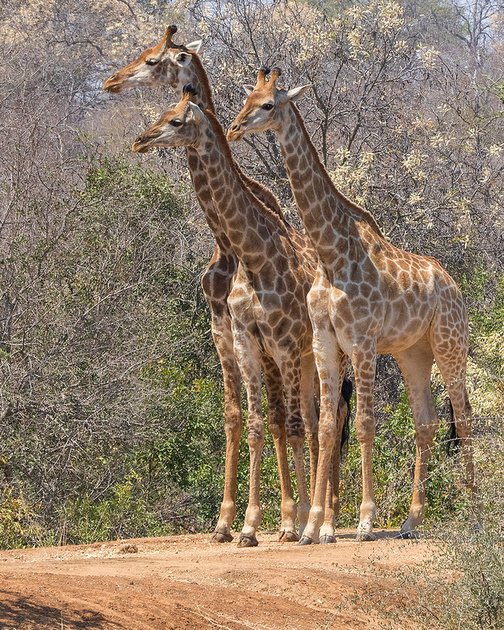

A Tower of Giraffes
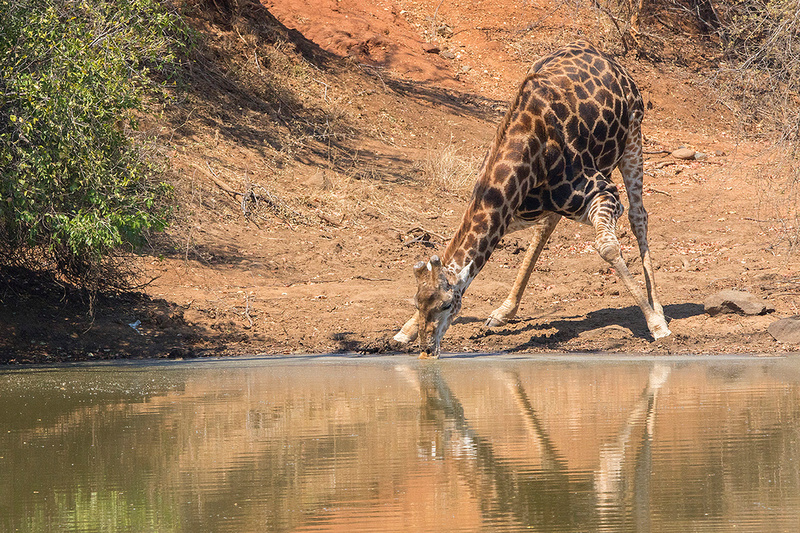

I was able to photograph a pair of amorous crocodiles at the waterhole.
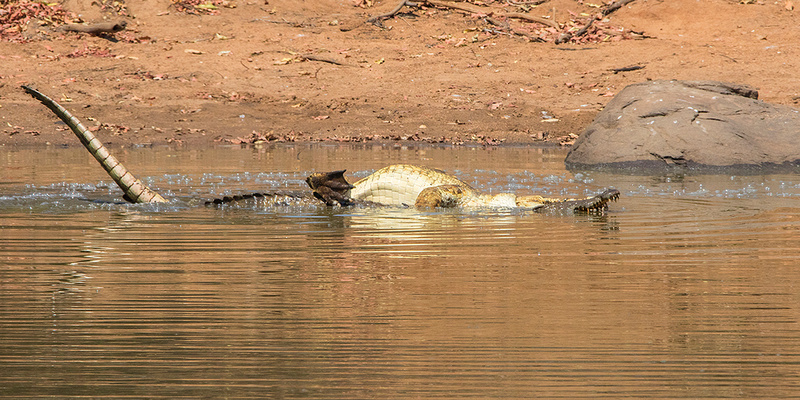
 Mating Crocodiles
Mating Crocodiles

 African Fish Eagle Territorial Dispute
African Fish Eagle Territorial Dispute
On our evening game drive the tracker observed two distant giraffe acting oddly. We drove closer and found the source of their behavior; a mature leopard was streched out in the open on the ground in front of an abandoned lodge. I took hundreds of photos at fifty feet. Such a beautiful animal. We discovered that he had made a recent kill and had hid it (impala) under the lodge building. He eventually strolled around under the building and began to feed.

 Adult Leopard
Adult Leopard

 Adult Leopard
Adult Leopard
Another morning and evening game drive on September 14. We saw a black-backed jackal. We had previously seen only the side-striped jackal species. We had a brief sighting of a lioness. We saw the three cheetahs (brothers) asleep in the morning sun. They pretty much ignored us and offered few photo opportunities.
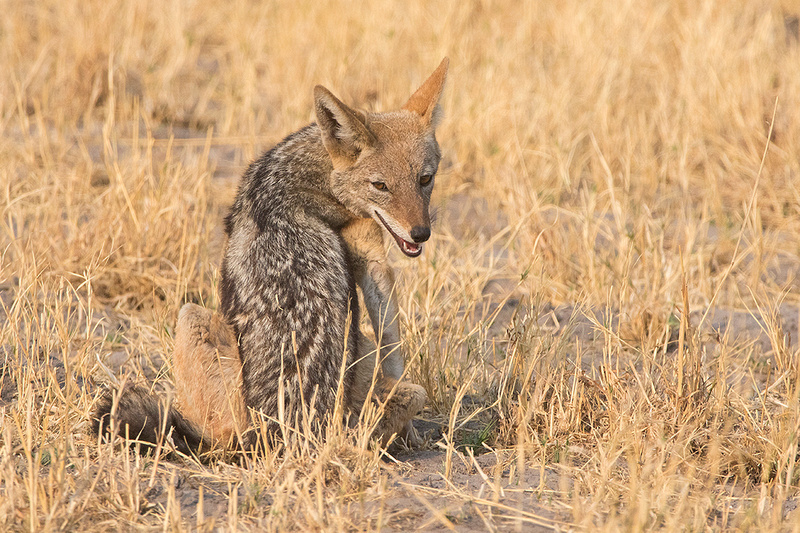
 Black-Backed Jackal
Black-Backed Jackal
September 15th was our last morning at the reserve. We spent most of the morning searching for lions, but came up empty. This game drive was the only time we saw one of the perimeter fences. We followed the fence line and parked the truck. The guide unloaded all of us and walked us to within twenty-five feet (yes feet) of three cheetahs on a fresh kill. I got a number of decent images of the brothers grooming each other.
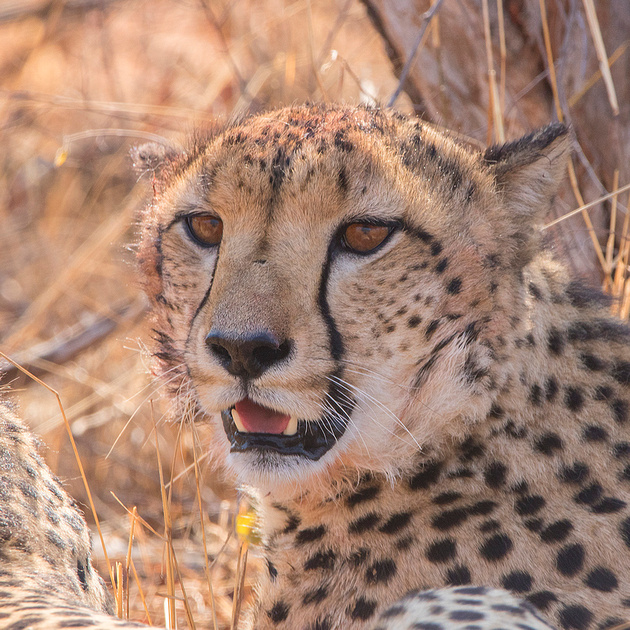
 Cheetah
Cheetah

 Cheetahs Grooming
Cheetahs Grooming
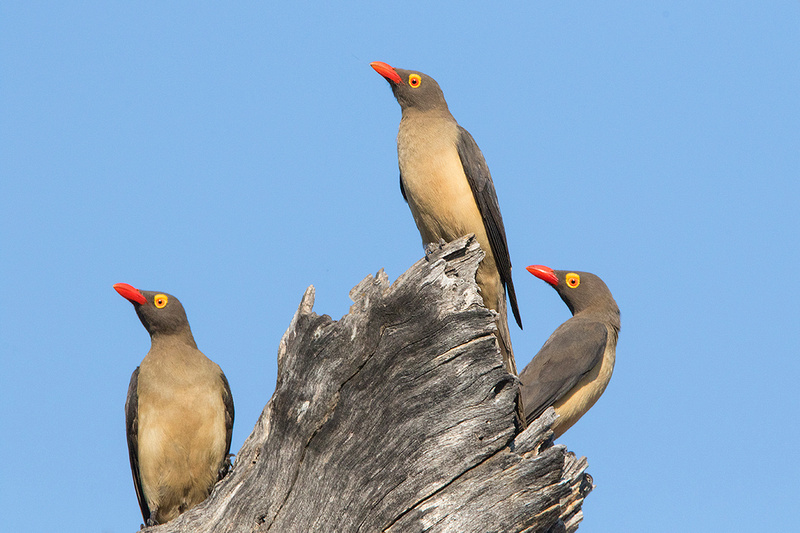
 Red-Billed Oxpecker
Red-Billed Oxpecker
After the morning game drive, we retraced our steps back to the Hoedspruit Airport, flight back to Johannesburg and then to the O.R. Tambo Protea Hotel for another overnight stay. The next morning we met the remainder of our tour, which consisted of five additional travelers.
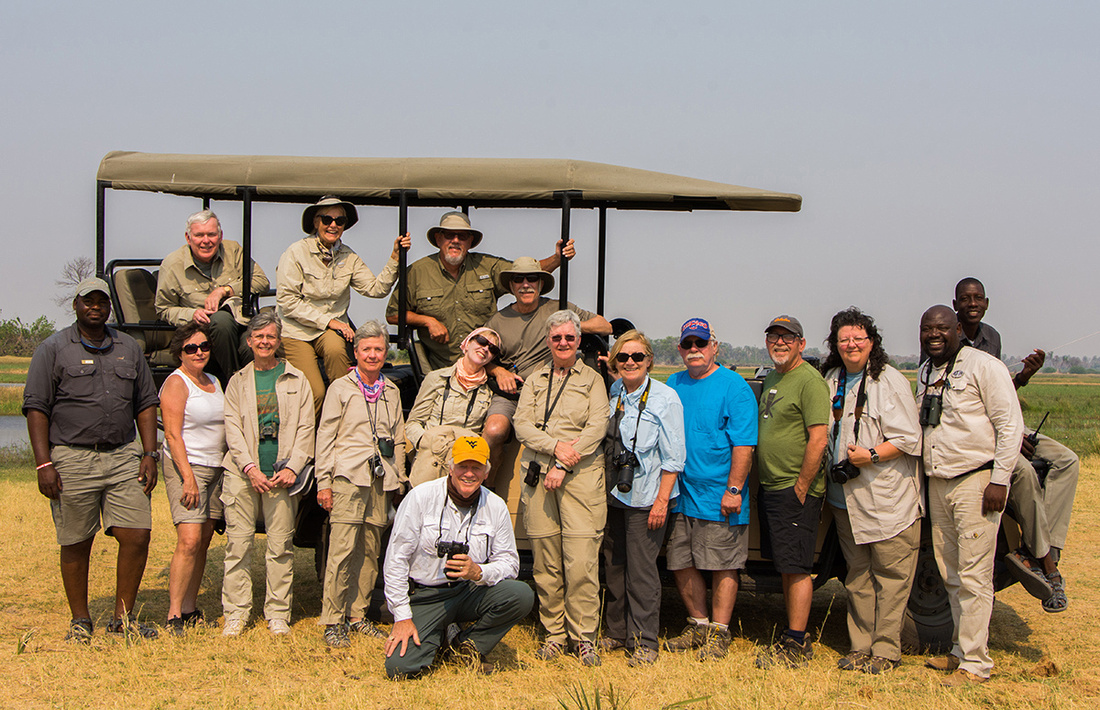

Photo Credit: Stephen Cochran
We caught a commercial British Airways jet for transport to Victoria Falls, Zimbabwe where we were met by our OAT Trip Leader. It took over an hour to get all of us through immigration and to pay our visa fees.
I should mention a few things about OAT. They specialize in small group travel, advertising never more than 16 travelers on a tour. All of the participants on our tour were Americans. Most of the people on our tour were repeat OAT customers. This was the 19th OAT trip for one of our tour members. Most of the group had traveled with OAT several times and one member had previously done this same tour about fifteen years ago. The pre trip extension was all about the game drives. The main tour included lots of game drives, but also several cultural experiences. We visited a school and a homestead within a village while in Zimbabwe. During high tea, staff at each of the camps made presentations each afternoon on subjects varying from making peanut butter to the HIV epidemic.
After clearing immigration we took a bus to the entrance of Hwange National Park (Zimbabwe's largest park). We were met at the park entrance by our safari guides Victor and Abut who transported us through the park to Kashwe Camp, our home for the next several days. This camp and all the others on the tour was operated by Wilderness Unlimited and provided tents of some form for lodging. The tent was roomy, clean, and comfortable with solar water heating and electricity. Each room had a large stand fan for cooling. It was significantly warmer here than in South Africa. This was the only camp where we were escorted to our tents each evening by an armed guard.


Becky on the Veranda of our Kashawe Camp Tent
All meals were served buffet style and we sampled some local sorghum beer. Definitely an acquired taste.
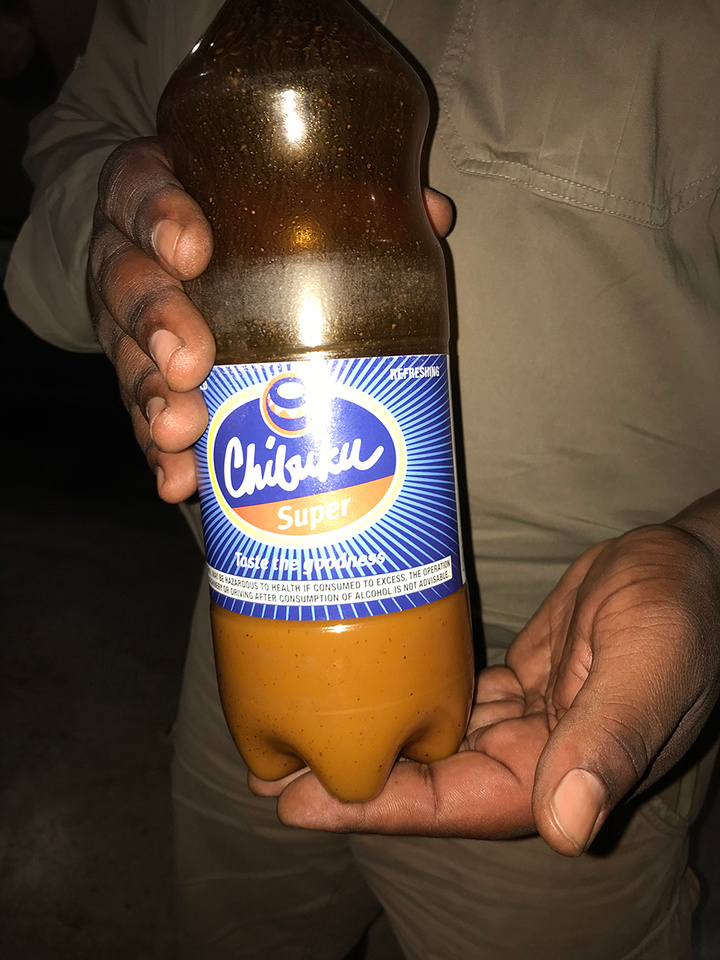

Sorghum Beer
The camps all provided complimentary laundry service which allowed us to pack light on clothes. The park was quite dry with only isolated surface water. The entire park appeared heavily over grazed by elephants Damaged and downed trees were common.


Elephant Damaged Baobob Tree
Wildlife was not as abundant or as diverse as at the game reserve and was difficult to locate away from water. We did observe a very large herd of buffalo at a great distance and many elephants. No cats or rhinos. We also had opportunities to photograph a number of avian species including the stunning lilac-breasted roller.
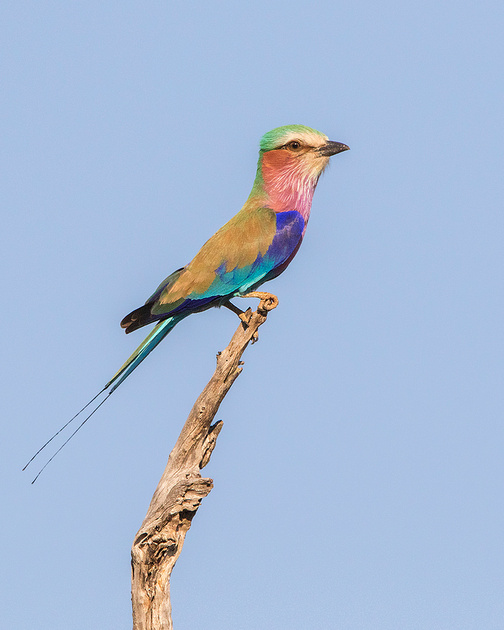

Lilac-Breasted Roller
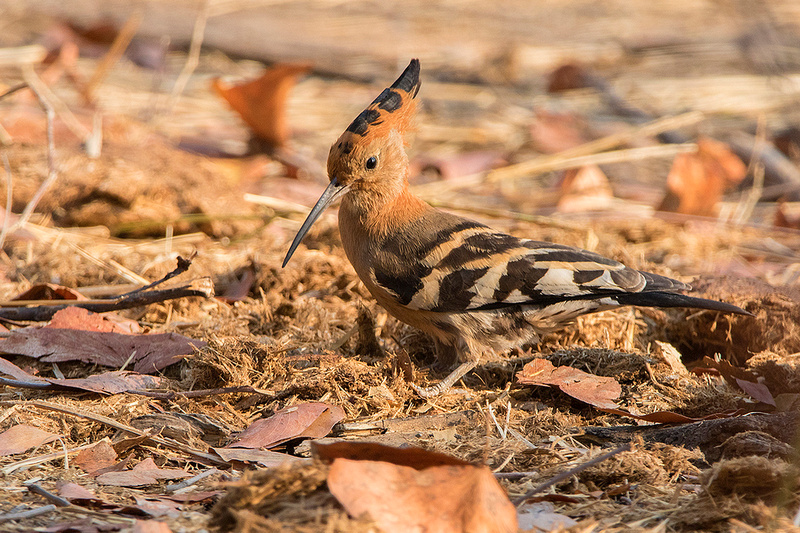
 African Hoope
African Hoope
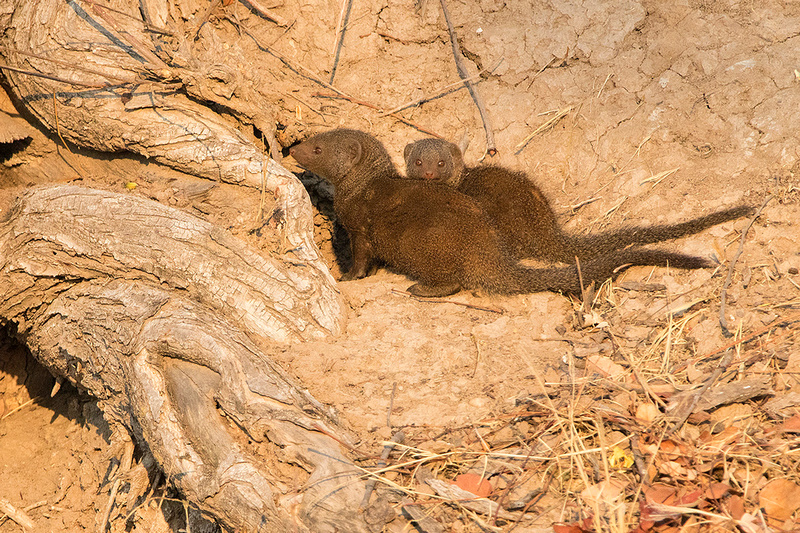
 Dwarf Mongoose
Dwarf Mongoose
On our last full day in camp we enjoyed an "all day game viewing drive". Highlights of the drive were a visit to an isolated waterhole with an excellent elevated viewing blind. We spent several hours at the blind and enjoyed the antics of an elephant drinking and cooling off, a hippo territorial dispute, several crocodiles with a recent impala kill, and a large troop of baboons.
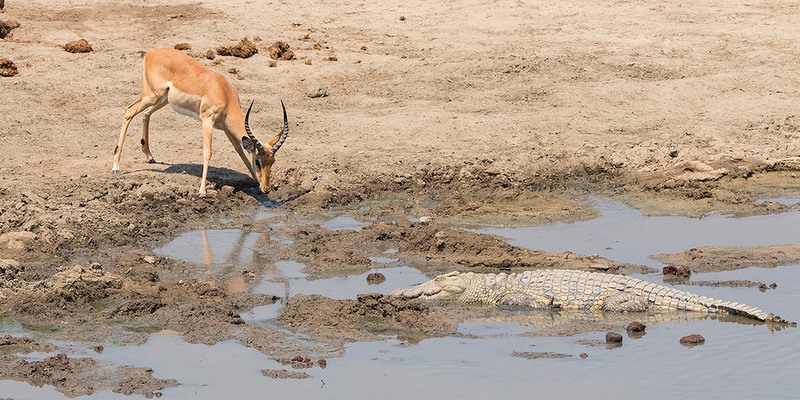
 Impala and Crocodile
Impala and Crocodile

 Crocodile and Impala
Crocodile and Impala

 Baboon Female and Young
Baboon Female and Young
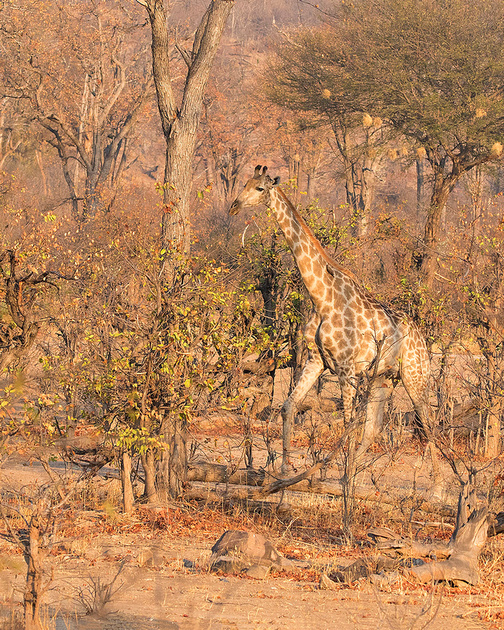

Sunset Giraffe
The next morning we departed Hwange National Park and crossed the border between Zimbabwe and Zambia. The border crossing was quick and smooth. We briefly toured a open air market in Livingstone, Zambia where our trip leader purchased mopane worms, a local delicacy.
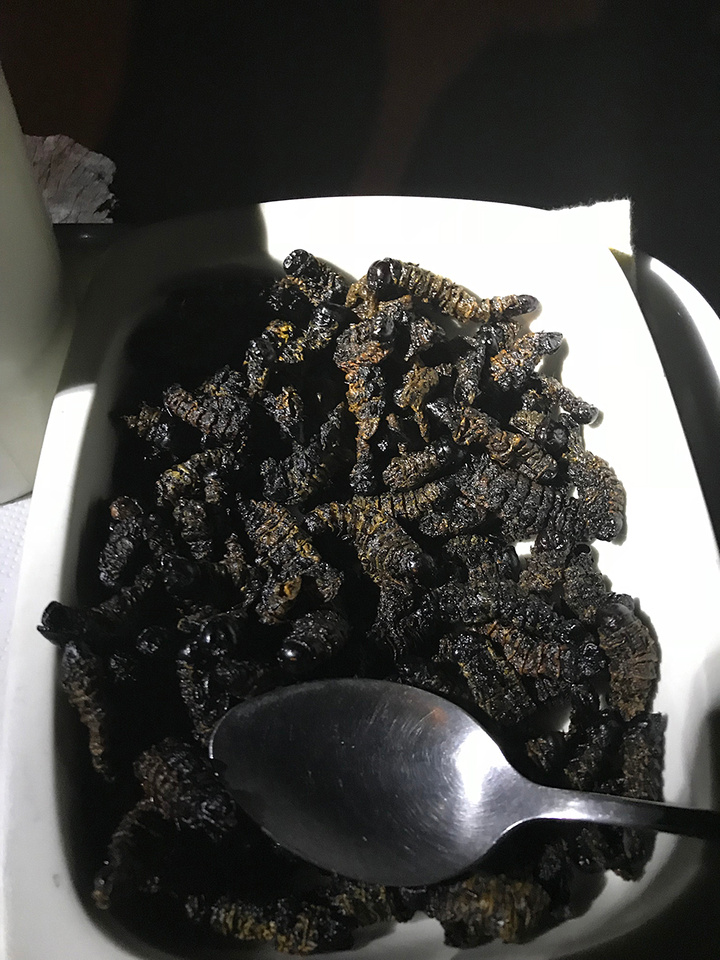

Mopane Worm- A Chewy and Crunchy Local Delicacy
We utilized the Livingstone Airport to catch our next flight to Lufupa River Camp in Kafue National Park in Zambia. This park is about 8,600 square miles in size. We divided up the group and flew in two small planes. Smooth flights and landings.
Lufupa River Lodge is located at the intersection of two large rivers (Kafue and Lufupa). Game drives at this location included both safari trucks and boats. Our tent was clean and comfortable, although afternoon temperatures were getting into the mid 90s. Zambia is the only country we visited where the tetse fly is present. Each vehicle had a large can of dried elephant dung attached to the back bumper. This dung was lit on fire and was reputed to be an effective tetse fly deterrent. We saw few flies, so perhaps it worked. I do know that when ever the vehicle stopped we were engulfed in choking clouds of elephant dung smoke.
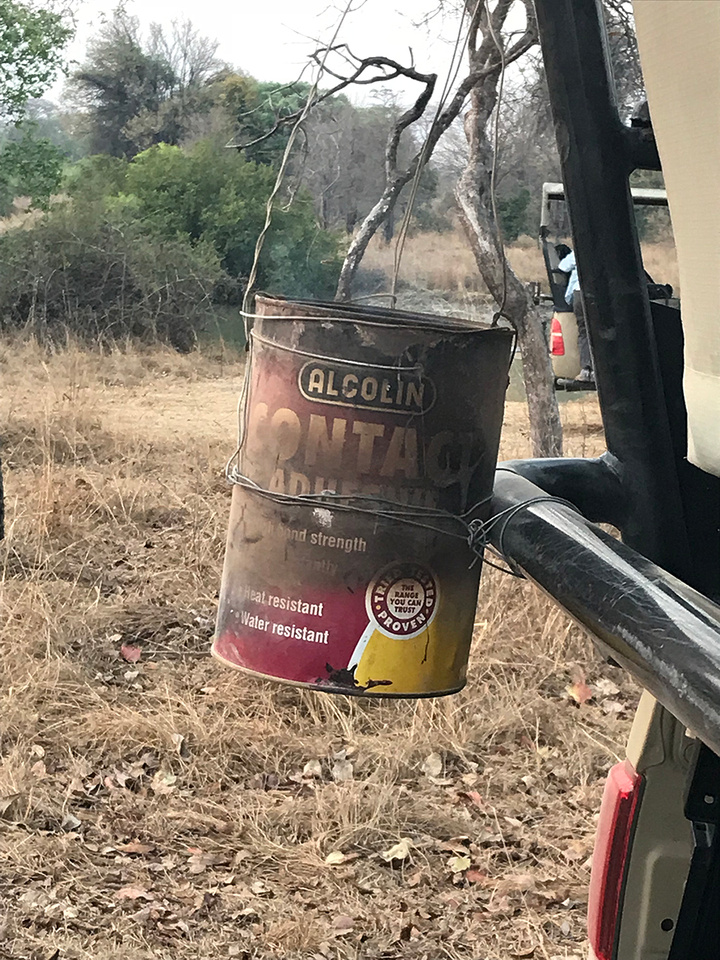

Burning Elephant Dung as a Tetse Fly Repellent
After a quick transfer from the landing strip to the lodge we set out on an evening game drive where we observed puku, an stocky antelope found only in Zambia and the Congo. We also observed a small herd of Lichenstein's hartebeest and a white-tailed mongoose while spotlighting on our way back to camp.
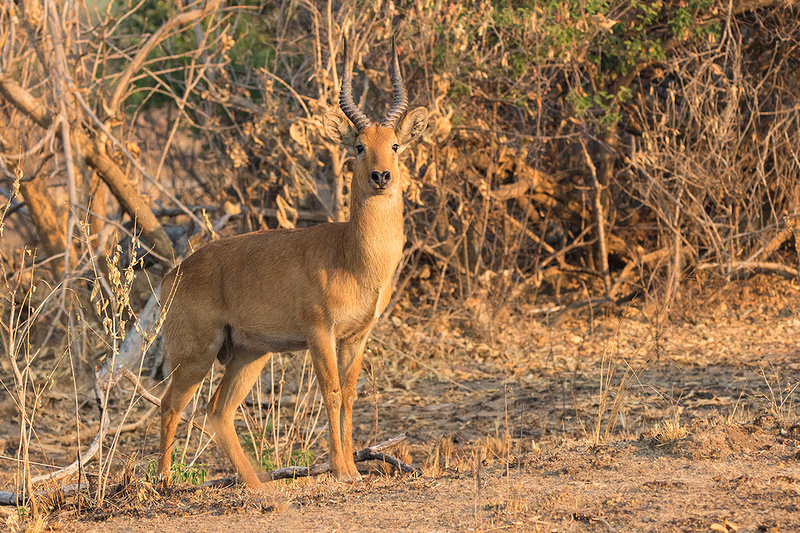
 Puku
Puku
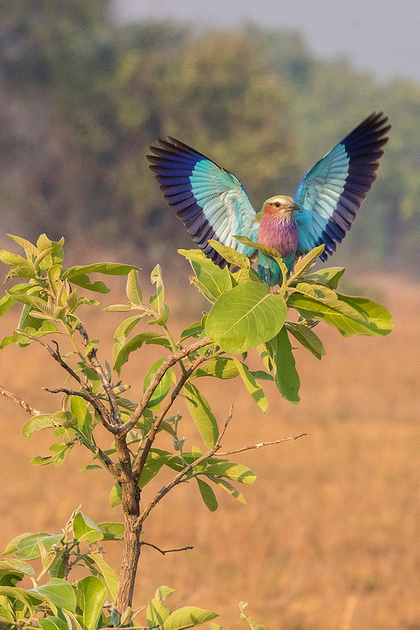

Lilac-Breasted Roller
On September 19th we enjoyed morning and evening game drives in the safari trucks. We saw a number of new bird species including the African finfoot, but otherwise the game drives were relatively unproductive with no sightings of the Big Five. On September 20th we explored the Lufupa River via a patio boat. Lots of hippos and crocodiles. We saw our first monitor lizard and several species of kingfisher.
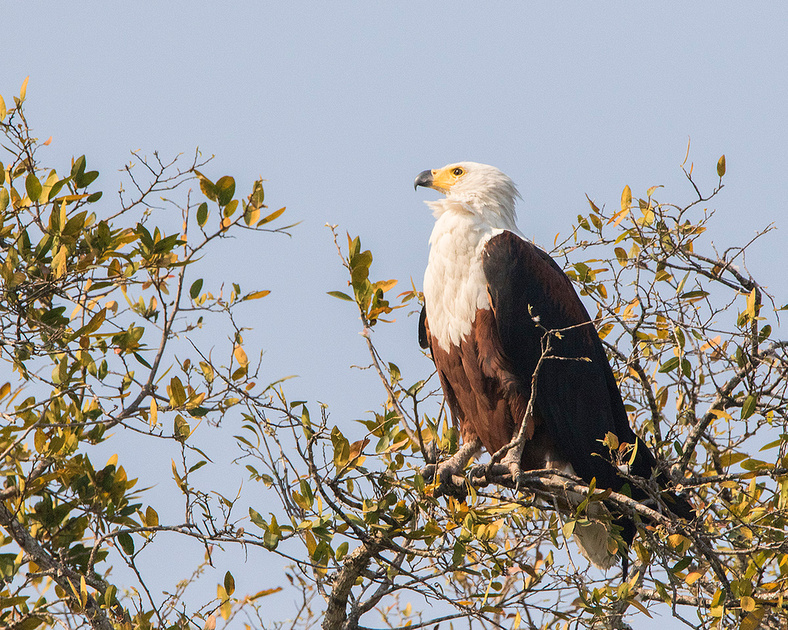
 African Fish Eagle
African Fish Eagle
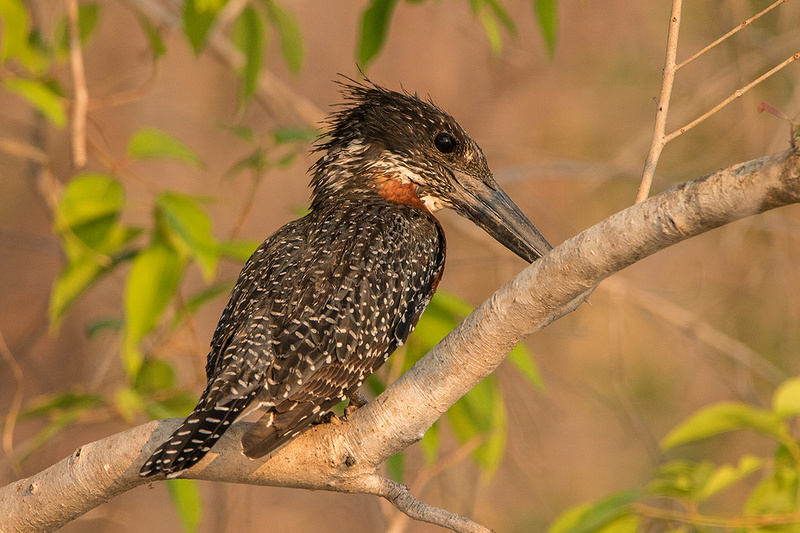
 Giant Kingfisher
Giant Kingfisher
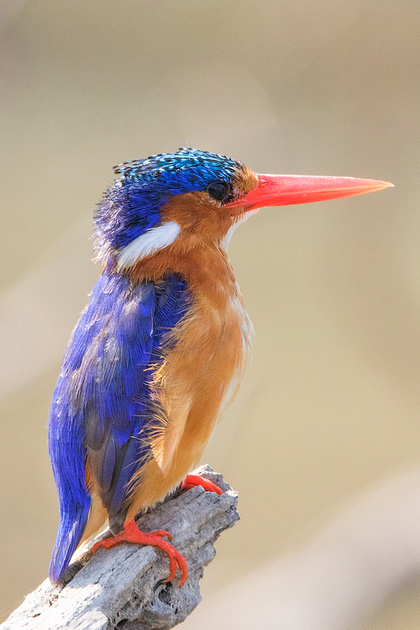

Malachite Kingfisher


Pied Kingfisher
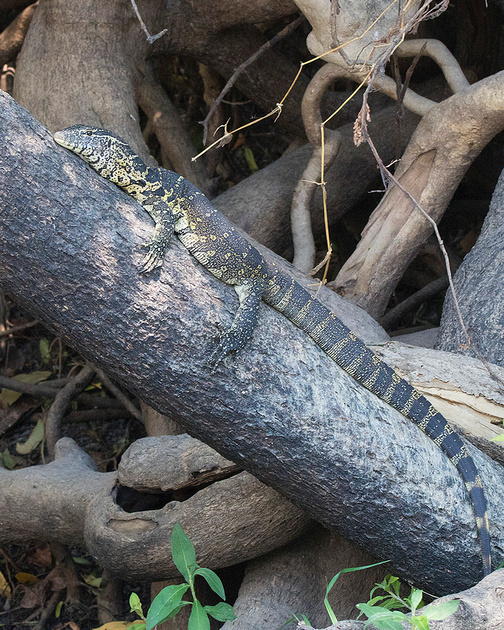

Water Monitor
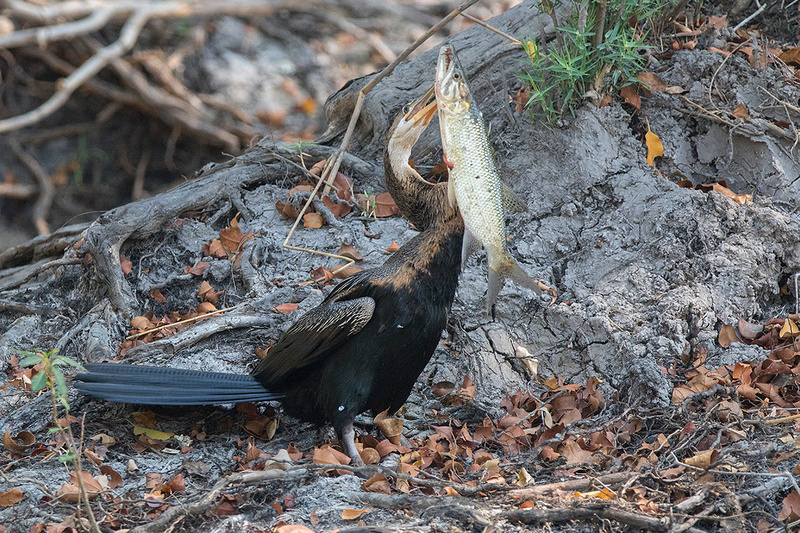
 African Darter with Pike
African Darter with Pike
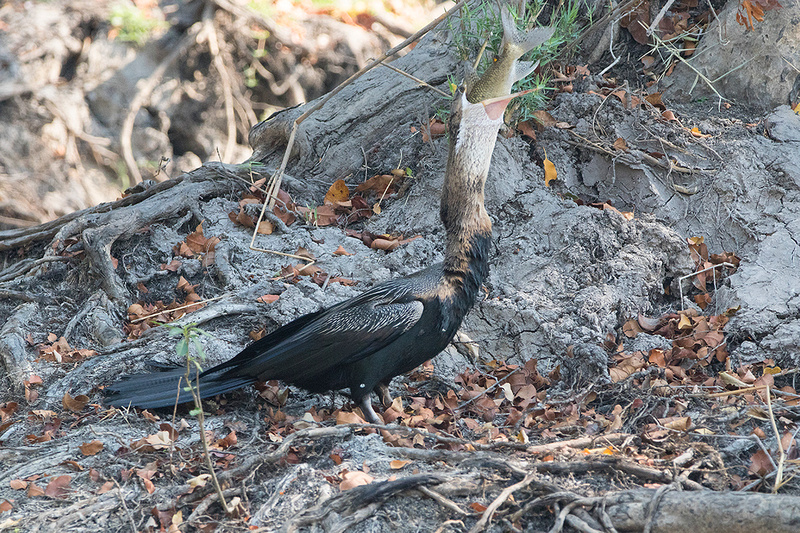
 African Darter Swallowing Pike
African Darter Swallowing Pike
Our tents were installed on the banks of the Kafue River and each had excellent views of the river.
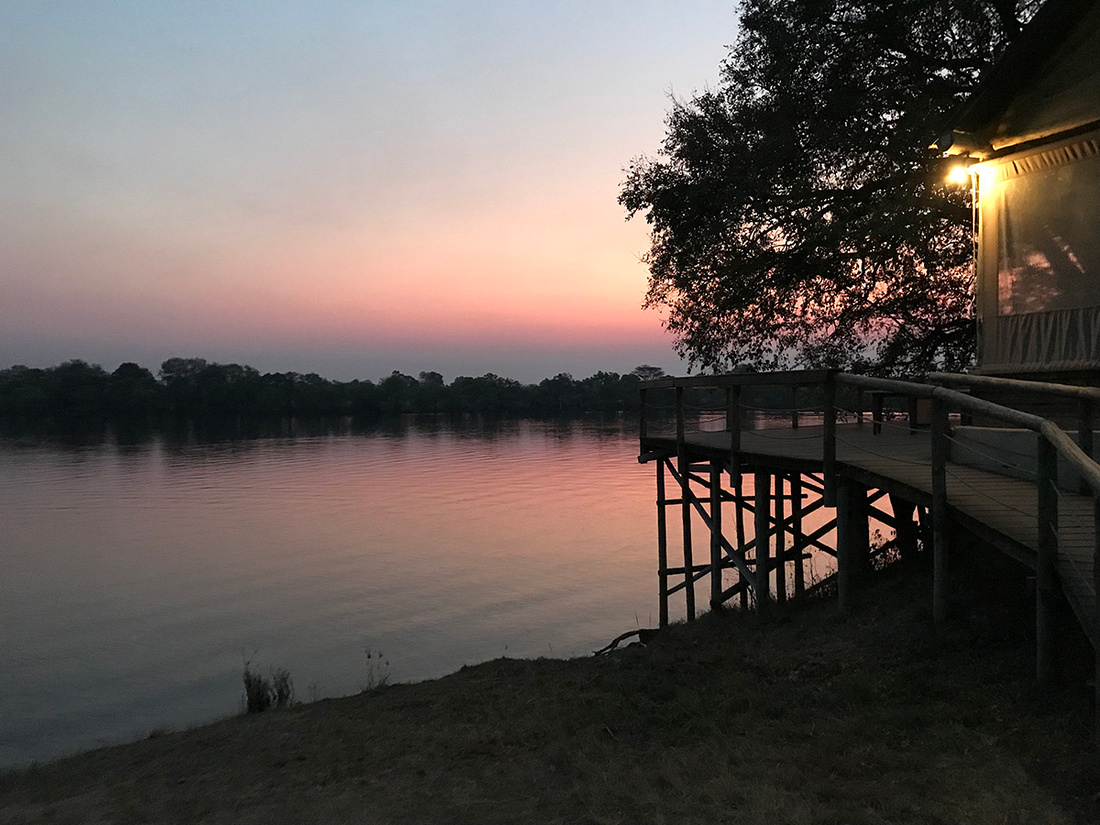

Lufupa River Camp

 Grey Crowned Crane
Grey Crowned Crane
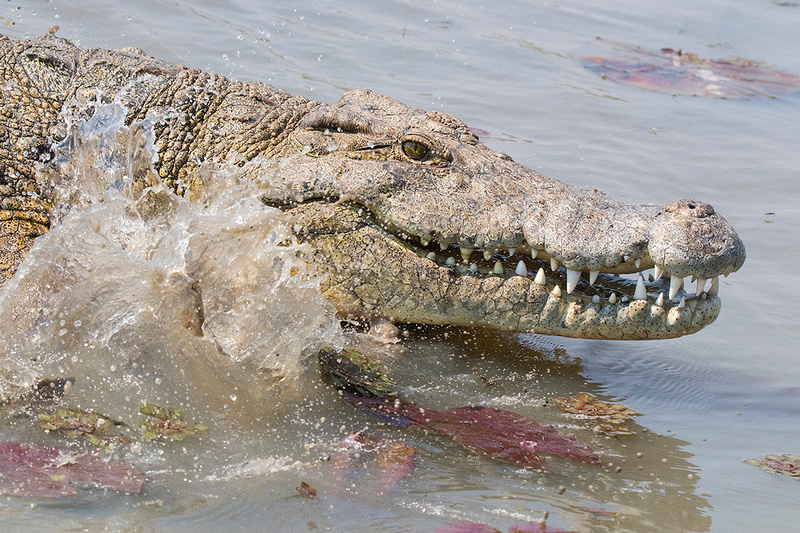
 Kafue River Crocodile
Kafue River Crocodile
We were visited by a large troop of vervet monkeys each day. They spent a good deal of time using out tent as a trampoline and peering through the screen at us while we showered. The females all seemed to have very young and dependent babies. All the babies appeared to be about the same age.
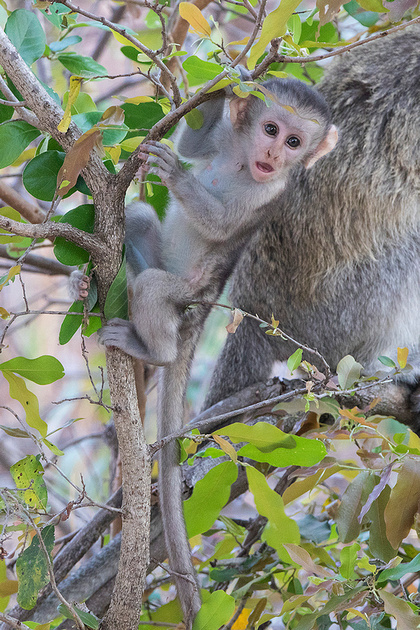

Young Vervet Monkey


Adult Vervet Monkey
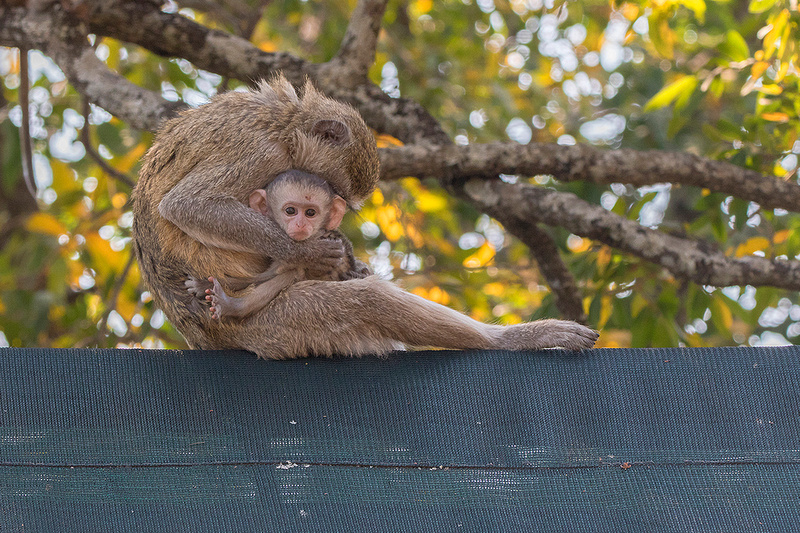
 Vervet Monkeys on our Tent
Vervet Monkeys on our Tent
We also had our first elephant in camp experience as two adult bulls visited almost daily. Brian, one of our guides, called them naughty elephants as they have a history of charging slower tourists. We were treated to a picnic lunch on the river several miles from camp. A nice surprise. On September 21st we had another unproductive game drive followed by a very smooth flight back to the Livingstone Airport.
We headed south out of Livingstone towards Botswana with a brief stop to view a small herd of white rhinos. Each rhino had an assigned ranger that guards him or her 24 hours a day and 7 days a week. I am glad we made this stop as it was the only opportunity to view rhino for those travelers who had not been on the South African pretrip and the only opportunity to photograph rhino with intact horns.
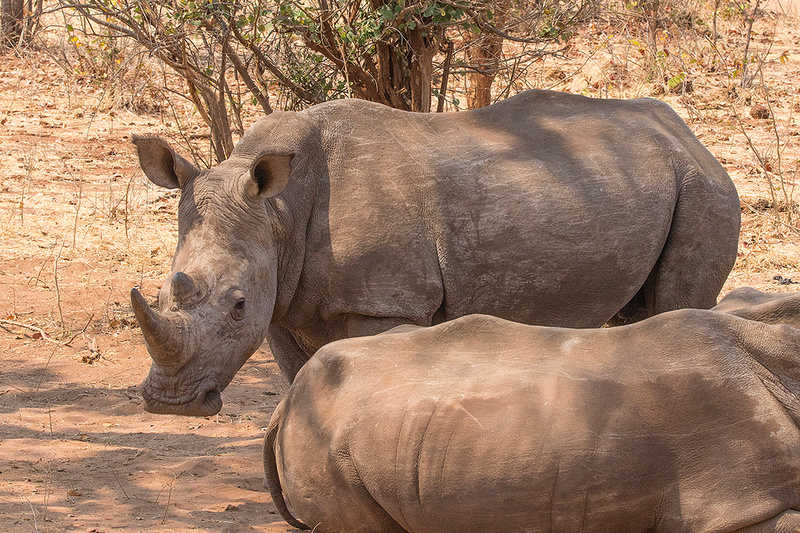
 White Rhino Bull
White Rhino Bull
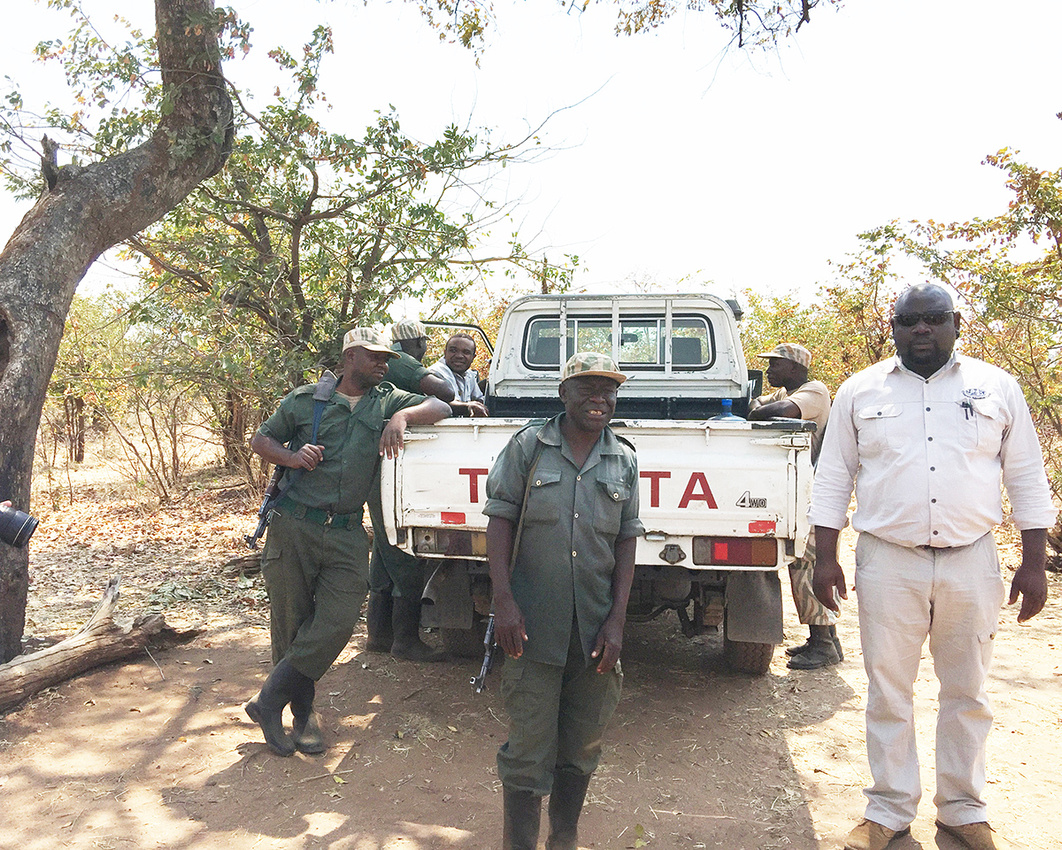
 White Rhino Wardens: Note the Automatic Weapons
White Rhino Wardens: Note the Automatic Weapons
We proceeded south and crossed the Chobe River via a large boat into Botswana. We drove through Chobe National Park on the way to Baobob Camp. Chobe National Park contains an estimated elephant population of over 50,000. This camp was situated on a steep hillside overlooking the broad Chobe River floodplain. Excellent views from the elevated dining area with thousands of animals visible across the floodplain.

 Chobe River Floodplain
Chobe River Floodplain
We checked into our tents. These had stone walls with a tent roof. After high tea, we set out on our first game drive onto the floodplain outside of the park. I was able to photograph a small herd of old male buffalo. The guide indicated that they could no longer keep up with the herd and banded together as protection from predators. Some very impressive heads in the herd. I was surprised to learn that big game hunting is no longer legal in Botswana. Lots of baboon, zebra, waterbuck, and bird life were present. The post game drive welcoming dinner prepared by Chef Oly was quite good as were his magic tricks.

 Bull Buffalo
Bull Buffalo
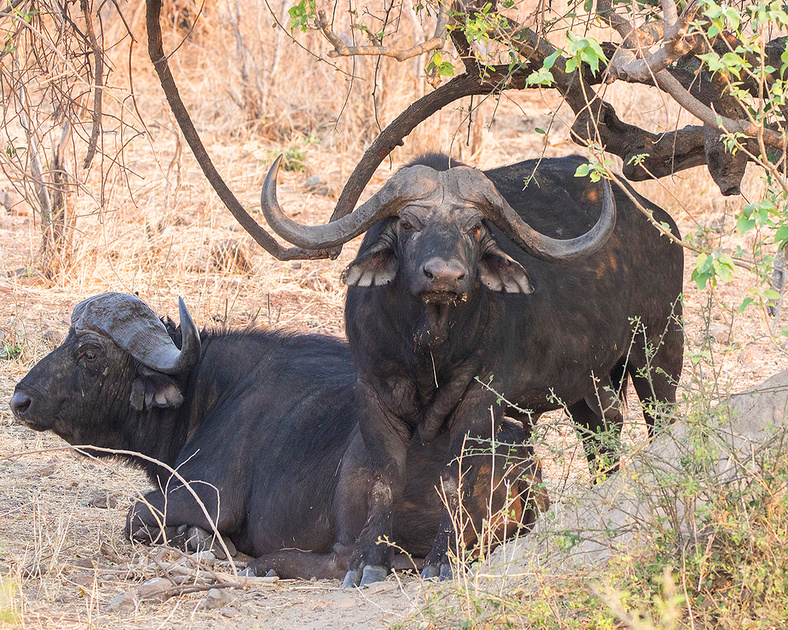
 Bull Buffalo
Bull Buffalo
Our morning game drive on September 22 along the floodplain in Chobe National Park encountered thousands of impala and zebra. We saw a large male sable antelope, a first for the trip. Our lodge was about a ten minute drive from the park entrance. We saw a lone spotted hyena crossing the road before sunrise. Difficult light for photography. We also saw an enormous crocodile sunning on the river bank. He was quite wary and slipped into the river while we were still hundreds of yards away. On our afternoon game drive we came across a small herd of elephant and lesser numbers of zebra, impala, baboon, and kudu than we observed on the morning game drive.

 Impala Rams Sparing
Impala Rams Sparing
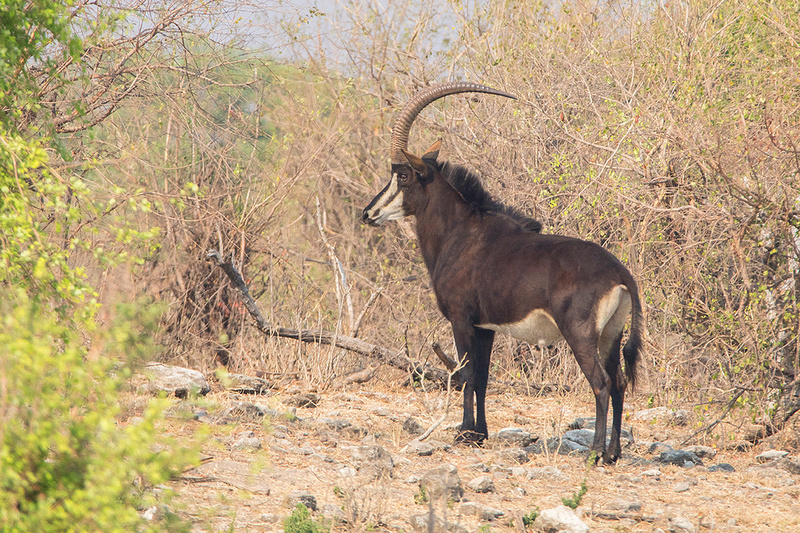
 Sable Antelope
Sable Antelope
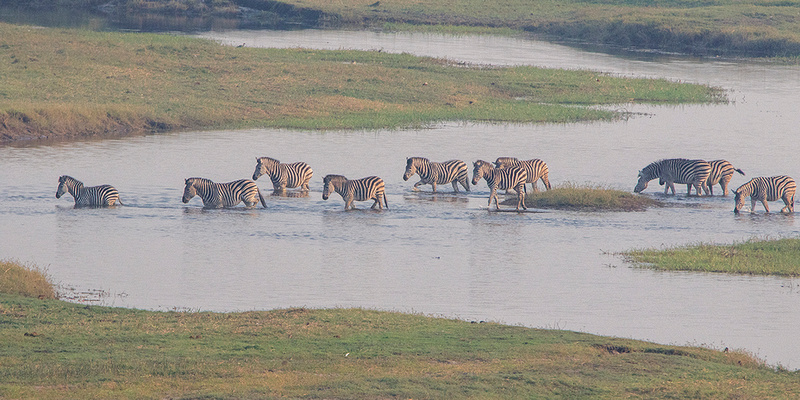
 Zebra Herd Crossing the Chobe River
Zebra Herd Crossing the Chobe River
The morning and evening game drives on September 23 did not yield any new mammal species. Towards sundown we photographed a giraffe as he worked his way through the brush and emerged onto the open floodplain to drink in nice warm evening light. We also saw our first southern carmine bee eaters. A beautiful migratory species that has just arrived back in Botswana.
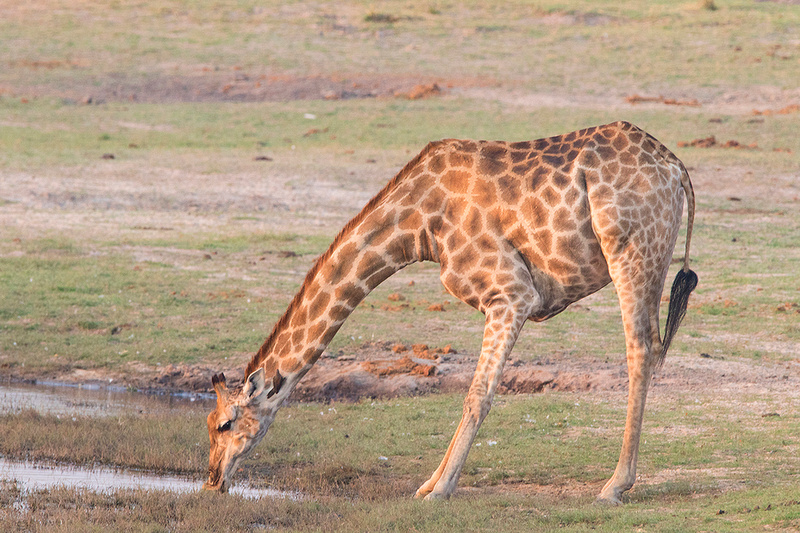
 Adult Giraffe
Adult Giraffe


Giraffe (Note the Piles of Elephant Dung)
We further explored the park on an all day game drive on September 24. We had great looks at two adult male lions and then raced to a reported leopard sighting.
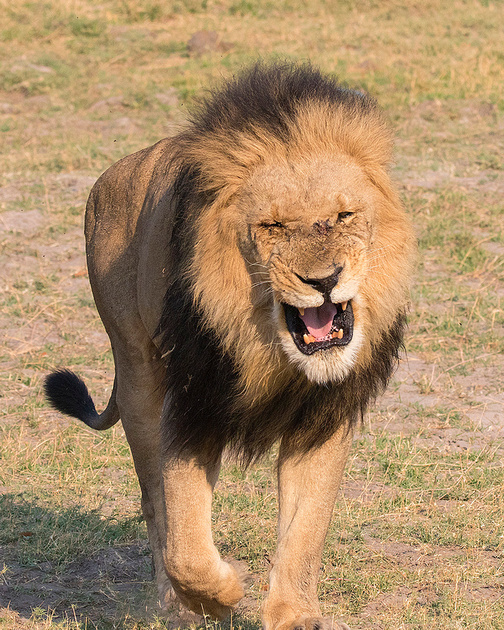

Male Lion


Male Lion
Both sightings were excellent for photography. It turned out that there were three leopards, possibly an adult female and two mostly grown young. They had stashed an impala in a tree next to the road and we were able to observe and view them at extremely close range. This was the only time on the trip where there was a bit of a traffic issue as over a dozen vehicles were crowded together hoping for a clear view.
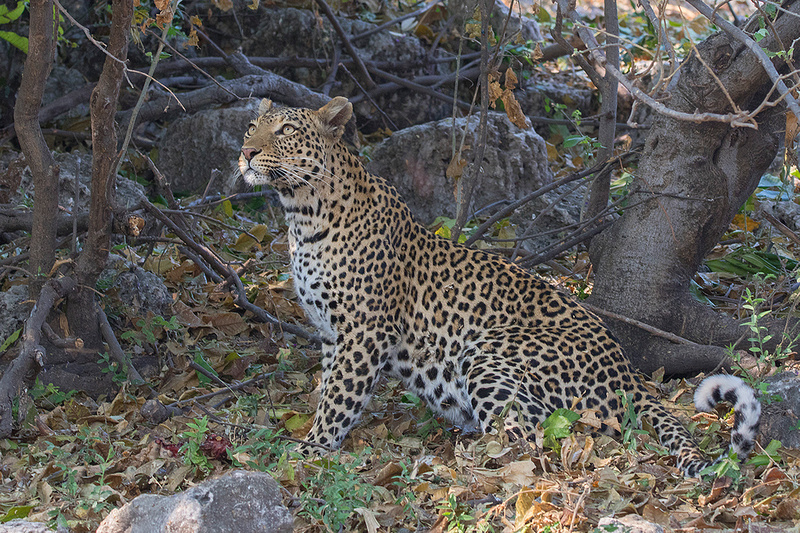
 Leopard
Leopard
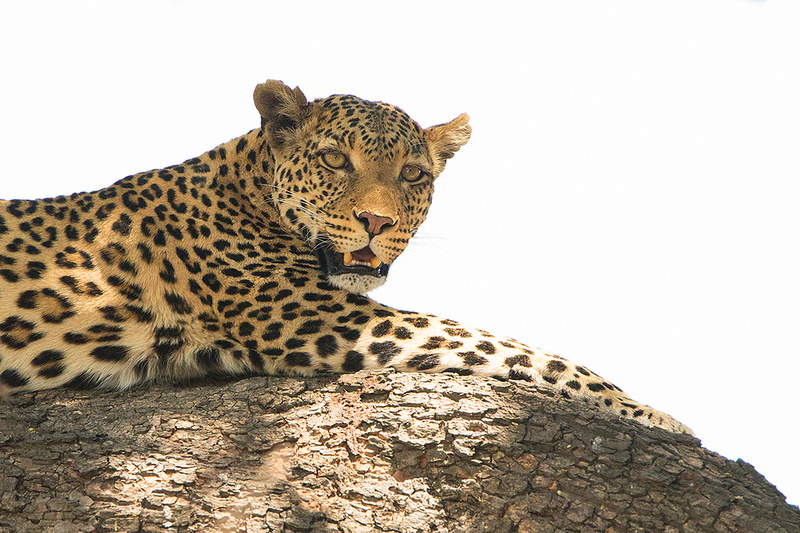
 Leopard
Leopard
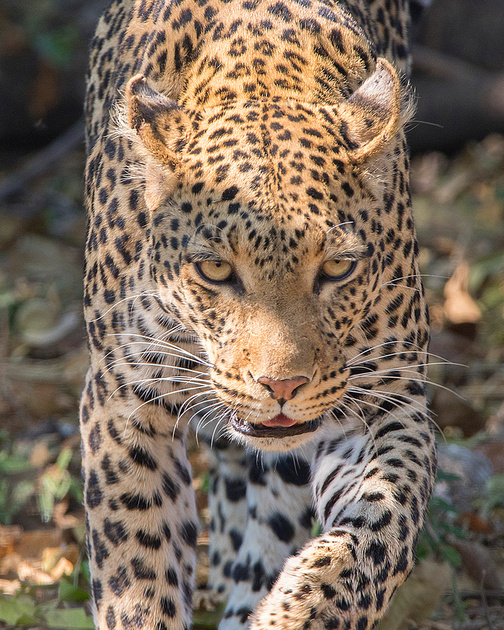

Leopard
We had been cautioned that hippos can be extremely aggressive if you get between them and the safety of water. We found a large male hippo alongside the road and he charged at very close range. Lots of dust, hissing, drooling and open mouth threat gestures. Pretty impressive. Crocodiles kill more humans in Africa than any other predator, but hippos lead the list for herbivores. After lunch we encountered numerous small herds of elephant along the open floodplain which offered some excellent views of their behavior.


Agressive Hippo
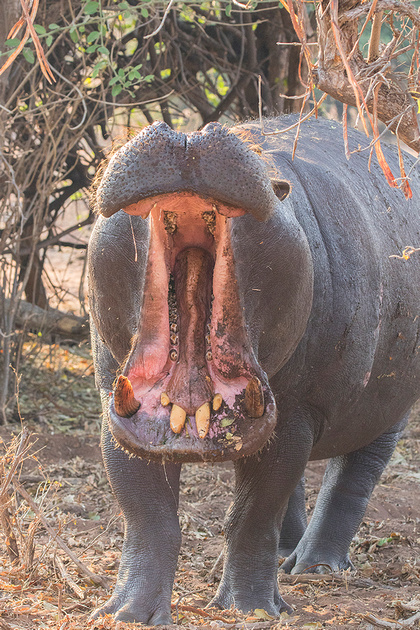

Hippo Threat Display
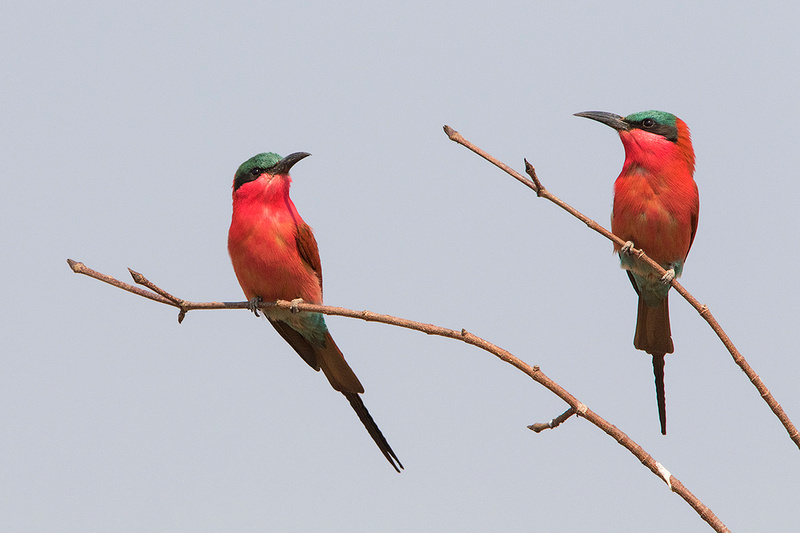
 Southern Carmen Bee Eaters
Southern Carmen Bee Eaters
We departed Baobob Camp before daylight on September 25th. I had packed away my camera equipment for the 50 minute drive, so of course we saw two spotted hyena, two adult male lions, and six wild dogs along the road as we drove through the park on our way to Kasane Airport. AGHHH! I did snag a few very grainy wild dog photos out of the bus window using my I-phone.
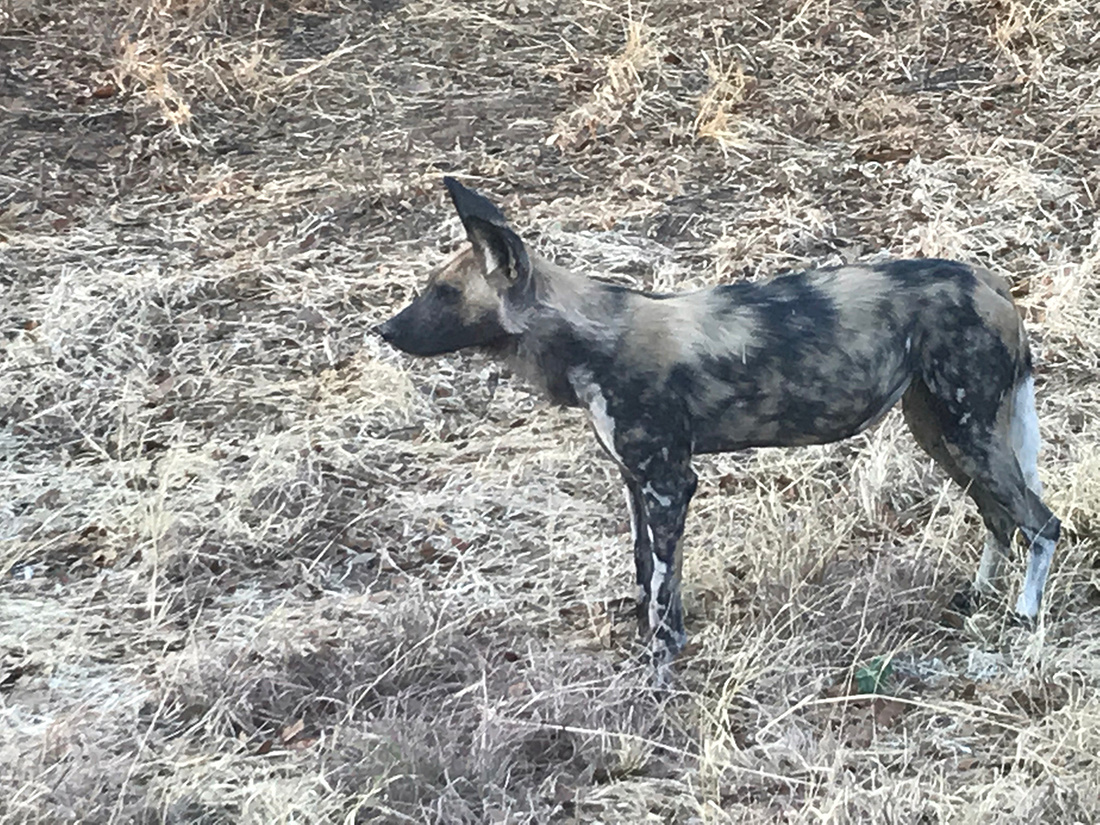
 African Wild Dog
African Wild Dog
We flew from Kasane Airport to Santawani Camp on a tributary to the Okavango Delta adjacent to Moremi National Park. This camp had access to a private concession which allowed off-road travel. This allows animals to be located by following their tracks cross country. We did a brief late morning game drive and settled into camp. Temperatures here were quite warm with mid day temperatures over 100 degrees. On our first afternoon game drive we tracked a leopard to its kill. The cat had stashed an impala in a tree and gave us some nice photo opportunities. We also tracked and located a pride of six lions. In addition, we encountered kudu, impala, warthog, elephants and baboons. A very good start for Santawani Camp.


Leopard
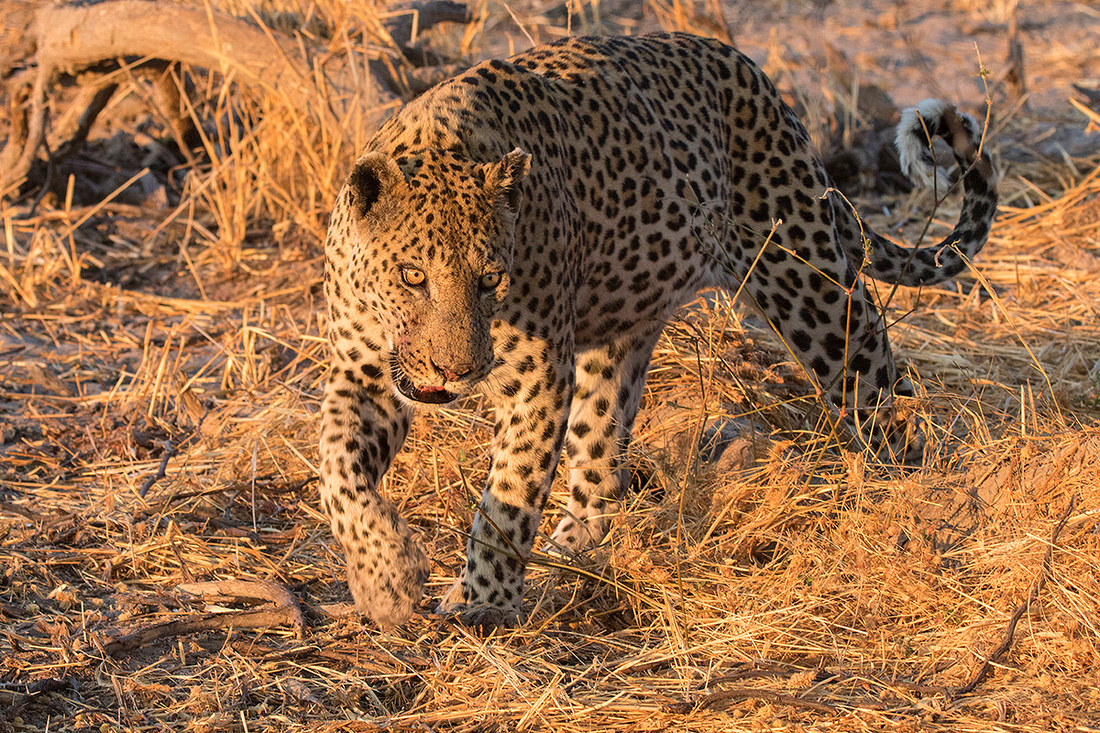
 Leopard
Leopard
Santawani Camp had a smallish manmade waterhole about 150 yards from camp. This water source was used by an almost unending stream of wildlife all day long.
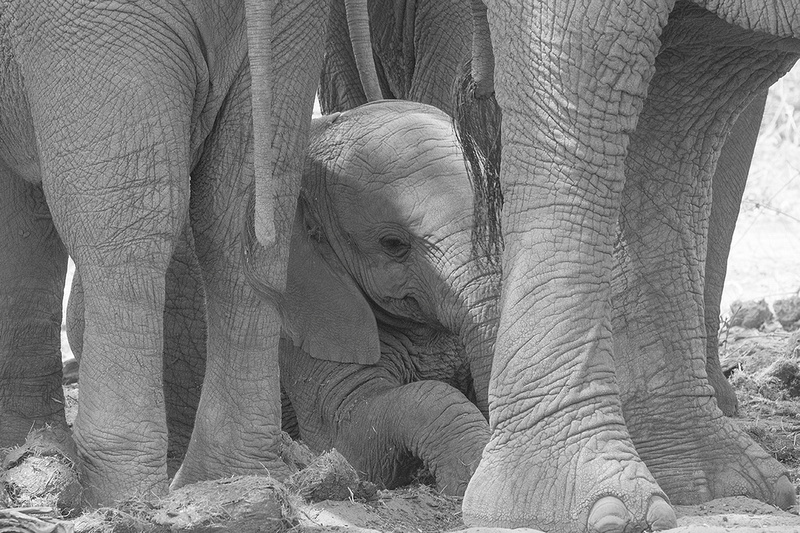
 Elephants at Camp Waterhole
Elephants at Camp Waterhole
Shortly after daylight on September 26 we were treated to a sighting of a honey badger digging away near the waterhole. September 26th was one of our most productive game drive days with hundreds of elephants observed along the river.

 Elephants
Elephants
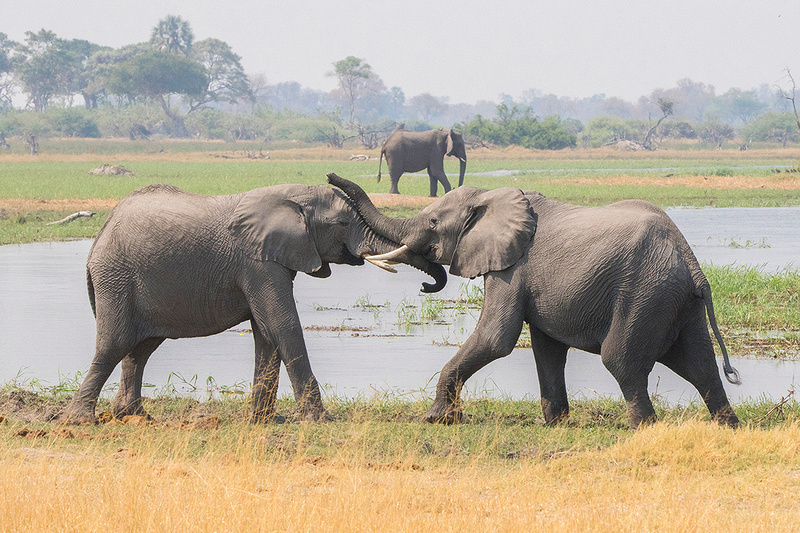
 Grudge Match
Grudge Match
In addition, we photographed kudu, warthog, giraffe, buffalo, red lechwe, jackal, steenbuck, slender mongoose, impala, wildebeest, crocodile, hippo, baboon, vervet monkey, lion, leopard, yellow mongoose, and dwarf mongoose. The area near the river was very lush with dense stands of tall grasses and sedges. Red lechwe are an antelope common in the delta and strongly associated with the wet areas near the river.
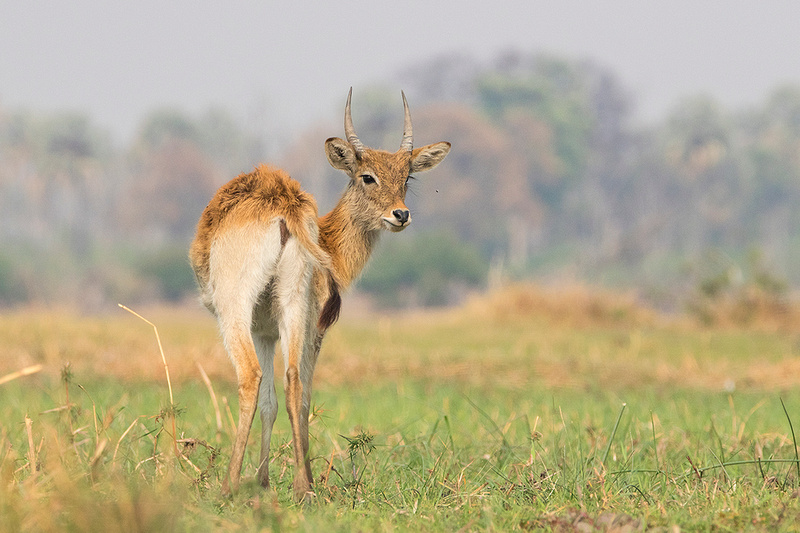
 Red Lechwe
Red Lechwe
On September 27th we encountered many of the same species as on the previous day. However, we also observed and photographed ostrich, zebra and a pride of eight lions. We had the excitement of elephants in camp and at the waterhole all day, which made it difficult to walk through camp. We made several attempts to skirt around all the elephants and get to afternoon high tea.
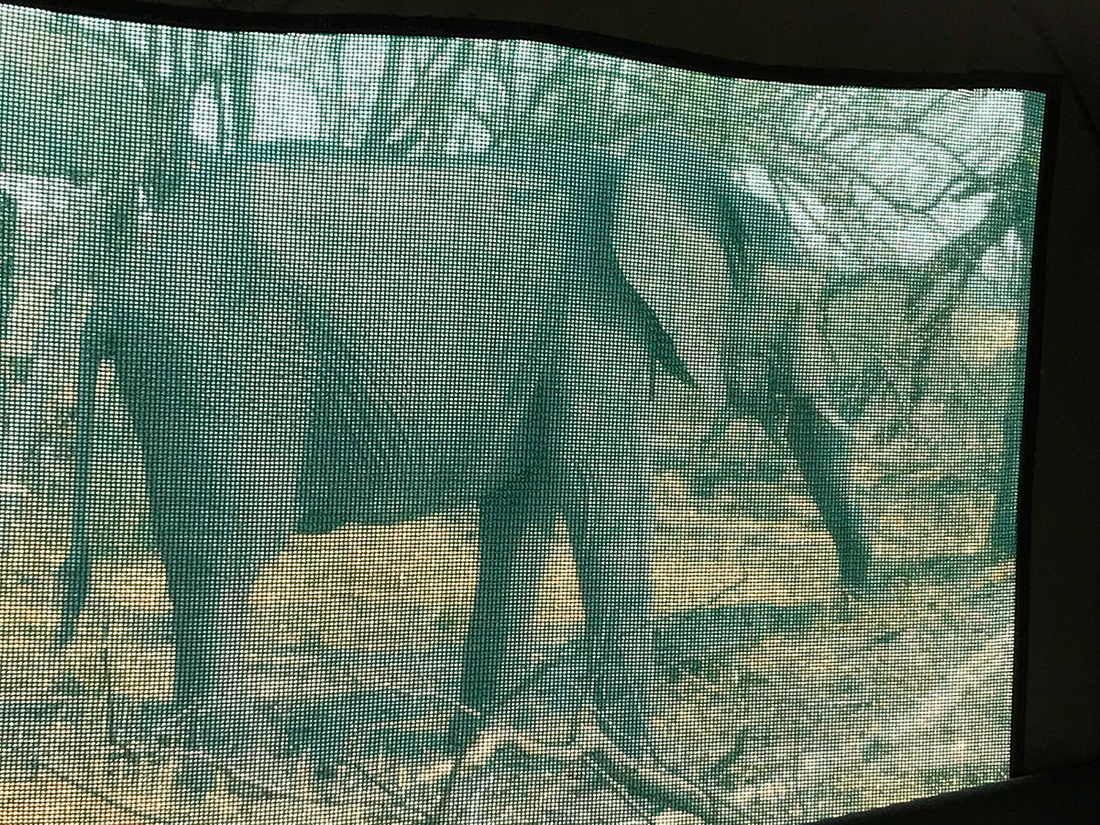
 Elephant Through the Screen Window of our Tent
Elephant Through the Screen Window of our Tent

 Adult Male Ostrich
Adult Male Ostrich
September 28th was our last morning game drive as we worked the area near camp and the airstrip. We had some nice looks at black-backed jackals, elephants, impala, warthog, and waterbuck. We also tracked a lioness to her napping location. She was out in the open and allowed a close approach in nice morning light. At some point she tired of us disturbing her nap and gathered her legs under her and starting lashing her tail. She charged, covering half the distance to the truck in her first bound. Fortunately, she decided not to continue her charge and walked away into the brush. Way to close. The guide commented that he had never seen a lion react that way before.
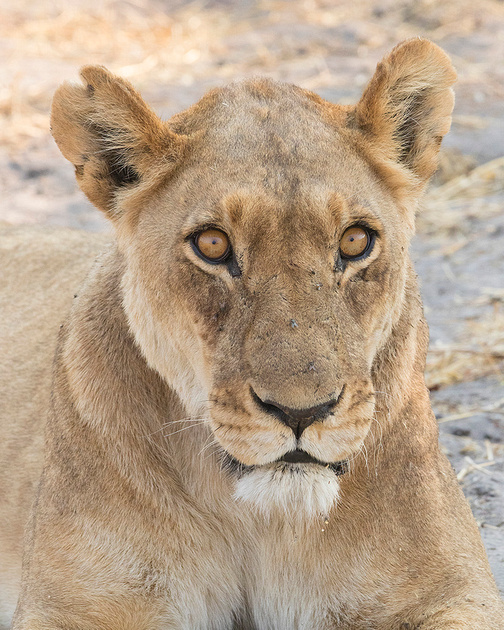

Sleepy Lioness
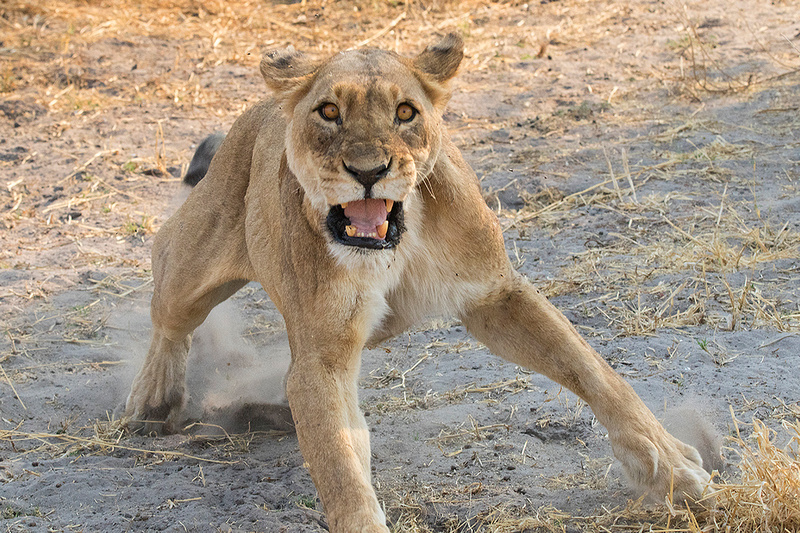

Charging Lioness at 150mm


Warthog
We flew back to Kasane Airport on September 28th and transferred by bus to Victoria Falls, Zimbabwe. We stayed the next two nights at Shearwater Explorers Village. The air conditioning was most welcome. We visited Victoria Falls that afternoon. Victoria Falls is considered the largest curtain of water in the world and one of the seven wonders of the world. Peak flow exceeds 1.4 billion gallons of water per minute. September 28th turned out to be World Tourism Day and Victoria Falls Park offered free admission. It was extremely crowded. Even late in the dry season the falls are still impressive with a maximum drop of over 110 meters. During the wet season the falls are nearly a mile wide. Photography may be easier during the dry season as the mist from the falls at full flow is reported to be quite dense.
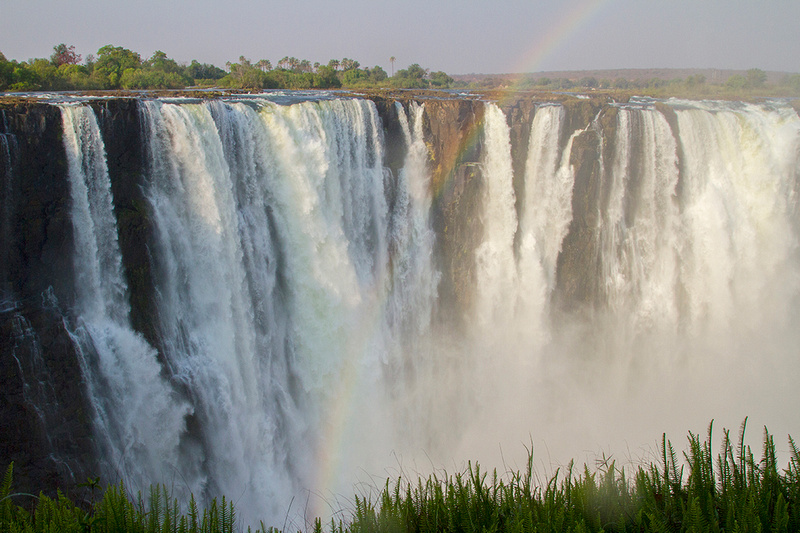
 Victoria Falls
Victoria Falls
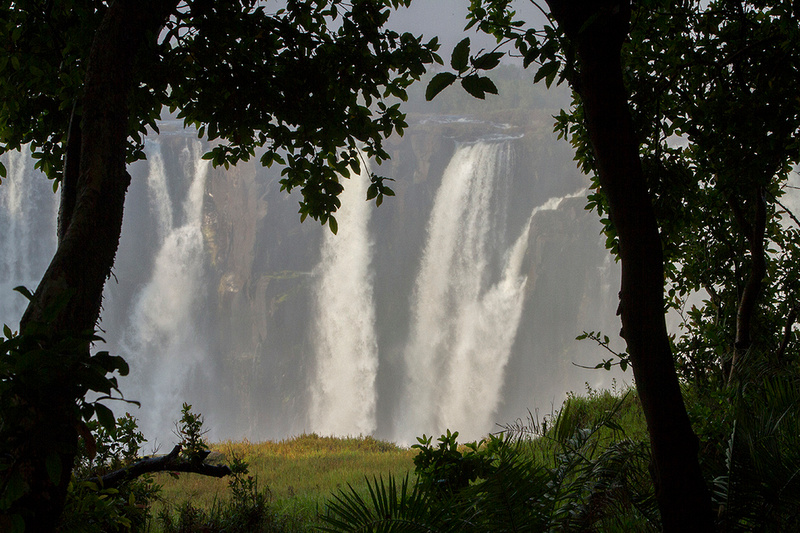
 Victoria Falls
Victoria Falls
On September 29th we opted for a private morning birding tour on the Zambezi River. We added a few additional species to the life bird list. Wildlife sightings were relatively sparse. We did find a elephant laying down asleep on the riverbank and many hippos.

 African Jacana
African Jacana
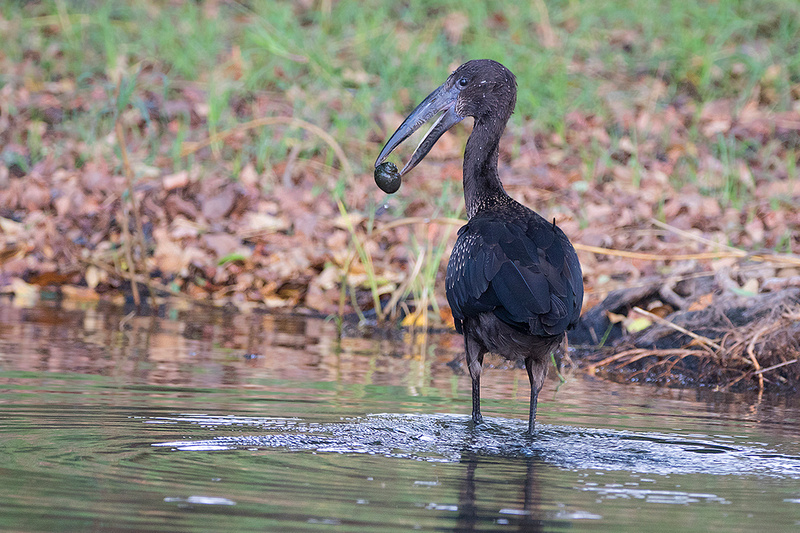
 African Openbill Stork
African Openbill Stork
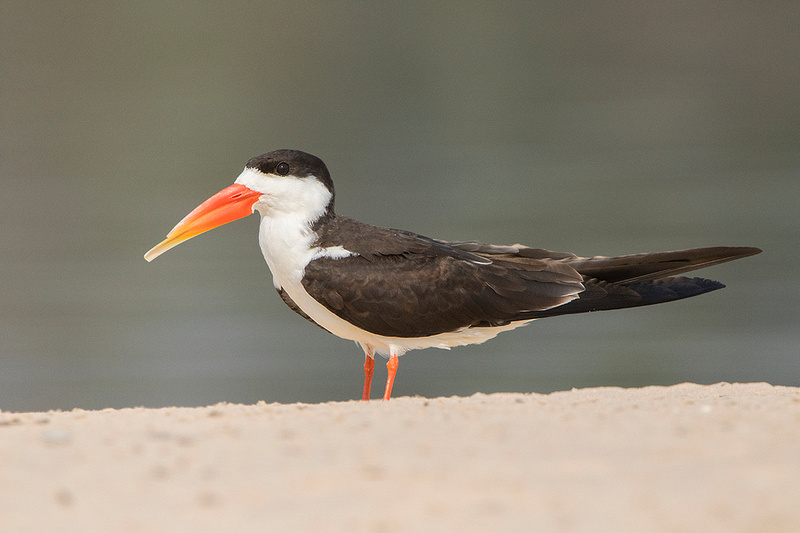
 African Skimmer
African Skimmer
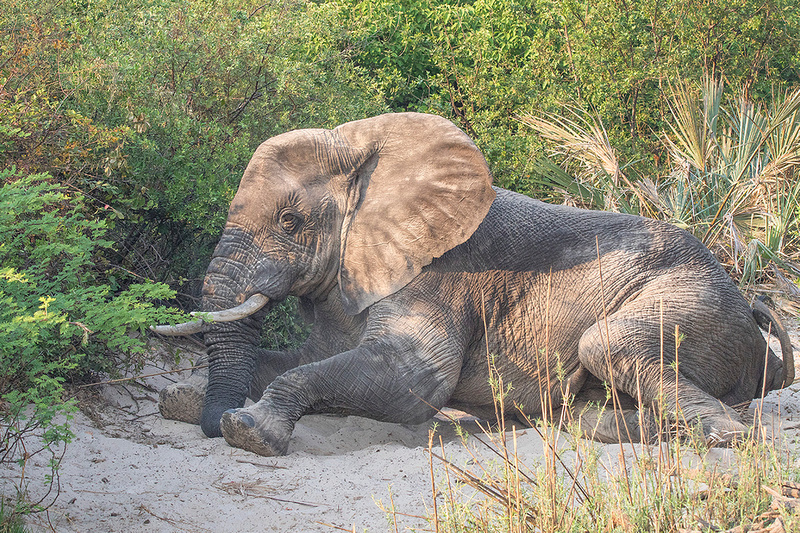
 Sleepy Elephant
Sleepy Elephant
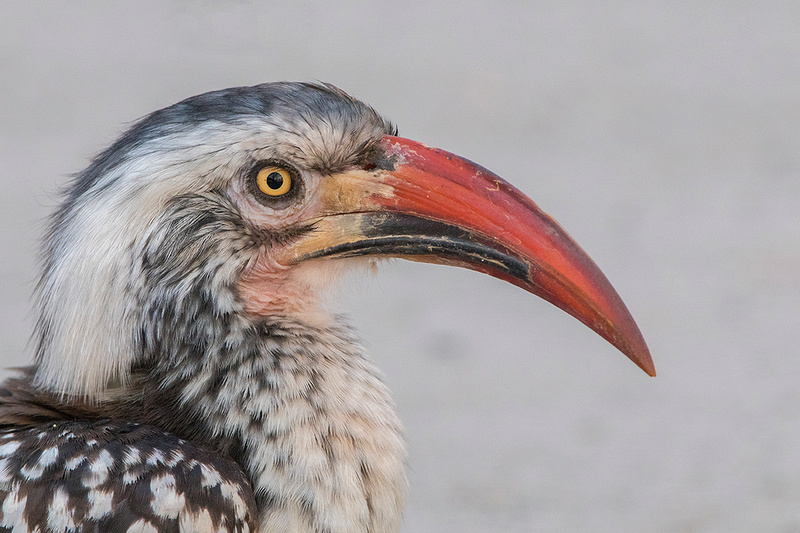

Southern Red-Billed Hornbill
We did some shopping at the local open air market and purchased some Shona stone statuary and wood carvings. Bartering and trade were expected and welcomed. American t-shirts, hats and shoes were readily accepted as currency. Our farewell sunset dinner was served onboard a large boat while cruising the Zambezi River. The next morning we began our 40 hours of travel to return home.
The OAT Ultimate Africa trip greatly exceeded my expectations. I would also highly recommend the pretrip to the game reserve in South Africa.
I purchased two apps for my phone before the trip which proved useful. These apps were "Stuart's Complete Guide to the Mammals of Africa" and "Sasol E-Birds of Southern Africa". The hardcover field guides would be preferable, but the 44 pound weight limit mitigated against packing several large field guides. I ended up with 140 life birds from the trip and have at least two additional bird photos which I have yet to identify.
I came home with a little over 16,000 photos. Almost all of the wildlife photos included here were captured using a Canon 7D2 crop-frame camera and a Sigma 150-600mm telephoto zoom lens. The zoom lens proved entirely adequate. A camera with better low light capabilities would have been useful under a few situations.


The End
Yellowstone - May 2018
We decided to visit Yellowstone National Park fairly early in May to avoid the crowds of summer. We arrived the afternoon after the official park opening. We also felt that we were more likely to find wildlife, especially grizzly bears, close to the roads before traffic pushed them further away. On this trip we were accompanied by my parents (Ted and Mildred Bogener). We stayed in Gardiner Montana and enjoyed near perfect weather. All the park roads had opened by the time we left except the road over Mount Washburn. However, there was a substantial amount of snow along the roads at the higher elevations.
We entered the park in early afternoon from the west gate at West Yellowstone. On the drive between the entrance and Gardiner we saw and photographed four grizzly bears including a female with two cubs and a boar at a separate location. Both groups of bears had attracted good sized crowds but offered at least decent photo opportunities Pretty amazing as we had seen few grizzlies on previous trips to Yellowstone and always at great distances. Definitely, a highlight of the trip.

 Female Grizzly
Female Grizzly
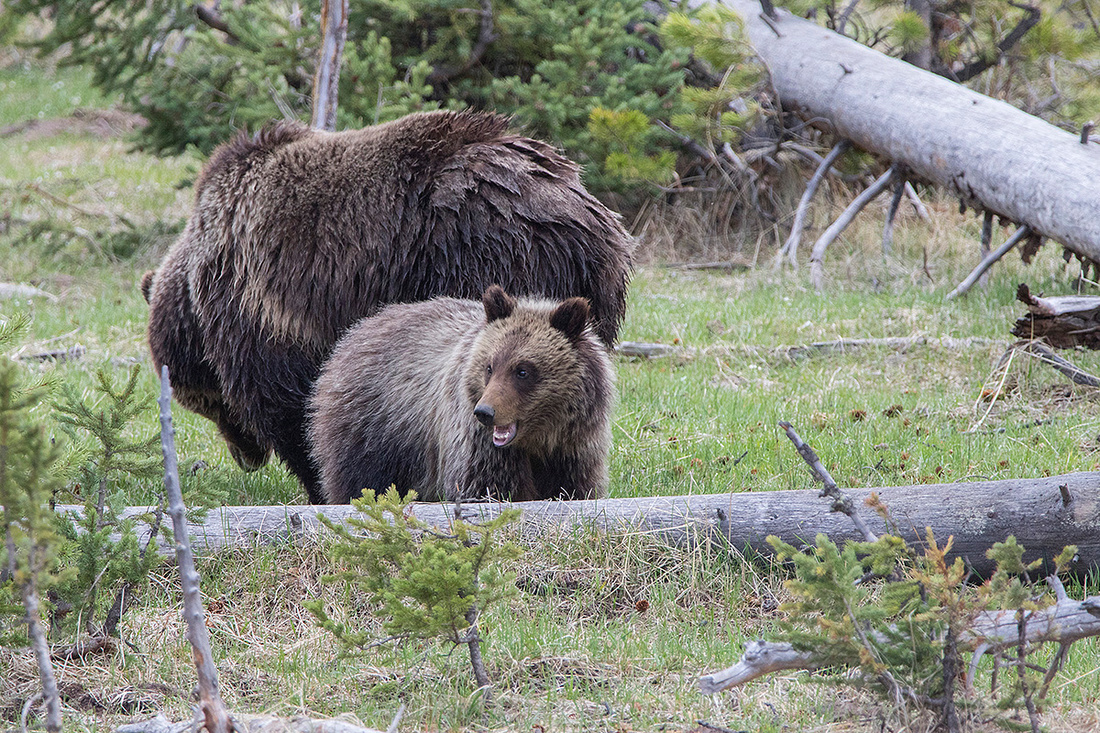
 Female Grizzly with Cub
Female Grizzly with Cub

 Male Grizzly
Male Grizzly

 Male Grizzly
Male Grizzly
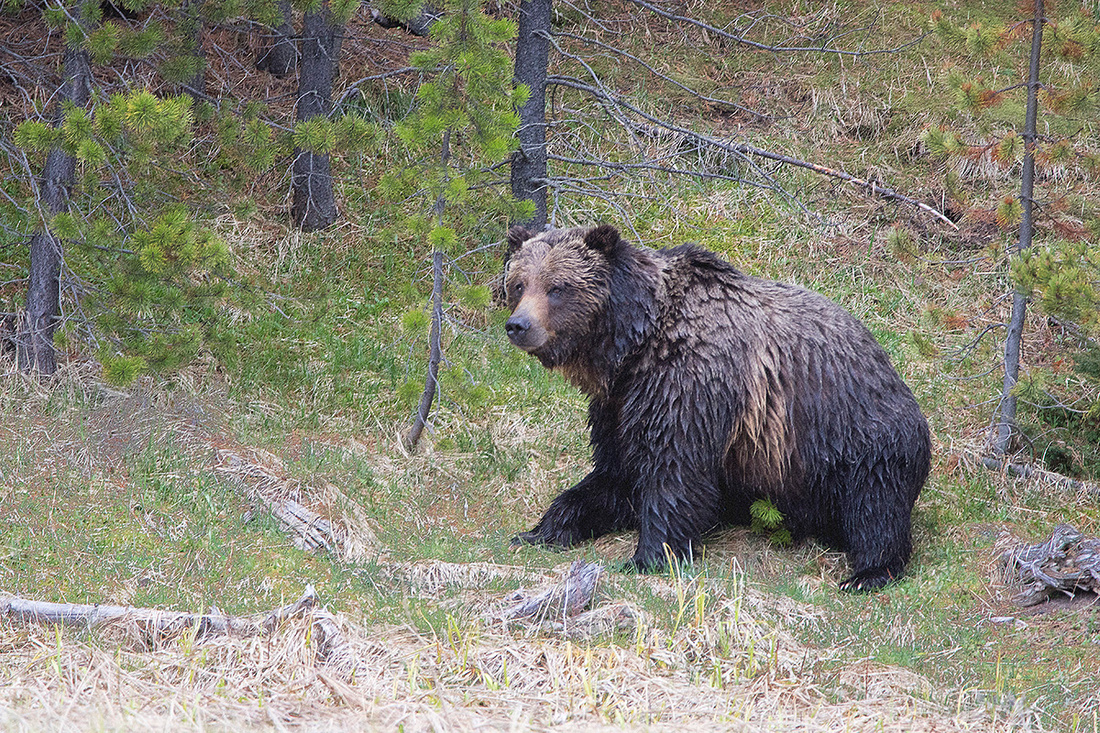
 Male Grizzly
Male Grizzly
The next day we decided to check out the road between Gardnier and Cook City. We ran into a female grizzly with a yearling cub grazing very near the road. We managed to get a few images before the rangers moved everyone along.
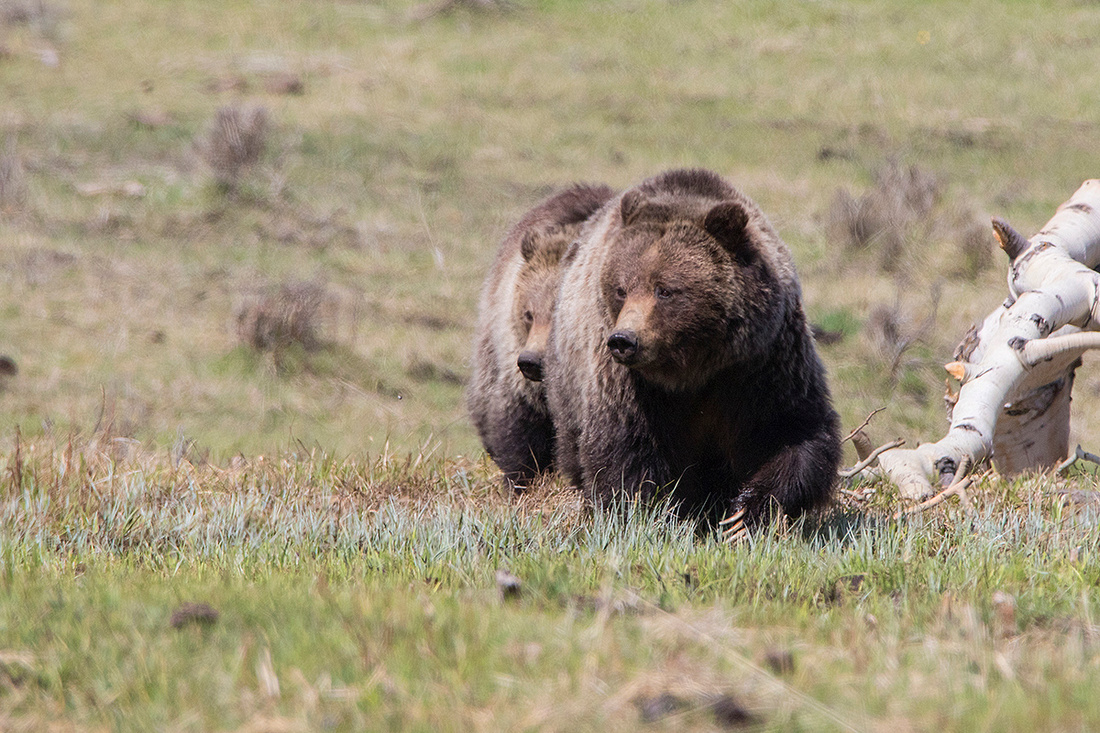
 Female Grizzly with Juvenile
Female Grizzly with Juvenile
We observed a few pronghorns near Slough Creek. None were exceptional bucks, but I did get some good poses along ridge tops with a clean background. A very good day.

 Pronghorn Buck
Pronghorn Buck
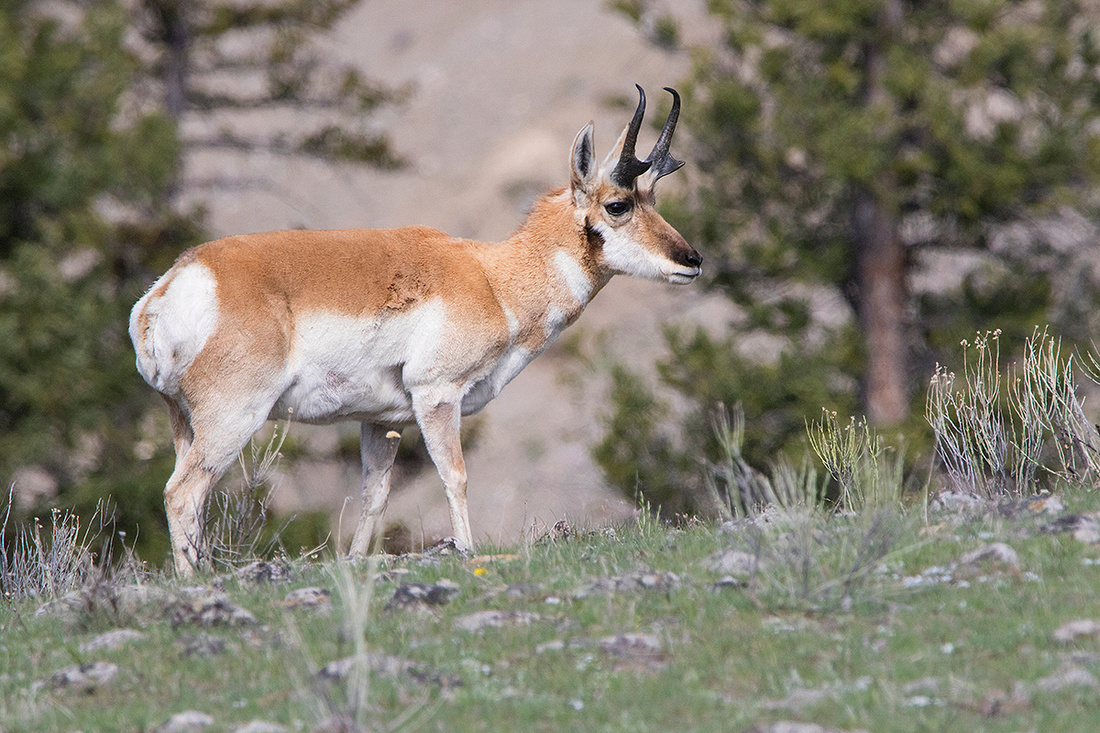
 Another Young Pronghorn Buck
Another Young Pronghorn Buck
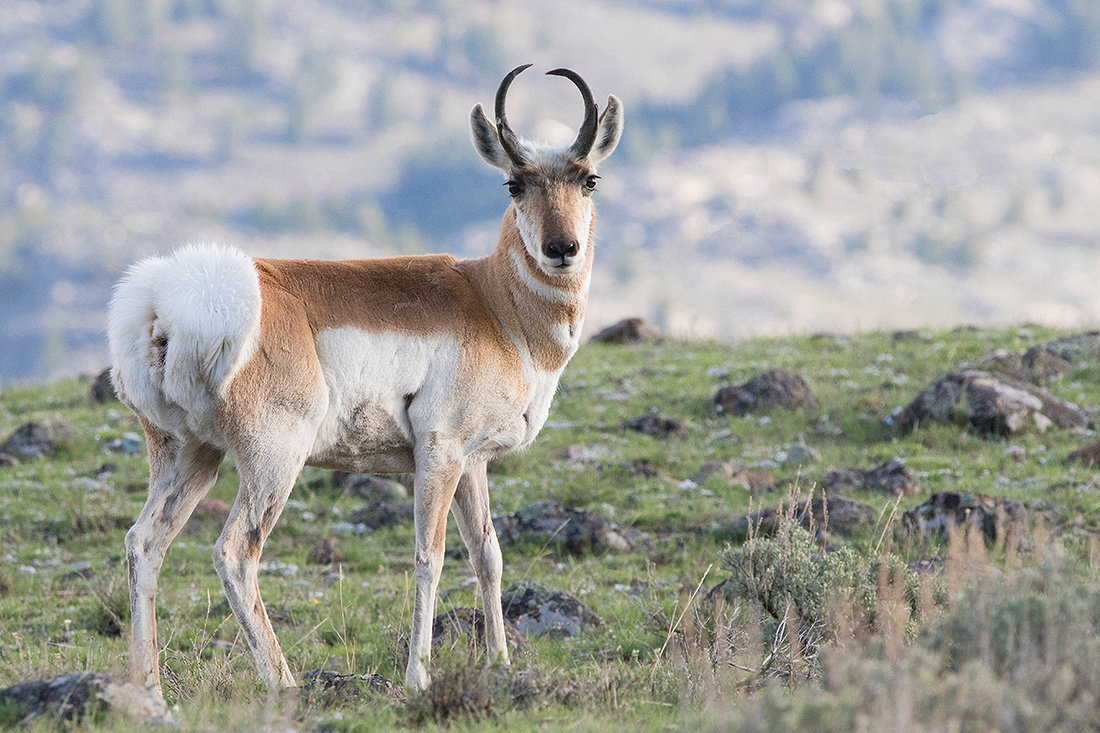
 Young Pronghorn Buck
Young Pronghorn Buck
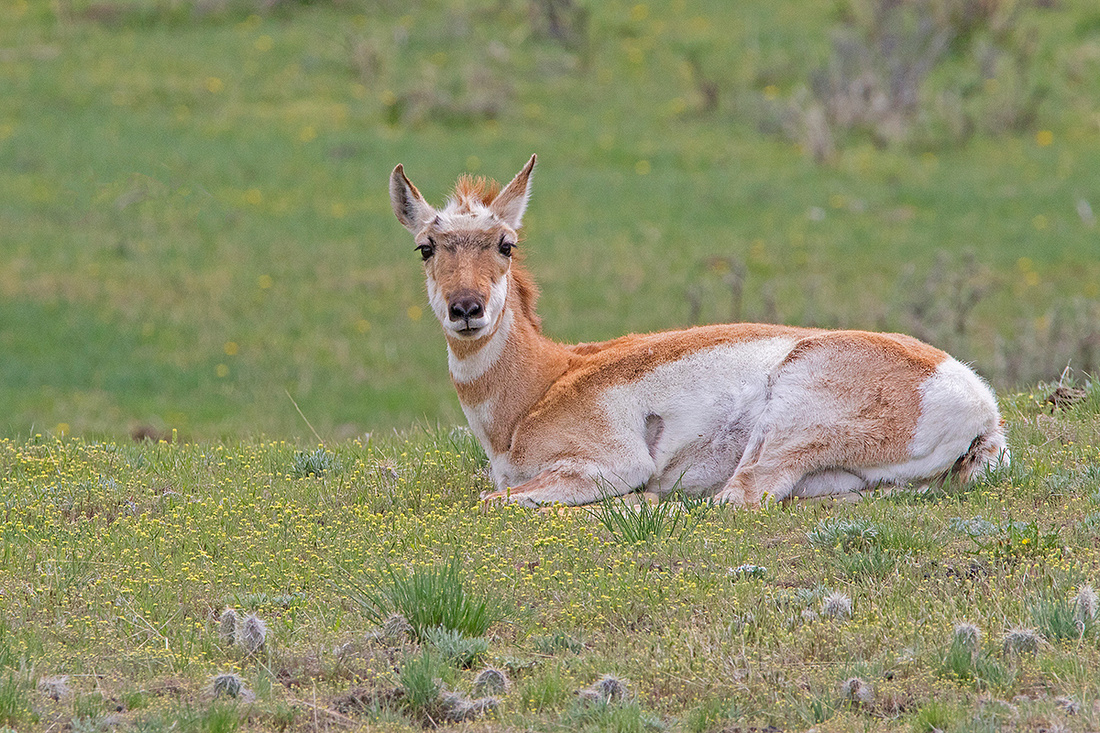
 Pronghorn Doe in Wildflowers
Pronghorn Doe in Wildflowers
The next day we explored Canyon, the Lamar Valley and Silven Pass areas. Lots of snow. We saw relatively little wildlife. We did find a porcupine feeding next to the road near the east entrance.
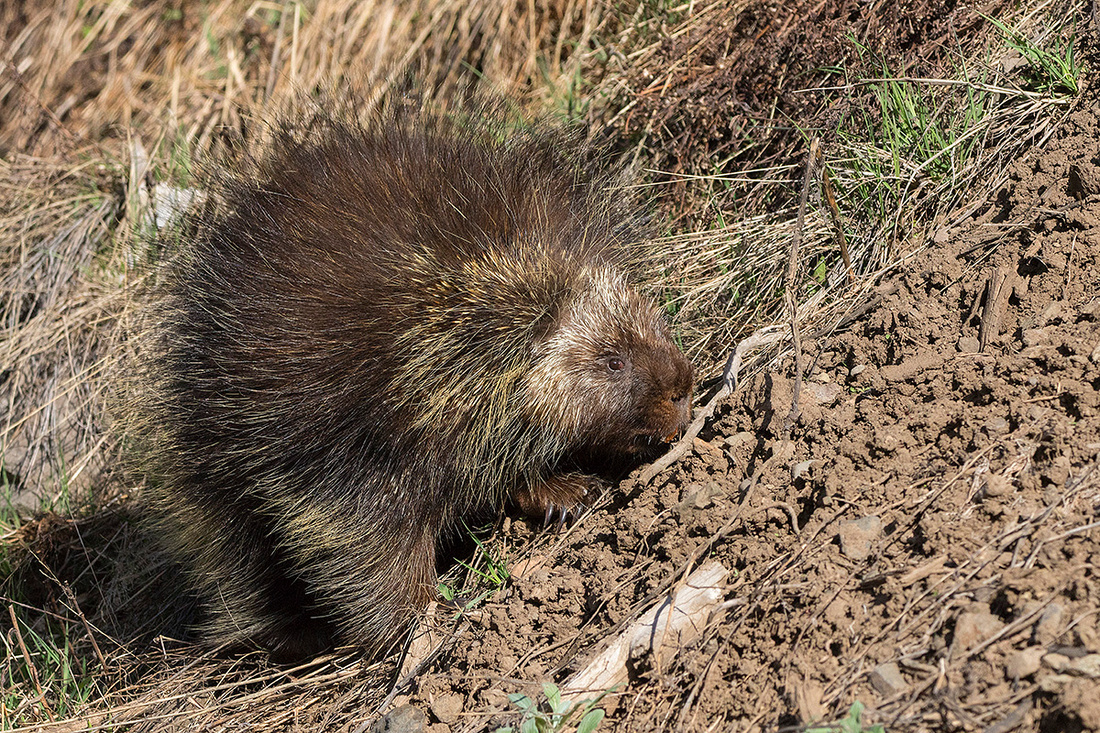
 Porcupine
Porcupine
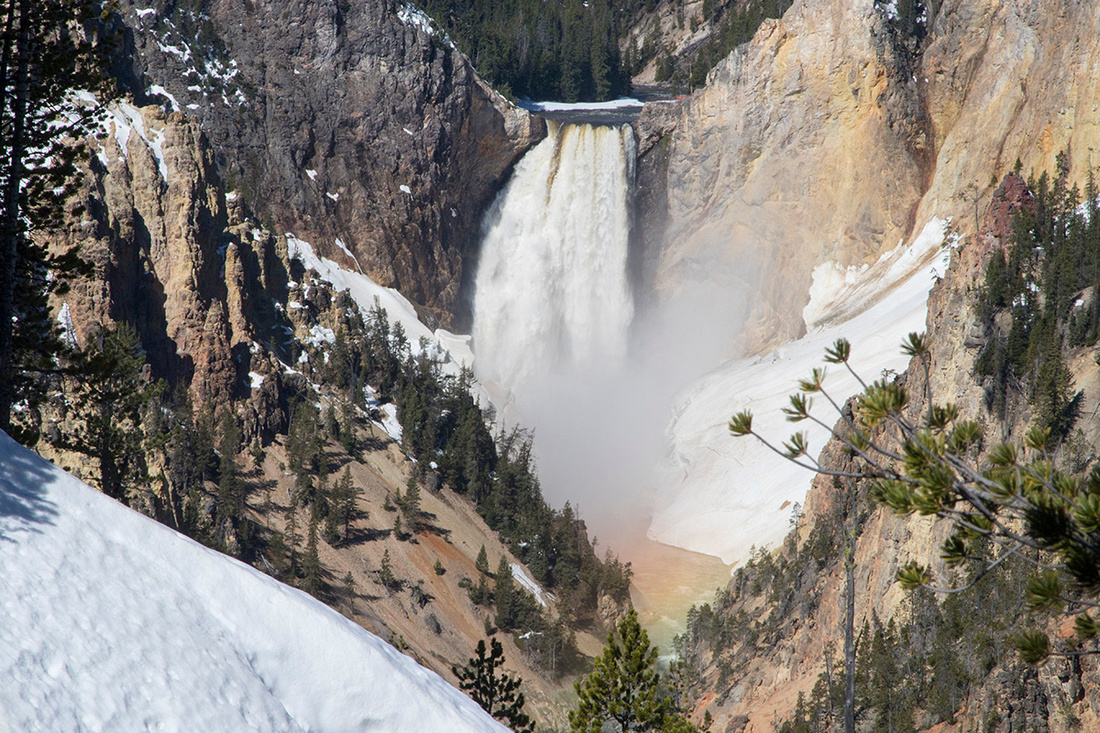
 Yellowstone Falls from Artists Point
Yellowstone Falls from Artists Point
The next day we again headed towards Lamar Valley. Lots of bison (over 700 by actual count). We saw 4 wolves, three near Buffalo Ranch in Lamar Valley and another nearer Slough Creek. Lots of howling, but no hunting behavior from the group in Lamar Valley. These wolves were some distance off the road, so I really got no decent images. However, the Slough Creek wolf spooked a large herd of bison with many calves which crossed the road on the run in front of us for at least 15 minutes. I finally got a few bison action shots in good light. A little later the wolf made a brief, but distant appearance. He was wearing a large and unattractive radio collar. I did manage a few images where the collar was not evident.

 Bison on the Run
Bison on the Run
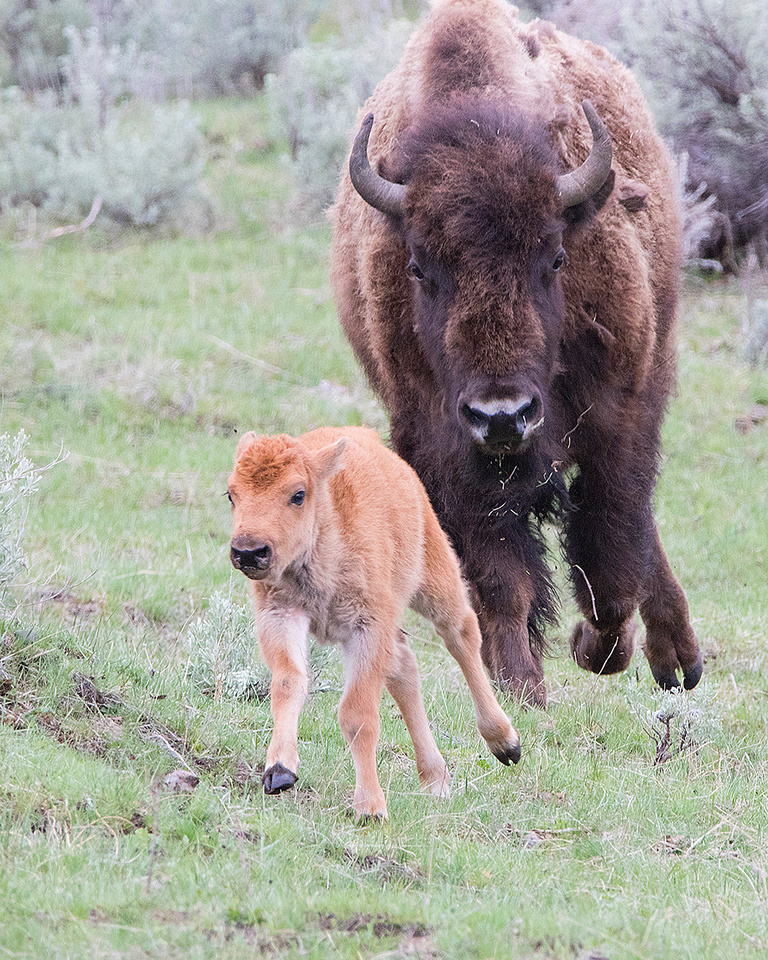

Bison Cow and Calf
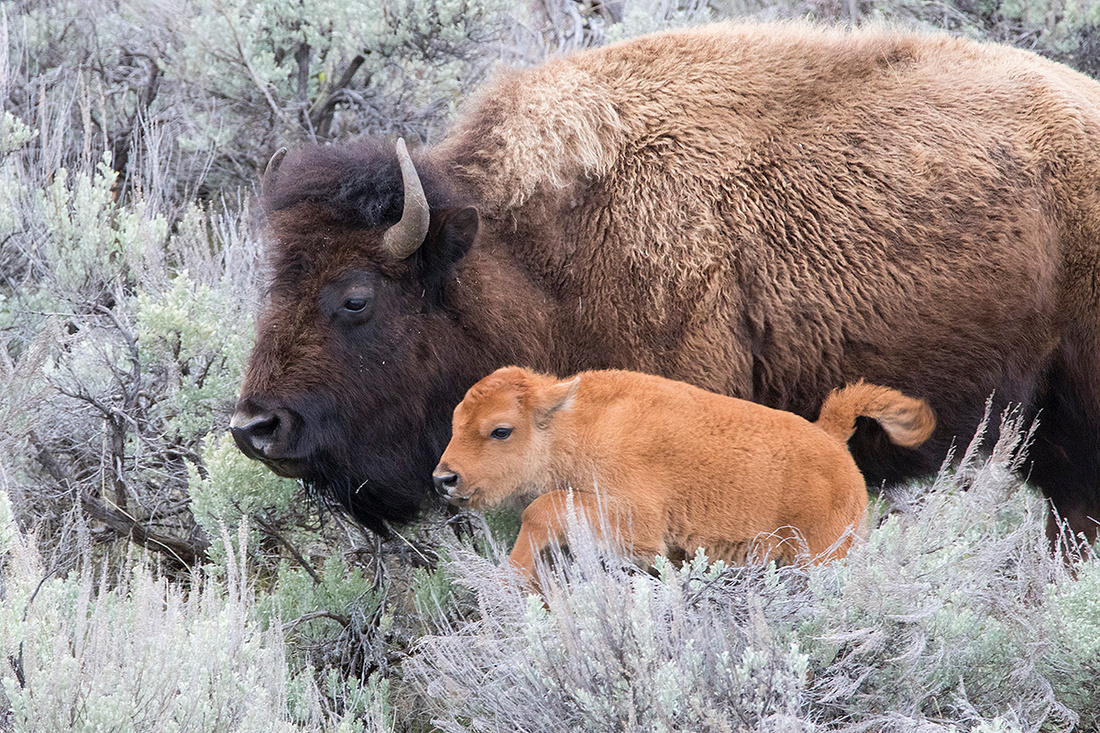
 Bison in Tall Sage
Bison in Tall Sage
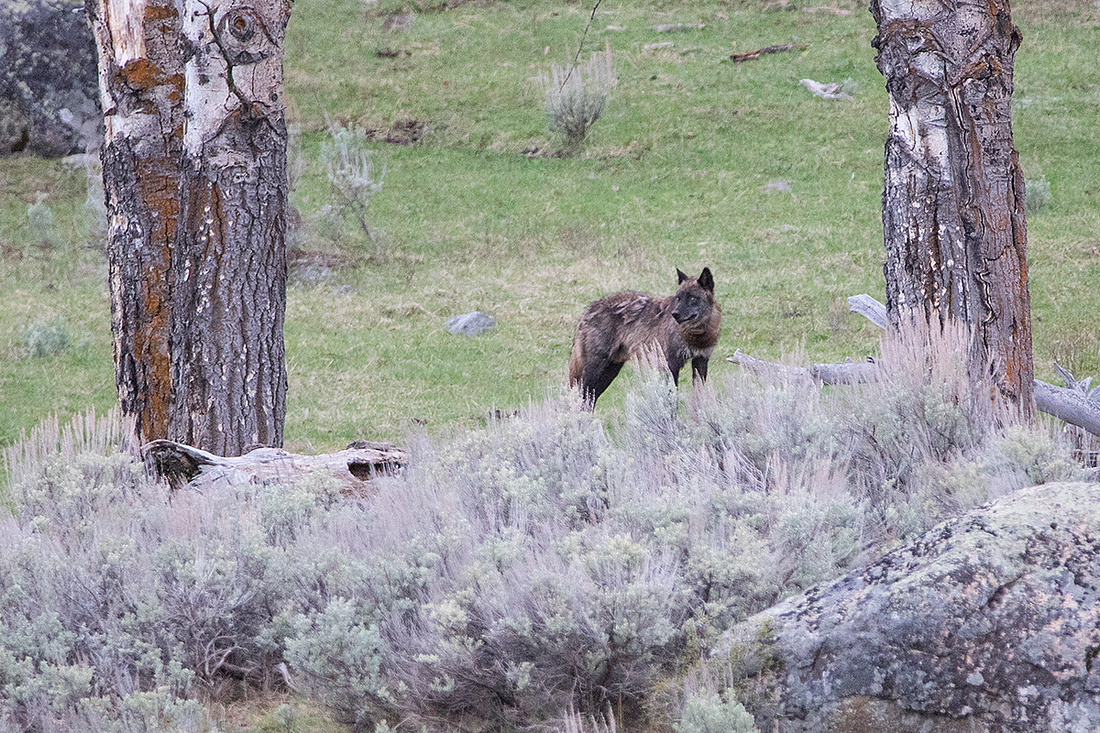
 Wolf
Wolf
The following day we explored the Geyser Basins and Old Faithful area. Limited wildlife and lots and lots of tourists. I took a few scenics, but most were unimpressive.
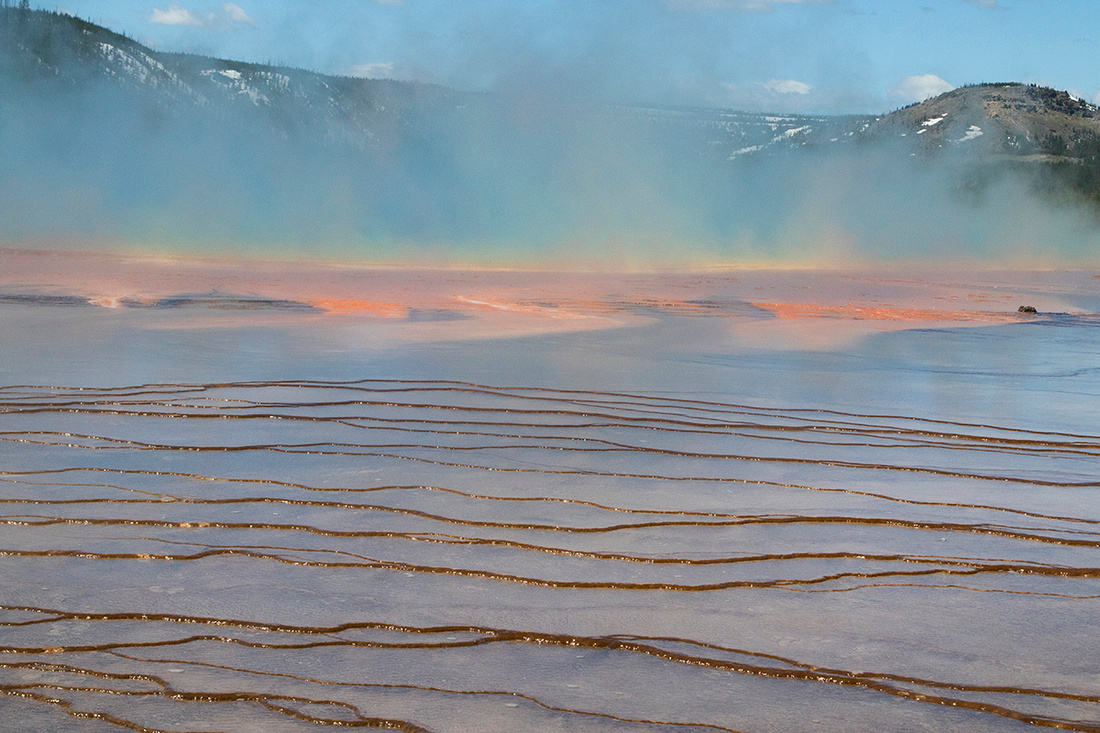
 Prismatic Pool
Prismatic Pool
I managed a few frames of a federally endangered trumpeter swan along the Firehole River.
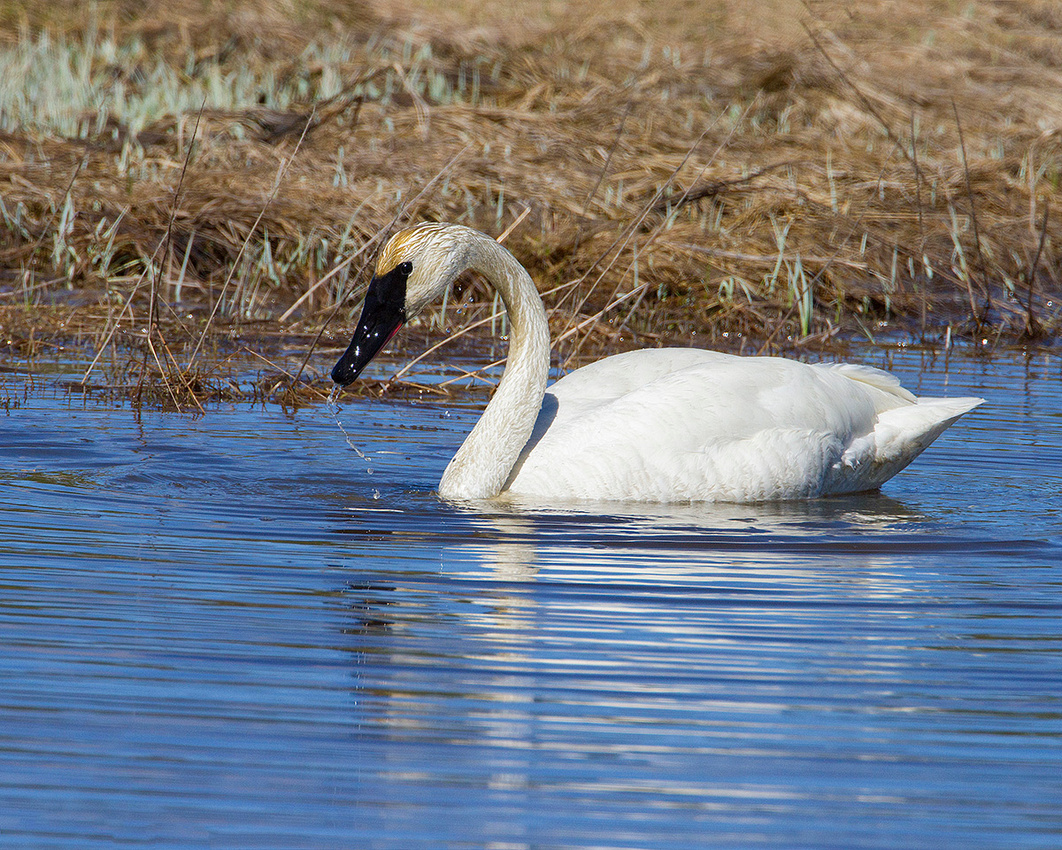
 Trumpeter Swan
Trumpeter Swan
Rain was predicted the next day, so we opted to explore Bozeman and Big Sky Montana. Rain and clouds obscured many of the views, so we visited the Museum of the Rockies. Excellent dinosaur exhibit.
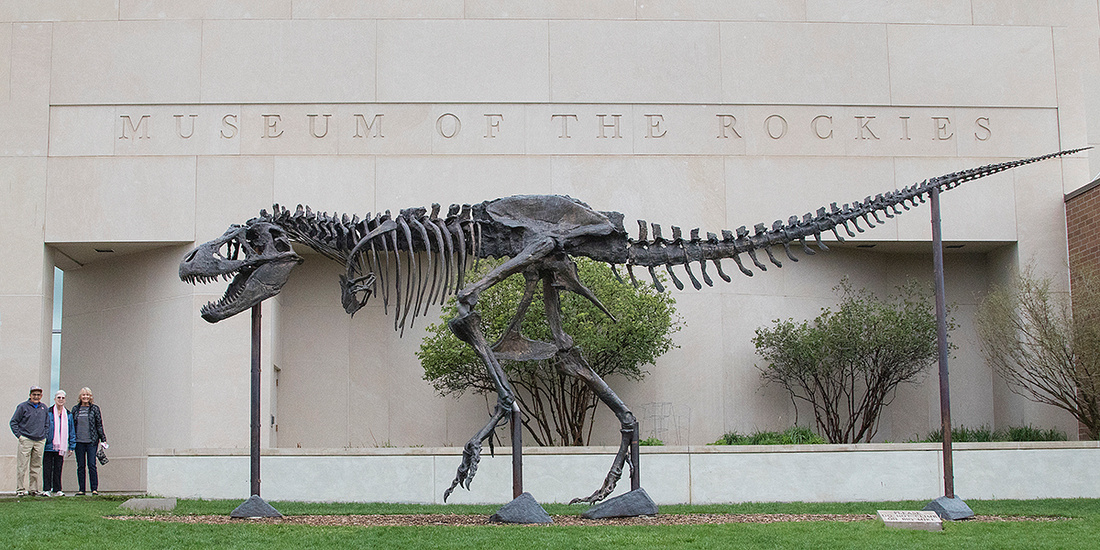
 Museum of the Rockies in Bozeman
Museum of the Rockies in Bozeman
On our last day we again toured the Lamar Valley. We found a red fox actively hunting next to the road. I followed her and grabbed a few images as she hunted all around me. A beautiful and very active photo subject.
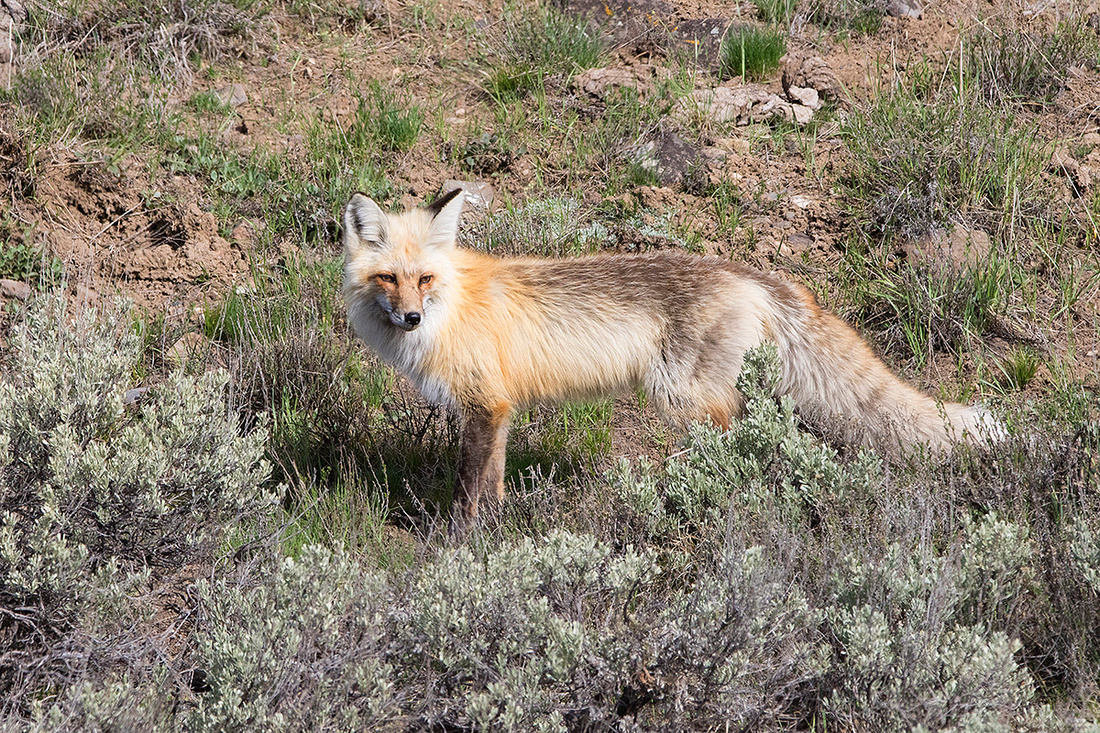
 Red Fox
Red Fox
We also observed a few female bison engaged in some form of head butting behavior.

 Cow Bison
Cow Bison
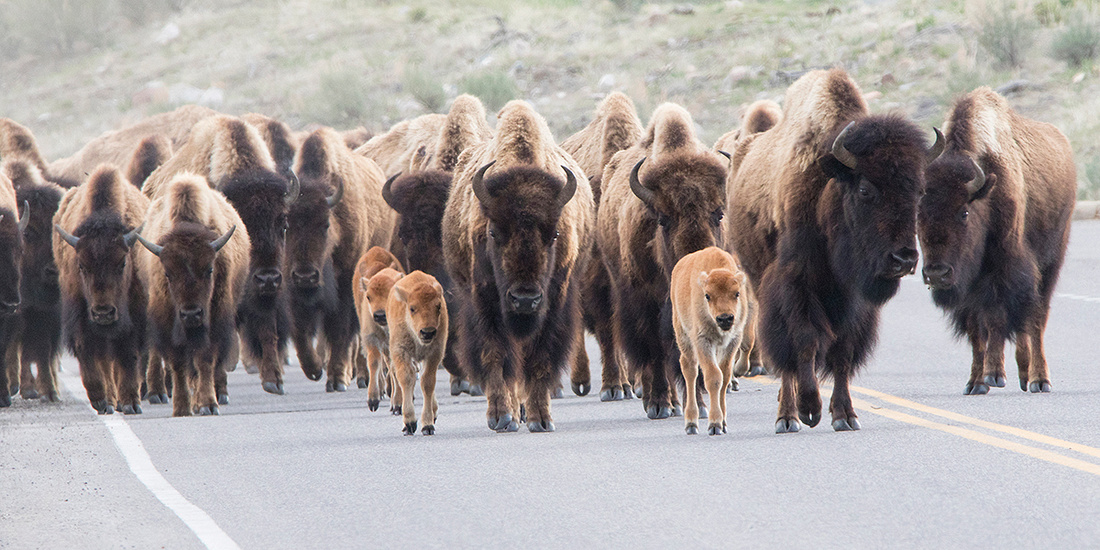
 Road Hogs
Road Hogs
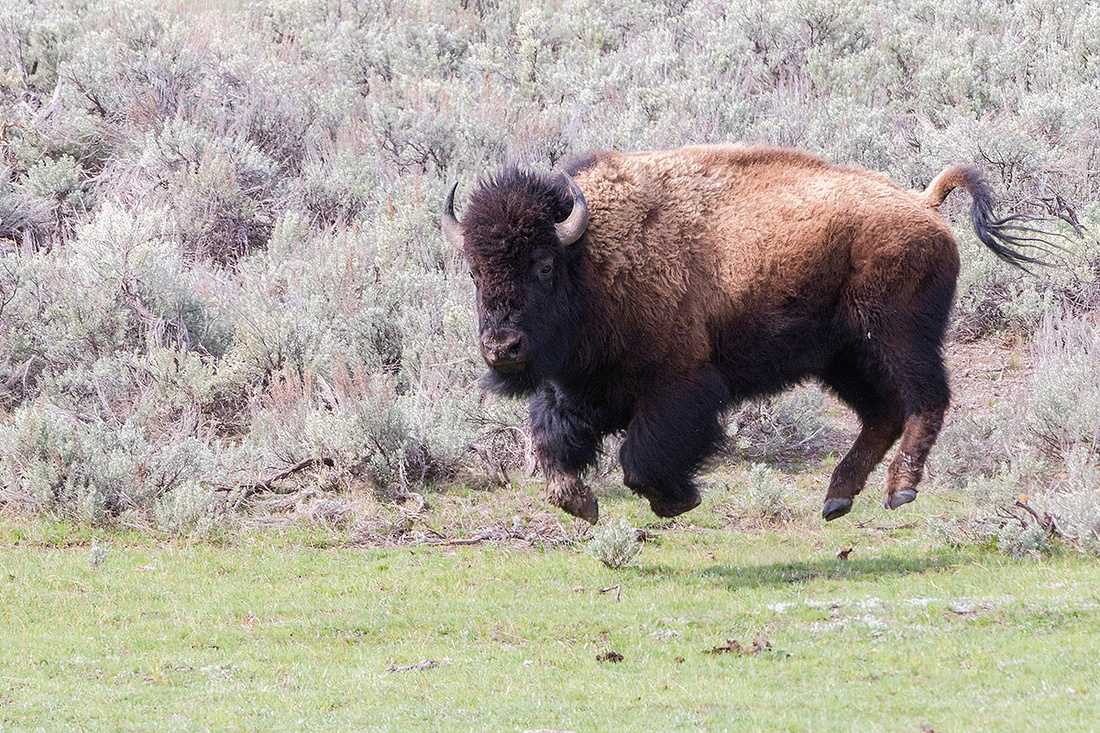
 Airbourne
Airbourne
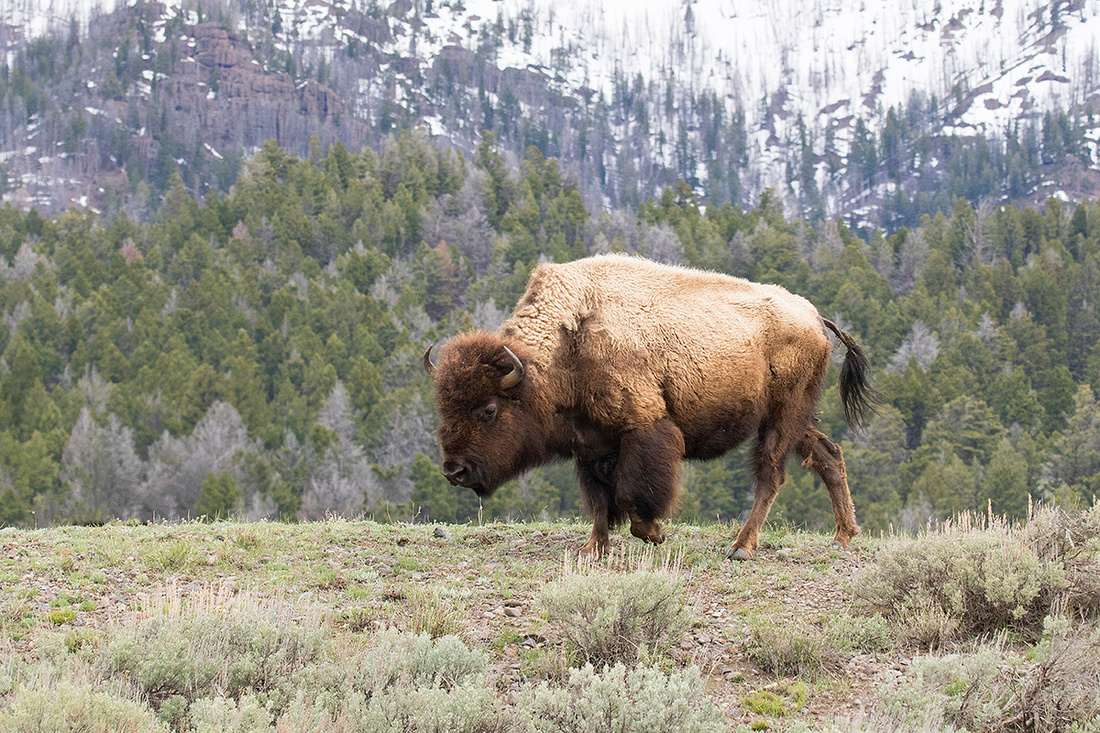
 Lone Bull
Lone Bull
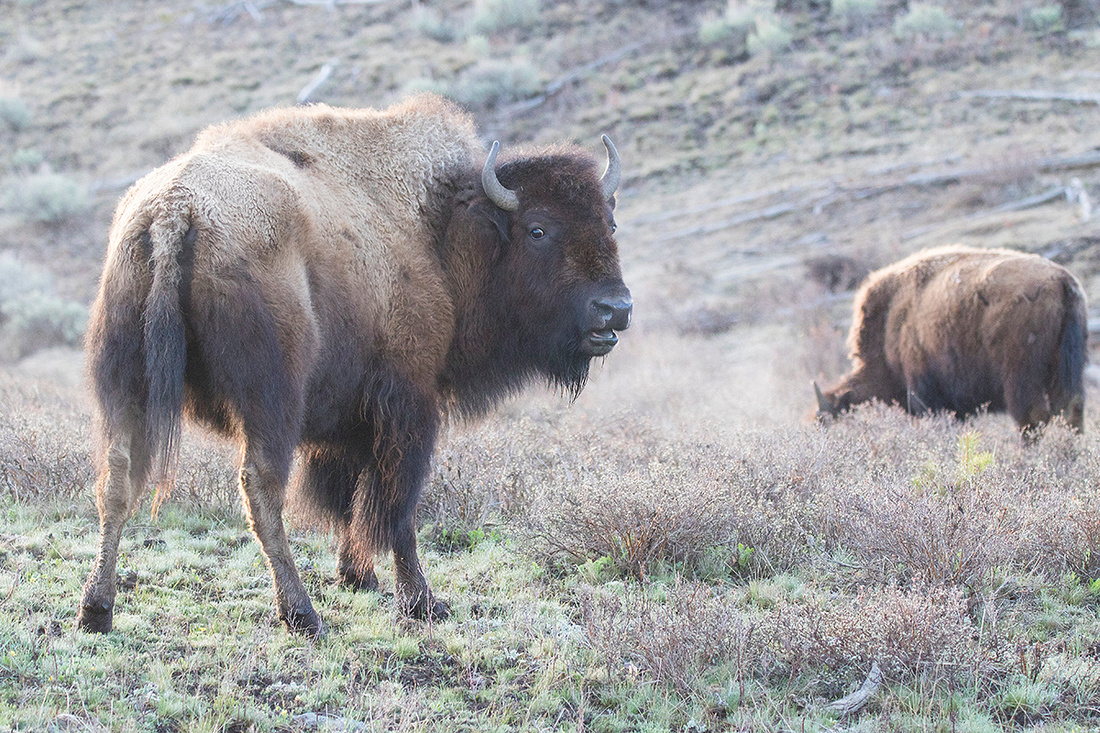
 Frosty Cow
Frosty Cow
We saw several introduced mountain goats between Pebble Creek and Cook City. All were quite distant. We watched as they appeared to easily negotiate near vertical cliffs.
Elk were not at all plentiful near the road. We saw hundreds daily, frequently at less than desirable photo distances. We were a little early for elk calving and saw no calves this trip. We saw a lone mature bull in velvet, but were unable to obtain any decent images.
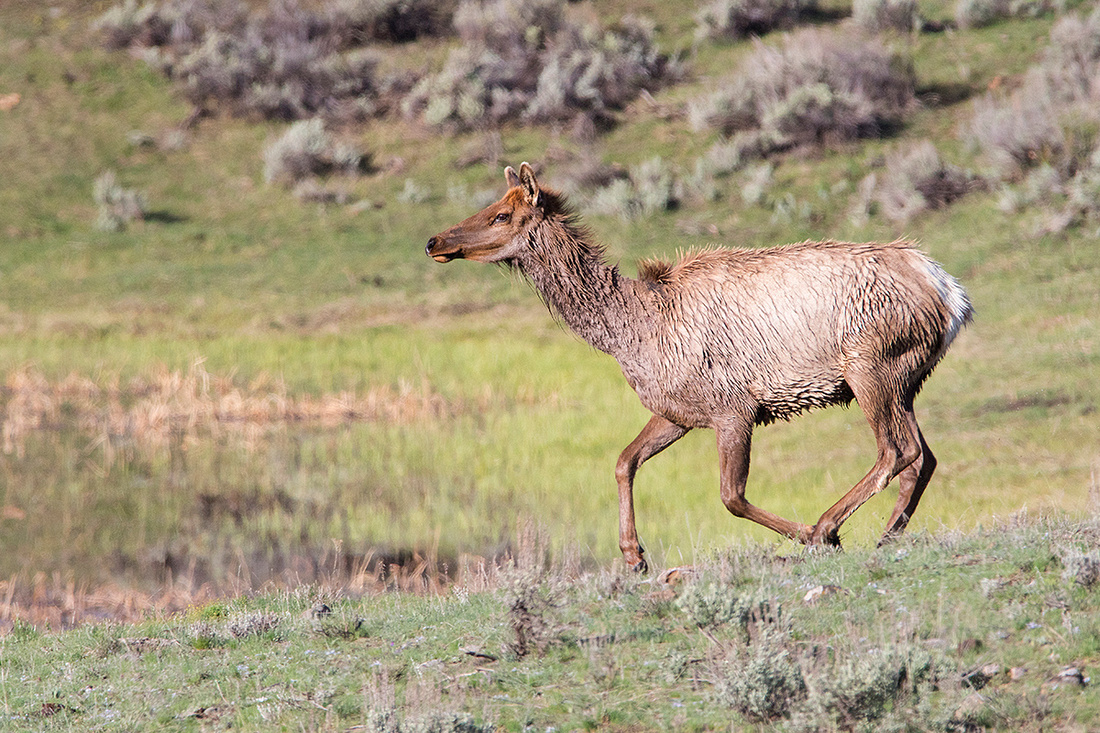
 Cow elk wet from crossing the Yellowstone River
Cow elk wet from crossing the Yellowstone River
We saw a few black bears. On previous trips in May we had seen several sows with cubs. They were hard to find on this recent trip. All that were close were collared and offered no decent photo opportunities. No cubs were observed.
We saw small groups of female big horn sheep near Yellowstone Picnic Area frequently. On our last morning we photographed a group of 14 mature big horn rams on the slope above Soda Creek. Nice light and some exceptional animals.

 Big Horn Ewe
Big Horn Ewe
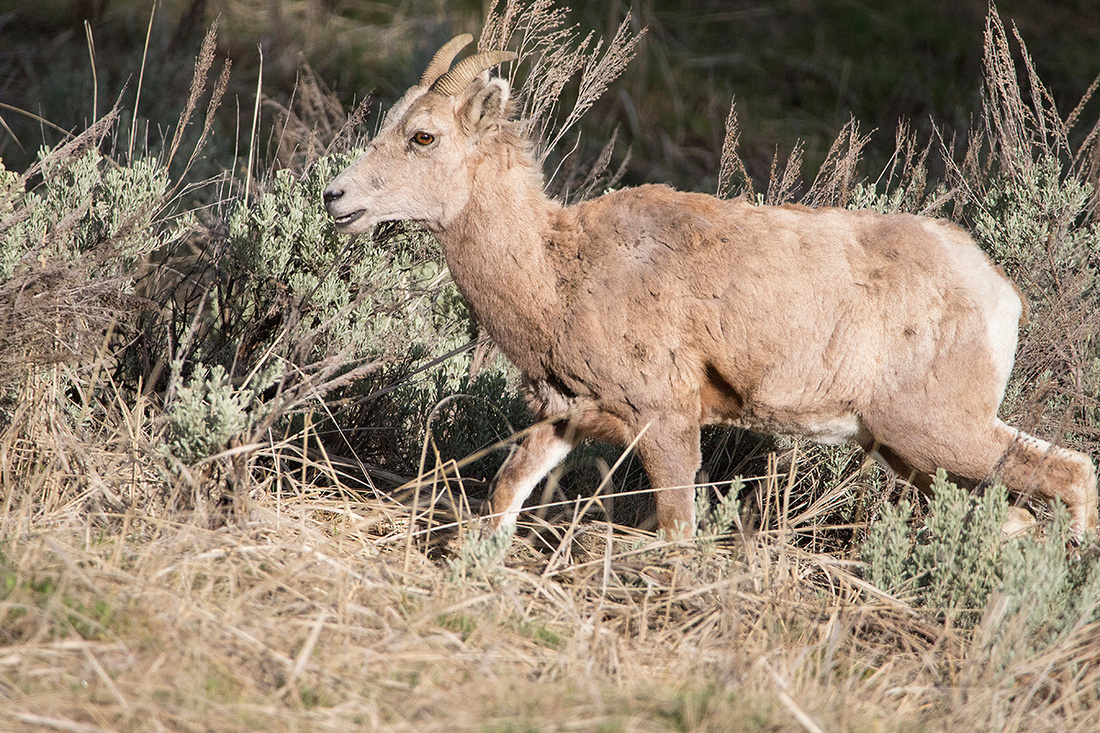
 Big Horn Ewe
Big Horn Ewe
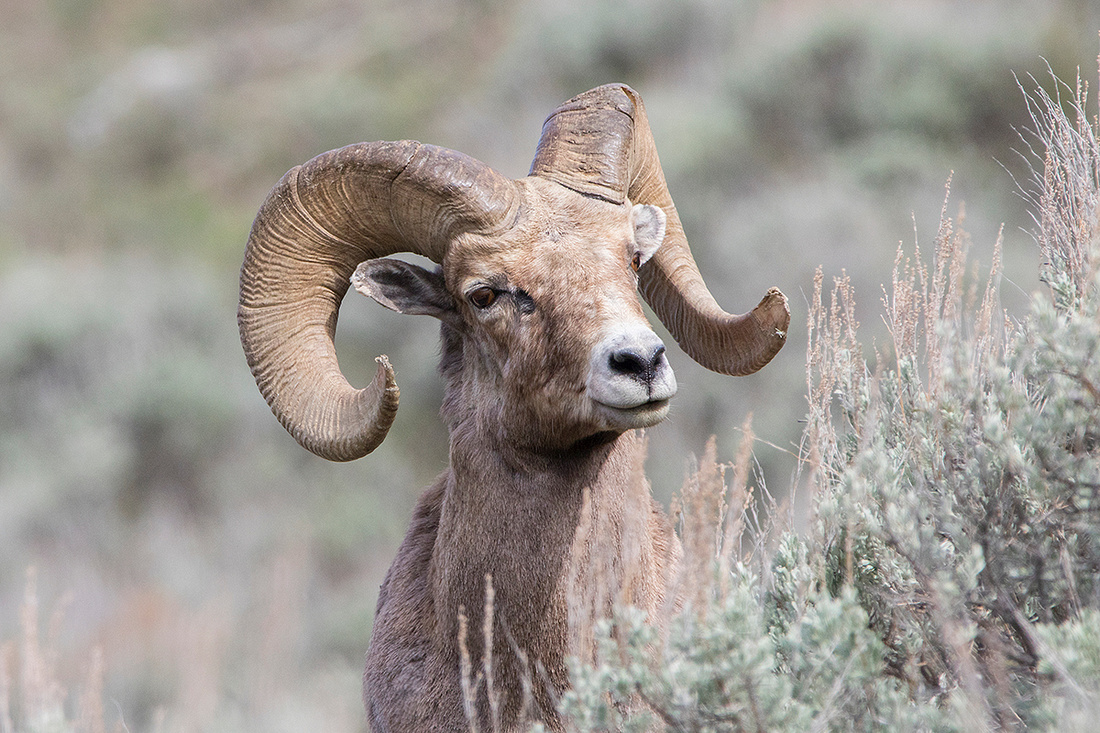
 Big Horn Ram
Big Horn Ram
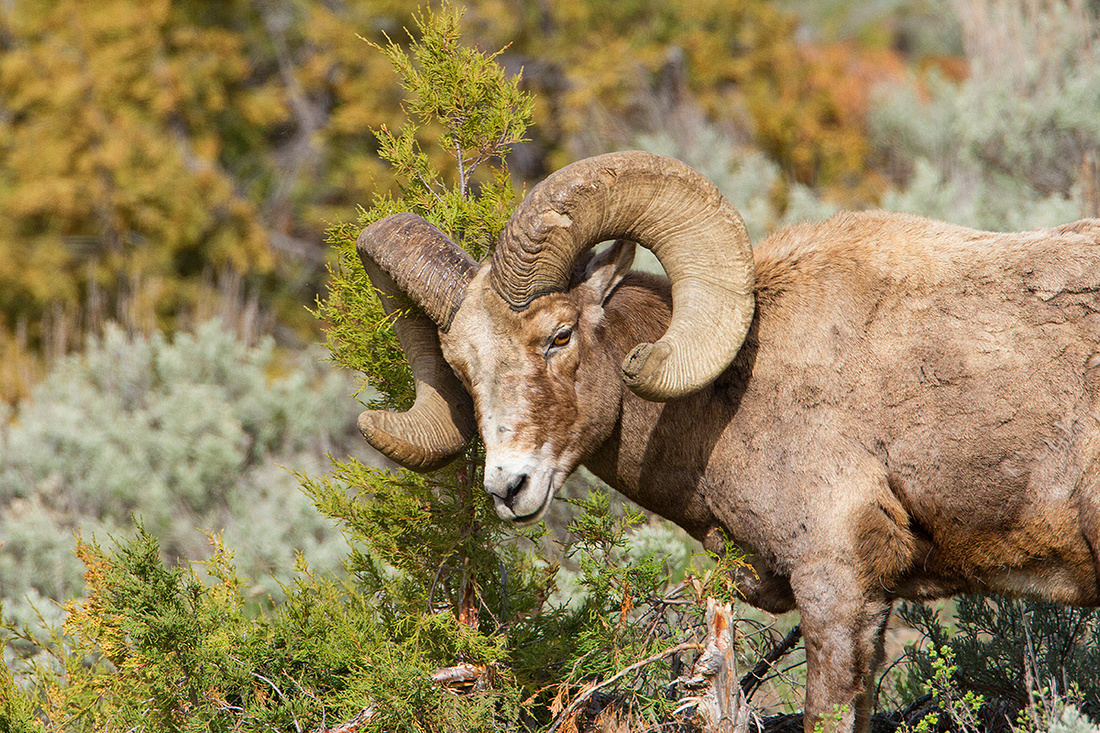
 Big Horn Ram
Big Horn Ram

 Big Horn Ram
Big Horn Ram
My parents were keen to see a moose and and we finally found a scraggly cow near sunset on the last evening. Always a difficult species to find in the park. We managed in seven days to get good looks at all the major wildlife species in the park including mule and white-tailed deer.


I recommend visiting in early May, right at or before the official park opening. Crowds (except at bear jams) were relatively light, but definitely increased daily. We were lucky with the weather. It can be quite twitchy in May.
Mexico/Belize 2018
We visited the Playa Del Carmen area of Mexico and Belize in mid-March. For the Playa Del Carmen portion of the trip we went through Apple Vacations and stayed at an enormous all-inclusive beachside resort. I believe the resort had something like 1500 rooms with numerous pools, restaurants, and bars. Visitors were primarily European. The weather was excellent and we spent the majority of the week relaxing at the resort. We took a day trip to the Mayan archeological site at Chichen Itsa, visited a cenote, and spent an afternoon in Playa Del Carmen. Wildlife photography options at the resort were limited to a very narrow portion of intact habitat between our resort and the neighboring resort. However, this area had decent morning light and some interesting species.
The photo stars of the resort were a huge troop of white-nosed coati. We saw up to 35 at one time foraging on the lawns of the resorts. They were extremely tame and were accomplished dumpster divers.
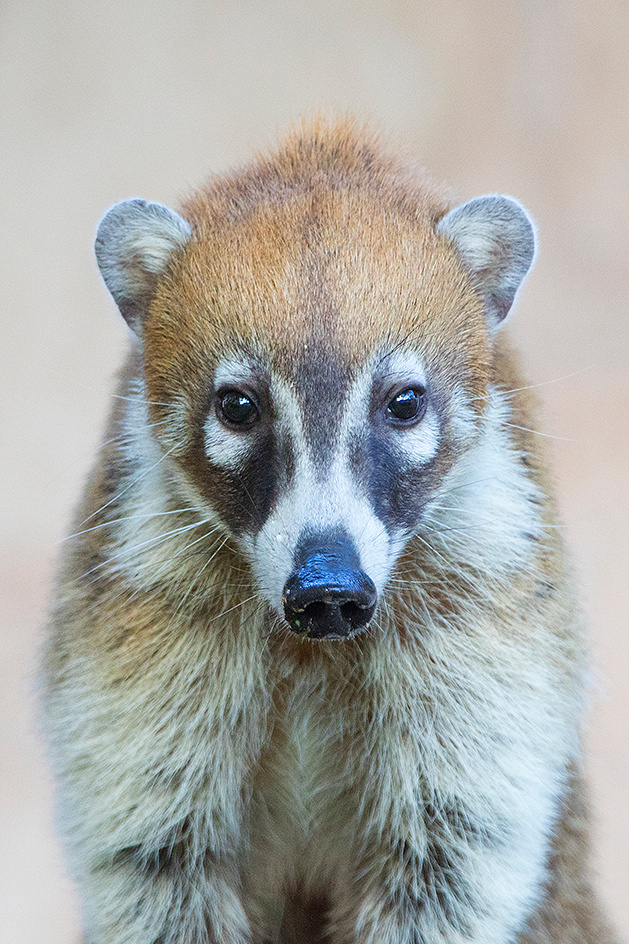

White-Nosed Coati Mug Shot
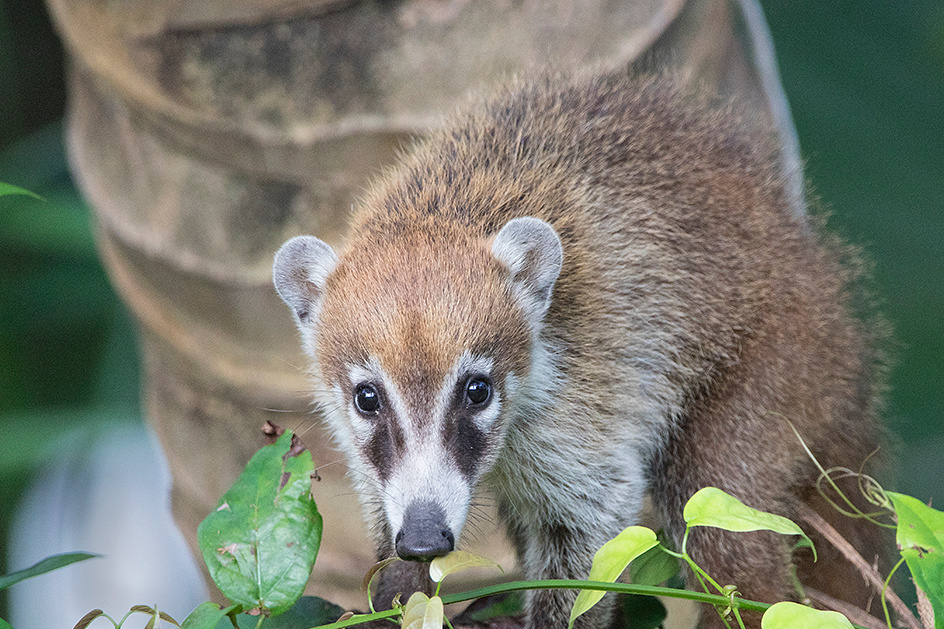
 Young White-Nosed Coati
Young White-Nosed Coati
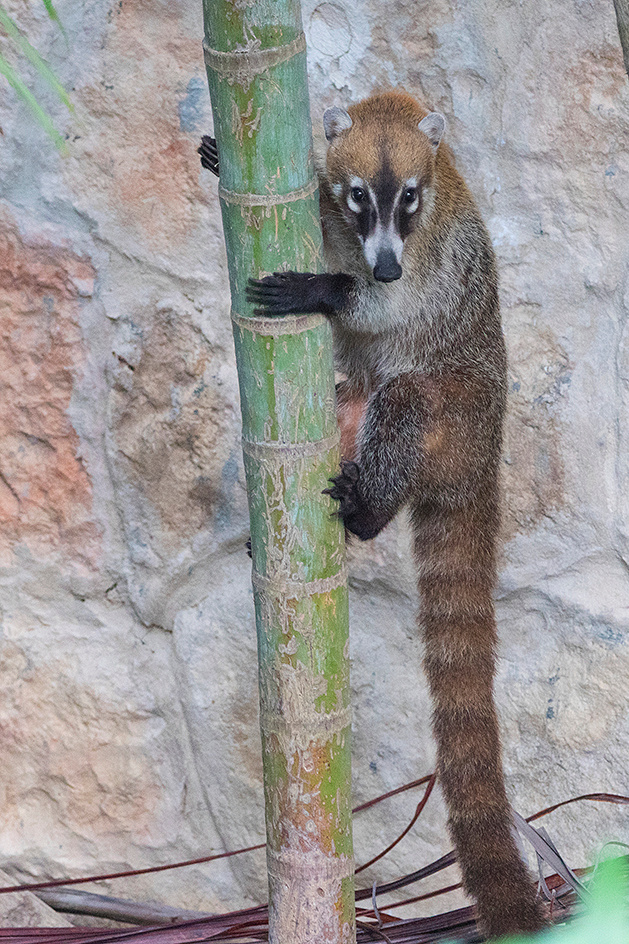

Tree Hugger

 White-Nosed Coati
White-Nosed Coati
I was fortunate to photograph a golden-fronted woodpecker in warm morning light.


Golden-Fronted Woodpecker
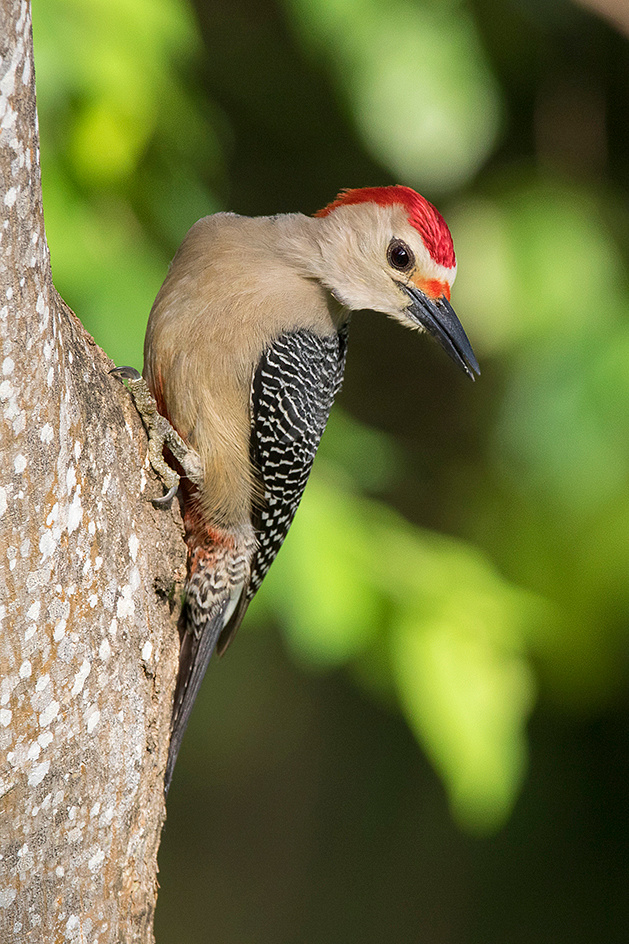

Golden-Fronted Woodpecker
I also encountered a "life bird" on the resort grounds. A life bird is one that I have never seen before and was added to my life list. This lifer was the Rufous-Naped Woodrail.

 Rufous-Naped Woodrail
Rufous-Naped Woodrail
A group of three adult spider monkeys was observed on almost every morning. I was able to capture a few decent images with relatively unobstructed views in good light. A better photographer would not have cut off the tail.
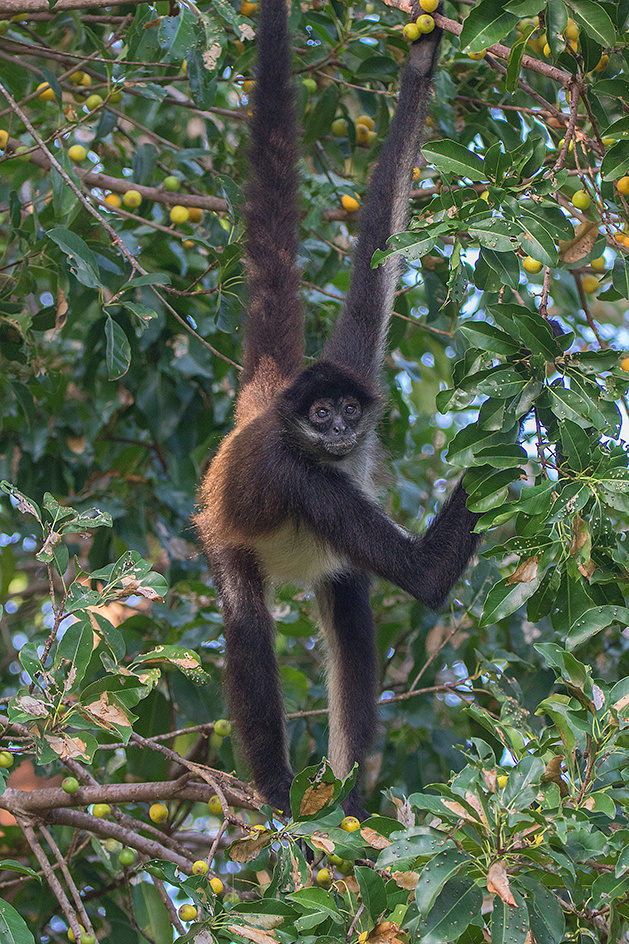

Spider Monkey
I had some excellent opportunities on ferruginous pygmy owls. These owls are tiny (approximately 6-7 inches in length) and have some of the best eye contact in the avian world.
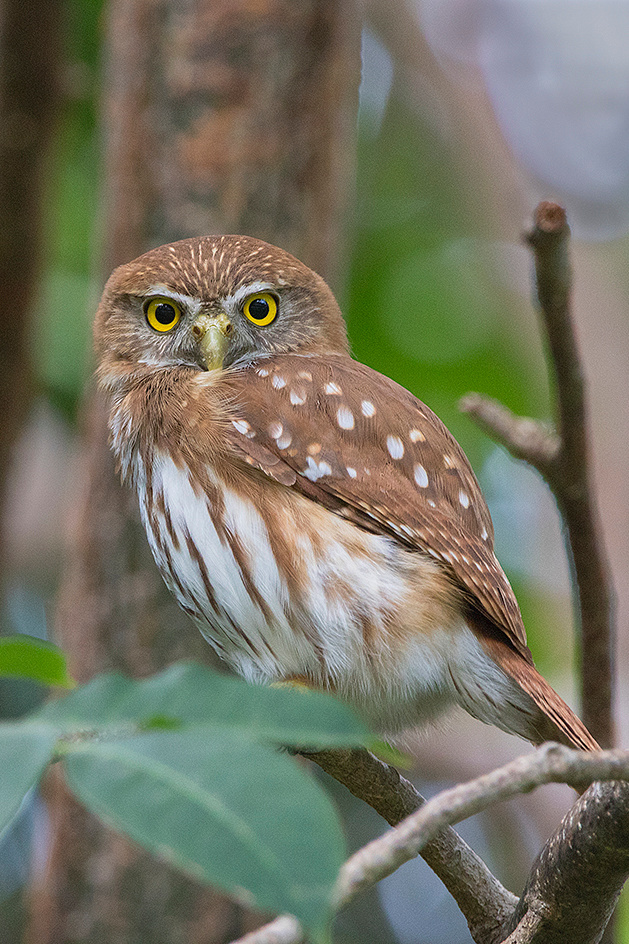

Ferruginous Pygmy Owl
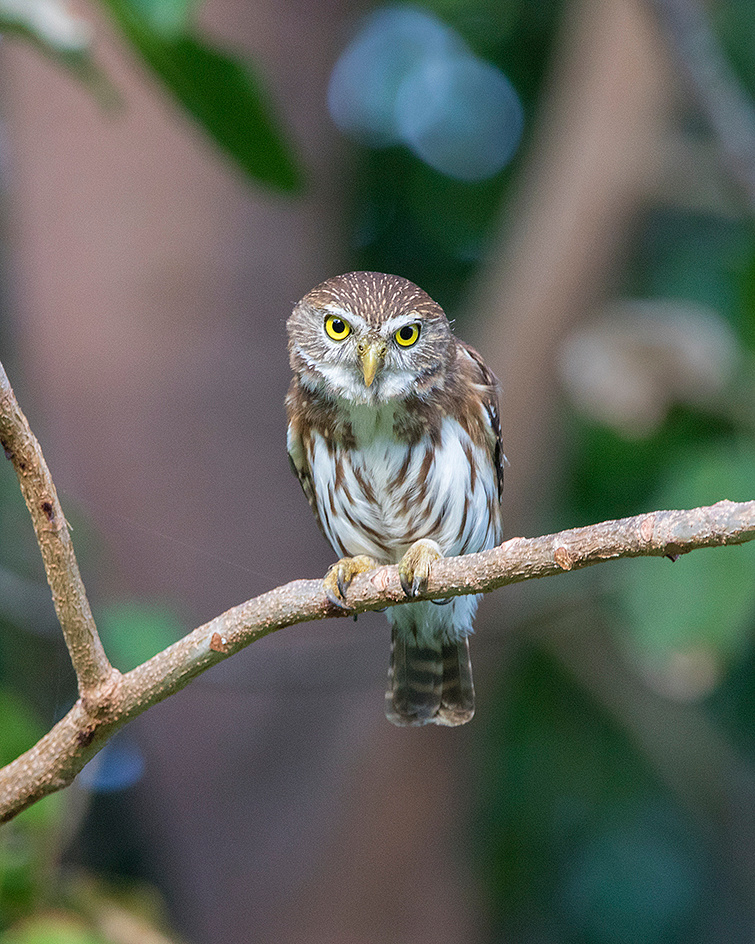

Ferruginous Pygmy Owl
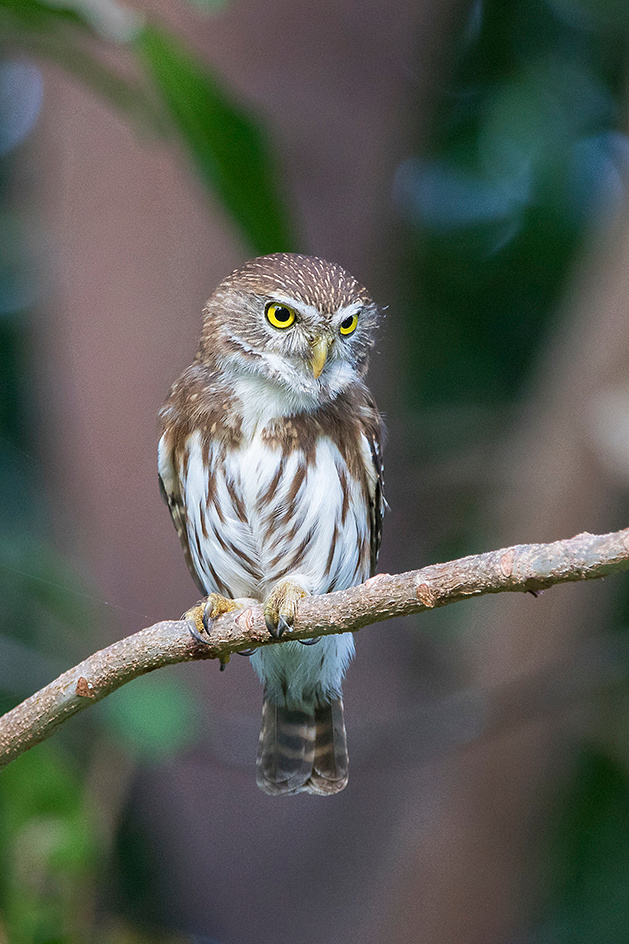

Ferruginous Pygmy Owl
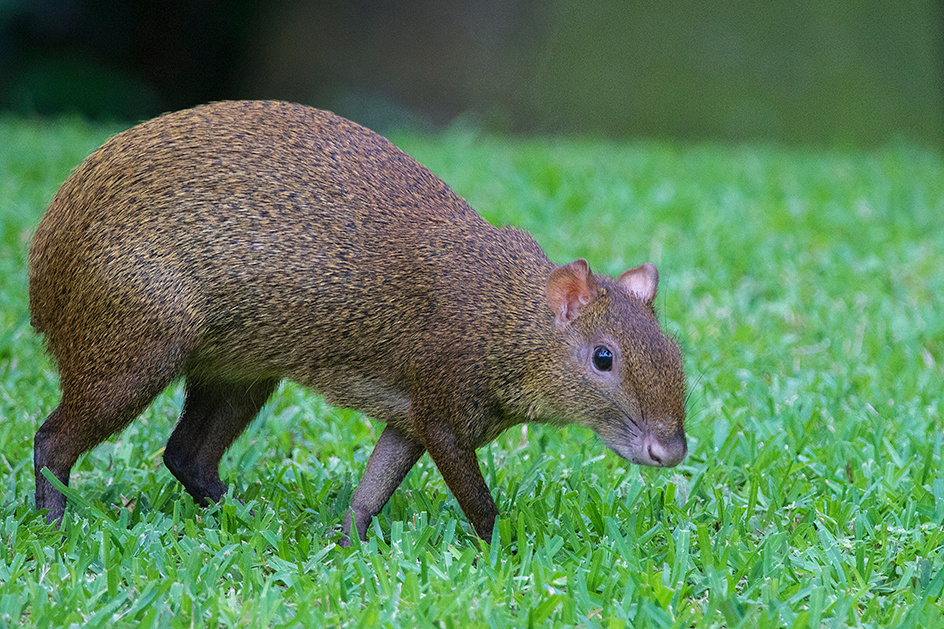
 Agouti
Agouti
Agouti are large rabbit sized rodents. They were common in the edge habitats very early in the morning.
After a very relaxing week, we traveled from Playa Del Carmen to Belize City on the ADO express bus. ADO is a comfortable and economical way to see the country if you are not in a hurry. Our Belize birding guide (Robert) met us at the Belize City bus station and transported us back to Crooked Tree Lodge for the 2nd week of our trip. Be aware that the bus station is not located in the best part of Belize City and I would avoid night time arrivals or departures. Robert made stops on the way to the lodge to pick up a few species, including my first great black hawk. During our hour and a half drive we picked up 30 or more species.
Crooked Tree Lodge, located on the lake, is just outside Crooked Tree Village. The entire area is an Audubon Sanctuary. Apparently, Audubon is not overly popular with the villagers as their building in Crooked Tree Village was recently burned to the ground.
Mick and Angie, the owners of Crooked Tree Lodge, were wonderful hosts. The food was simply amazing. Much better than standard eco-lodge fare. Meals are served communally, so we were able to get to know the other guests. Becky even participated in an impromptu yoga session one afternoon with a group of wonderful women also visiting the lodge. Mick maintains a stocked bar and we enjoyed a few of the local beers (Belikin) each evening. The cabanas are basic, clean, and cozy. Be aware that the cabanas lack air conditioning and window screens. Mosquitos were not much of a problem, and we had a cooling breeze off the lake day and night. We ventured out with Robert and two evening guided bird walks and one morning boat birding trip. These excursions helped my species list, but I was unable to get very many good photos. Fortunately, the lodge grounds and surrounding areas offered excellent photo opportunities.
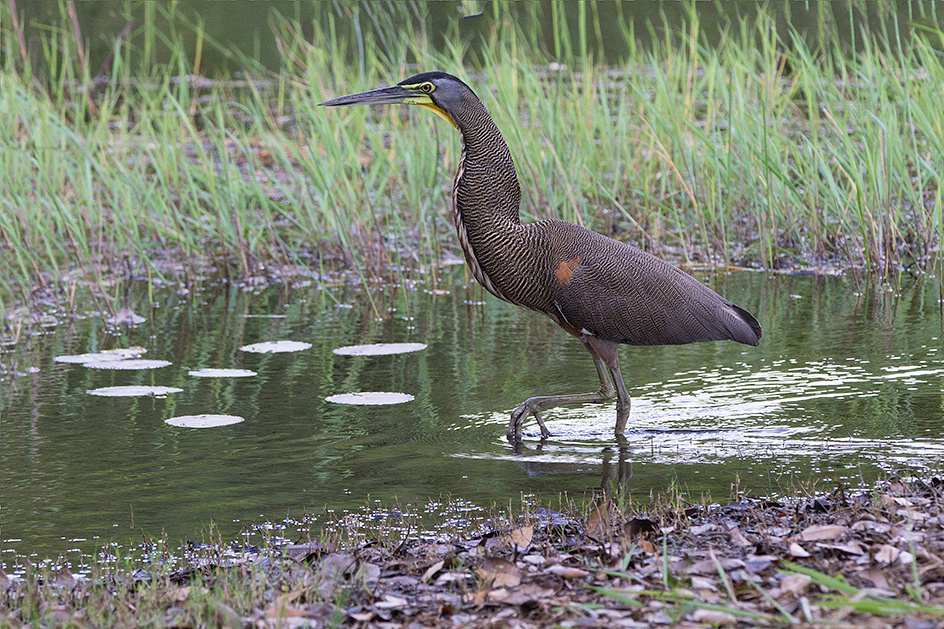
 Bare-Throated Tiger Heron
Bare-Throated Tiger Heron

 Bare-Throated Tiger Heron
Bare-Throated Tiger Heron
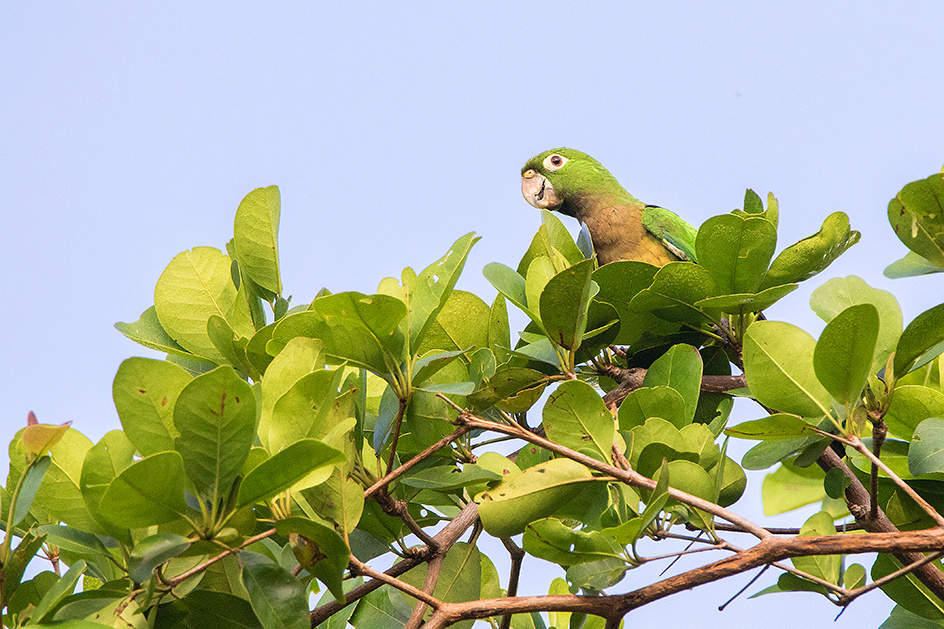
 Aztec Parakeet
Aztec Parakeet
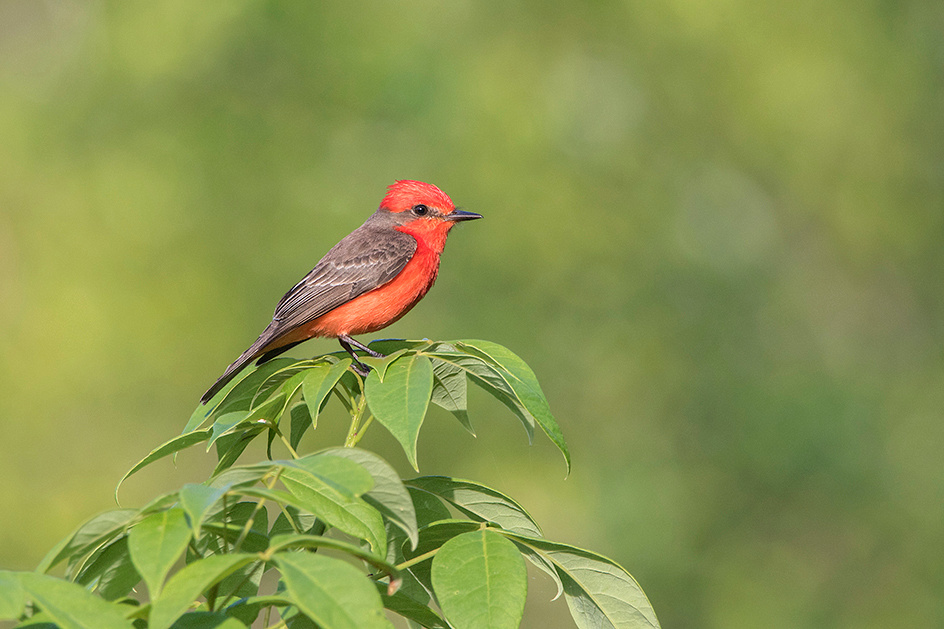
 Vermillion Flycatcher
Vermillion Flycatcher
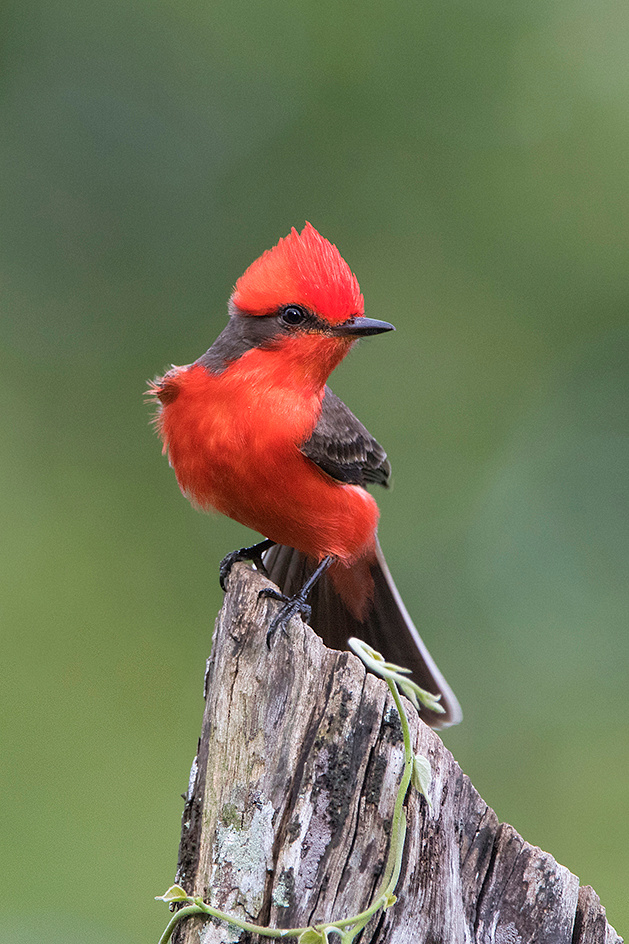

Vermillion Flycatcher
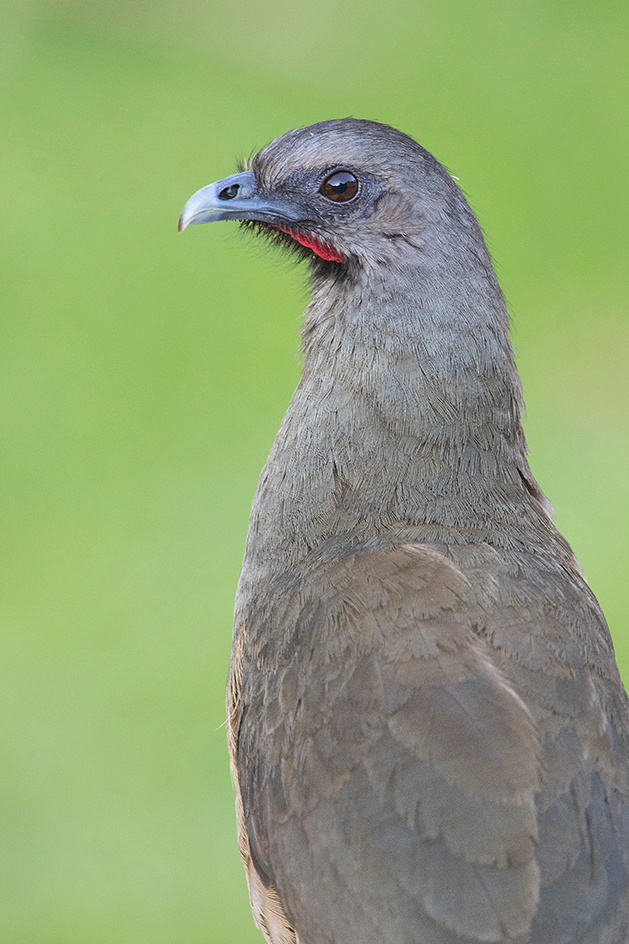

Plain Chachalaca

 Common Ground Dove
Common Ground Dove
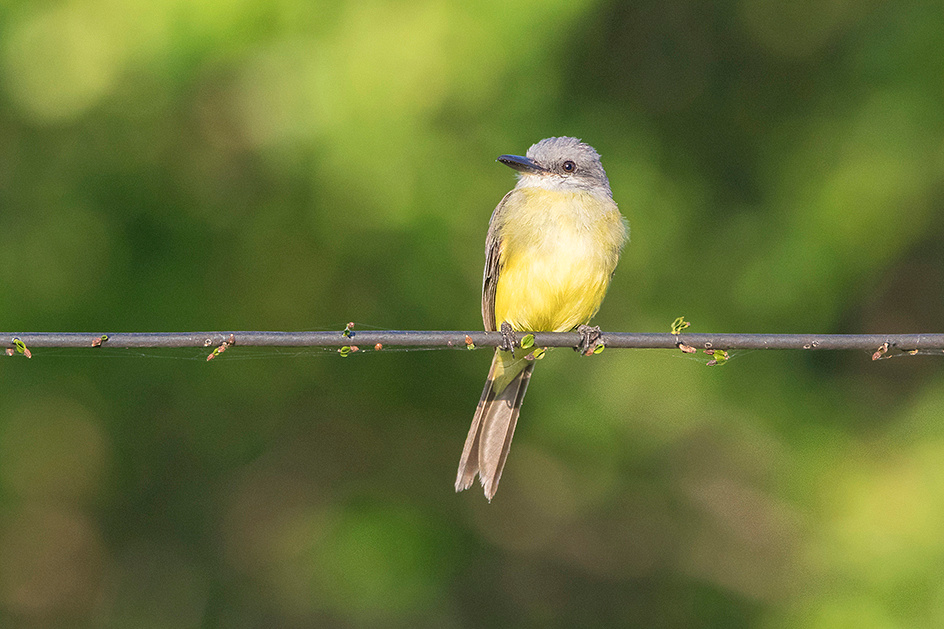
 Tropical Kingbird
Tropical Kingbird

 Clay-Colored Thrush
Clay-Colored Thrush

 Roadside Hawk
Roadside Hawk

 White-Fronted Parrot
White-Fronted Parrot

 Gray Catbird
Gray Catbird
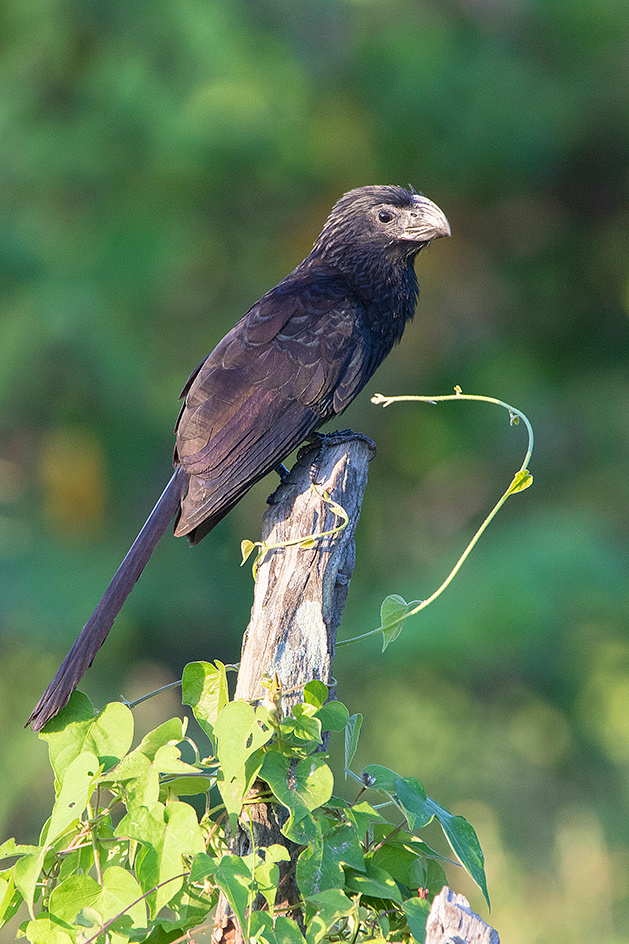

Groove-Billed Ani


Groove-Billed Ani


Northern Jacana
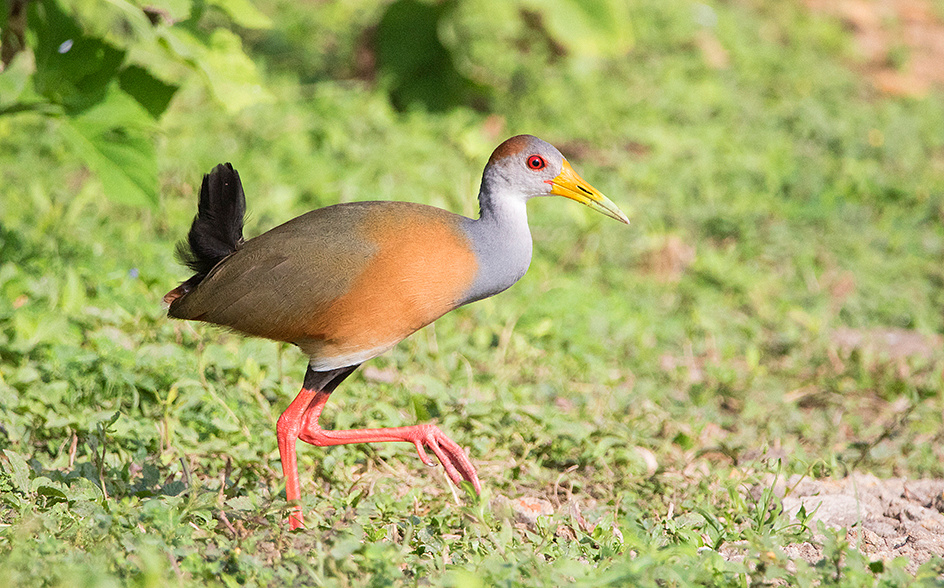
 Gray-Necked Woodrail
Gray-Necked Woodrail

 Tropical Mockingbird
Tropical Mockingbird
One of my goals was to capture a few warblers, especially those not found on the west coast. Warblers are difficult to photograph. They are small and quick. I had a very low keeper rate, but captured a few useable images.
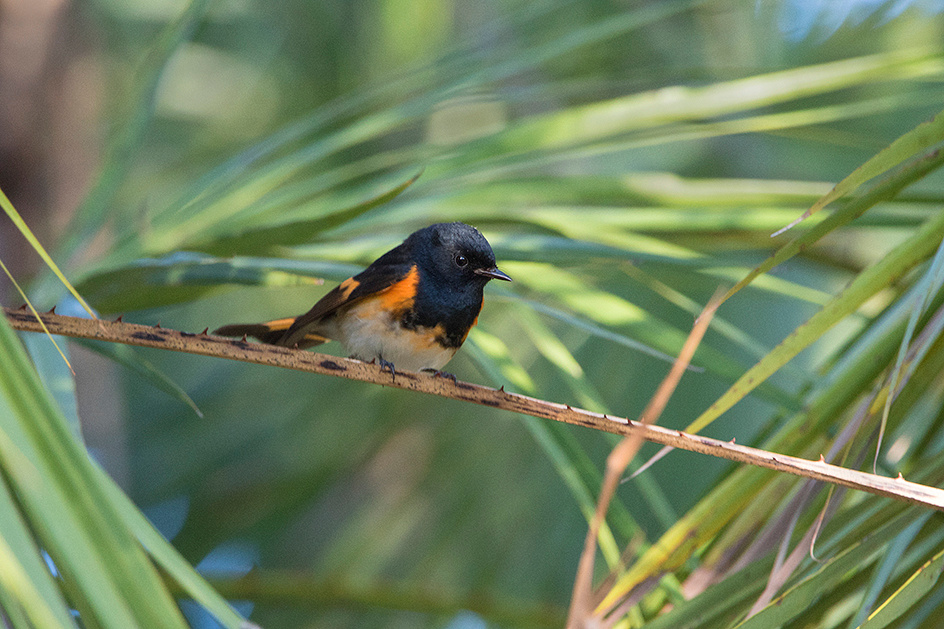
 American Redstart
American Redstart
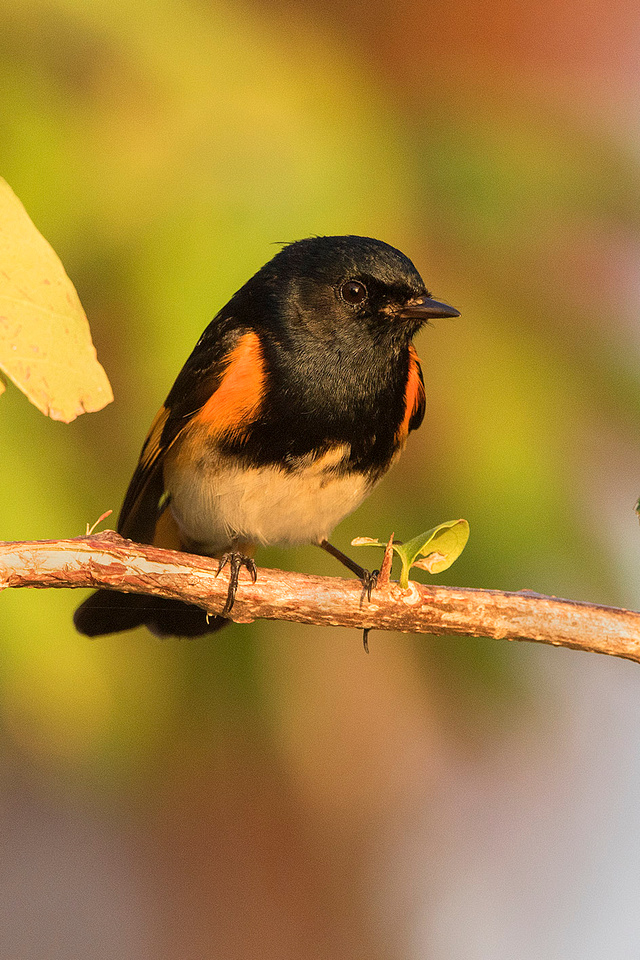

American Redstart
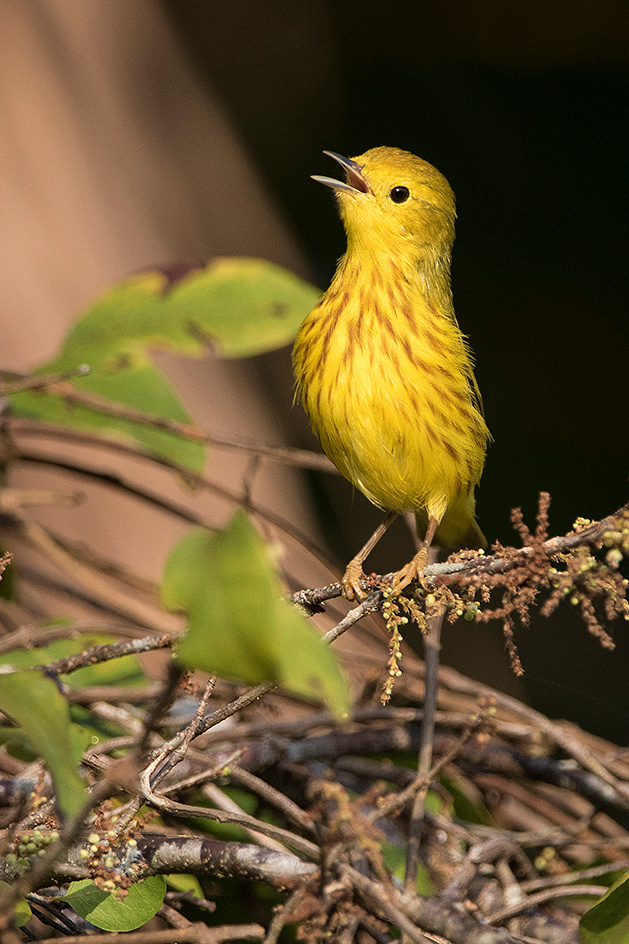

Yellow Warbler
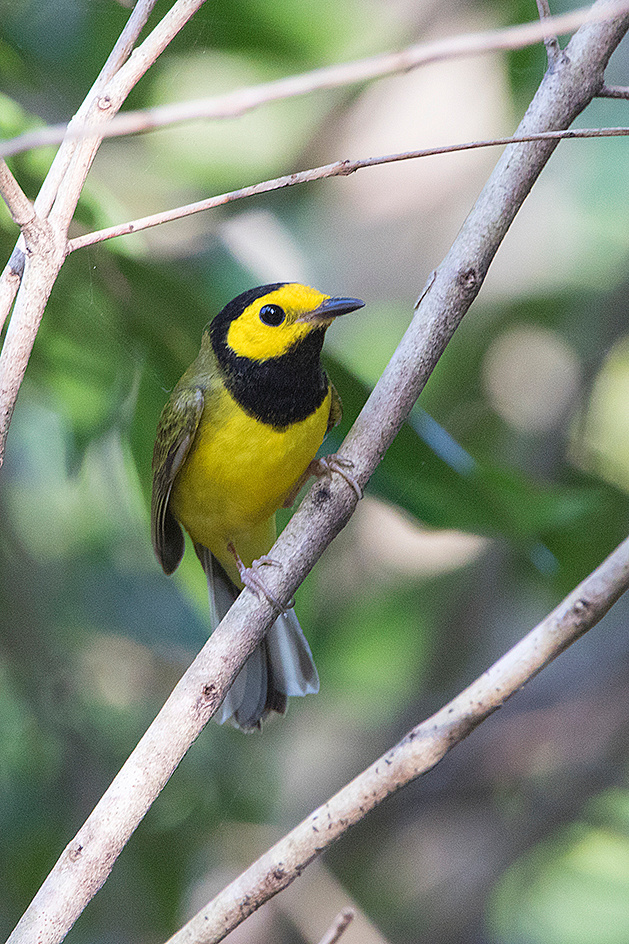

Hooded Warbler
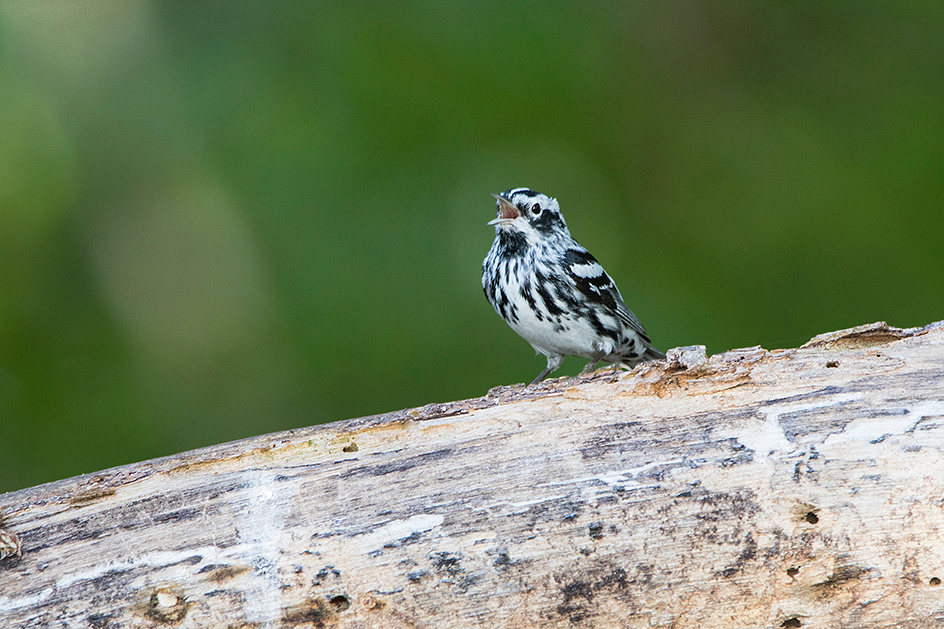
 Black and White Warbler
Black and White Warbler
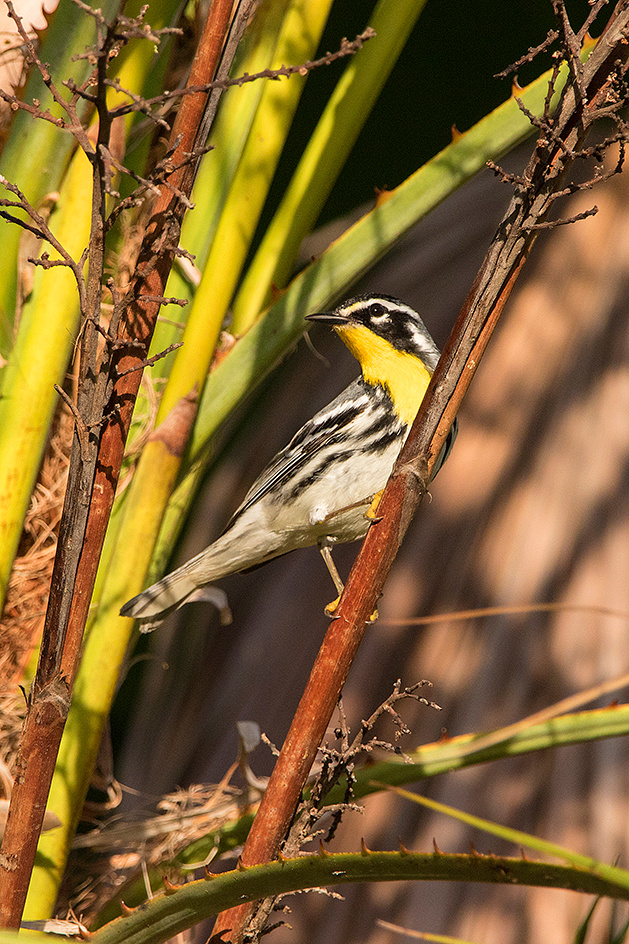

Yellow-Throated Warbler
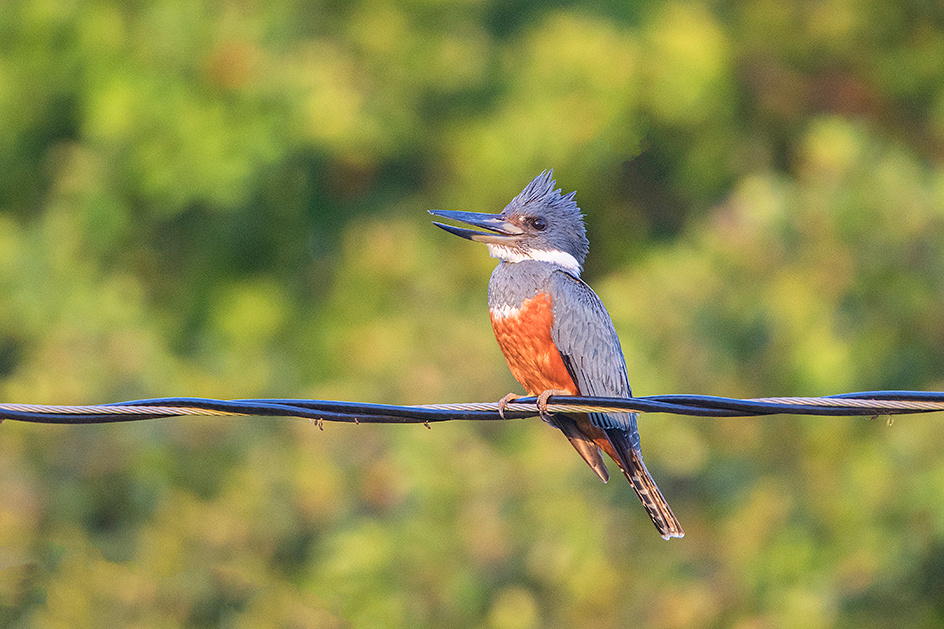
 Ringed Kingfisher
Ringed Kingfisher
I normally avoid images which include obviously man-made items. However, the light and pose were so good on this ringed kingfisher that I decided to keep this one.
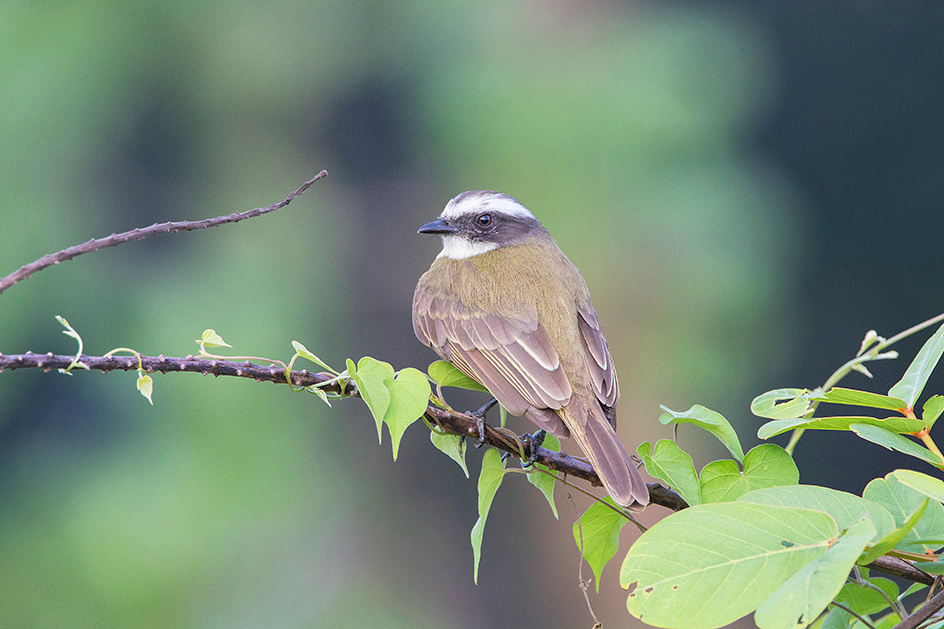
 Social Flycatcher
Social Flycatcher
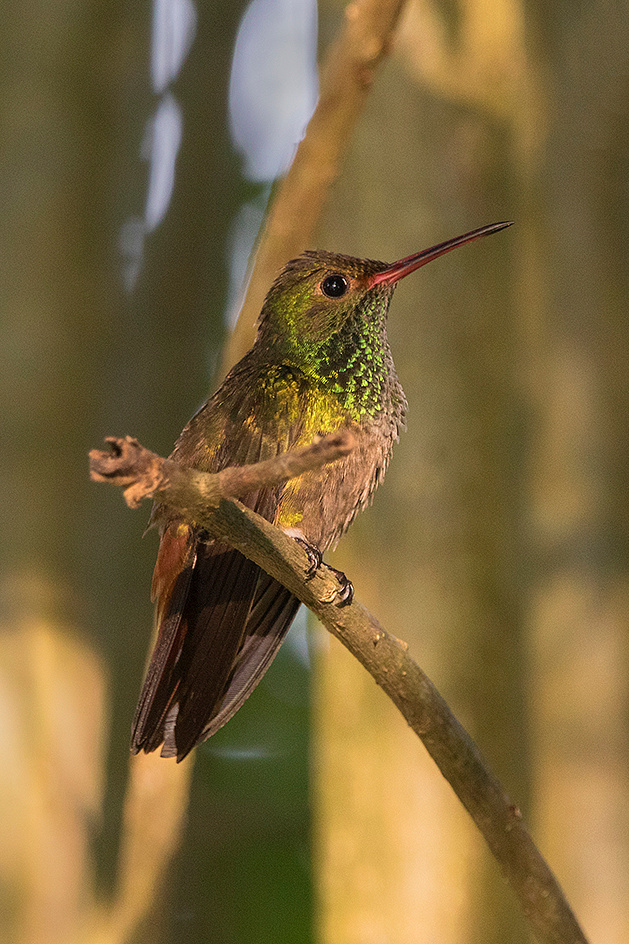

Rufous-Tailed Hummingbird
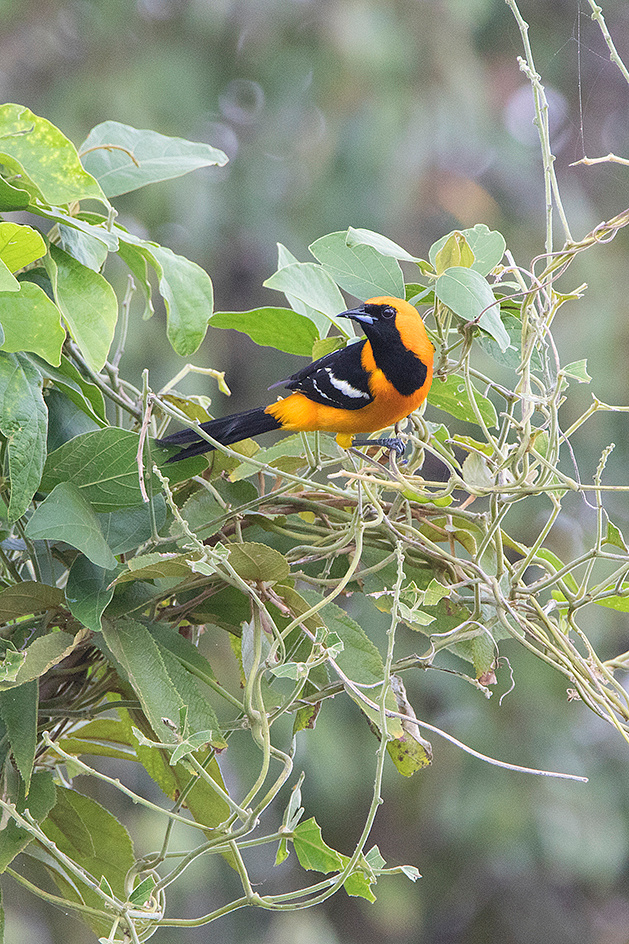

Hooded Oriole (male)

 Snail Kite (Female)
Snail Kite (Female)
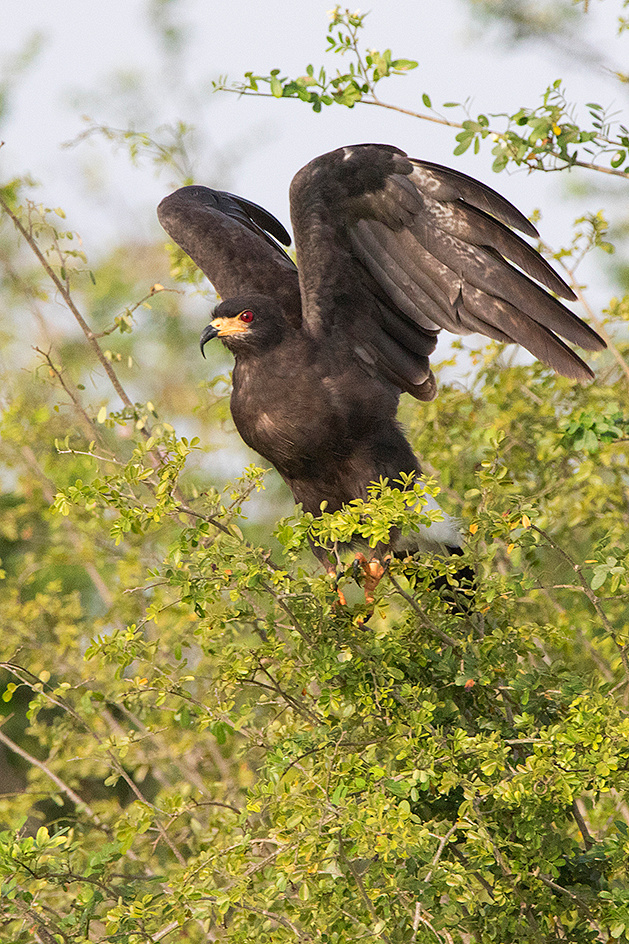

Snail Kite (Male)
I highly recommend Cooked Tree Lodge as a photo venue. Robert is an excellent guide and Angie and Mick could not be more welcoming and accommodating hosts.
We took the ADO bus back to the Cancun Airport. I am not sure how they are able to operate this express bus as we never had more than 11 people on the bus, and frequently less than six. Be aware that the published bus schedule is based in some alternate reality. We were over 3 hours late arriving at the airport. Fortunately, we still had plenty of time to catch our flight.
Another enjoyable trip.